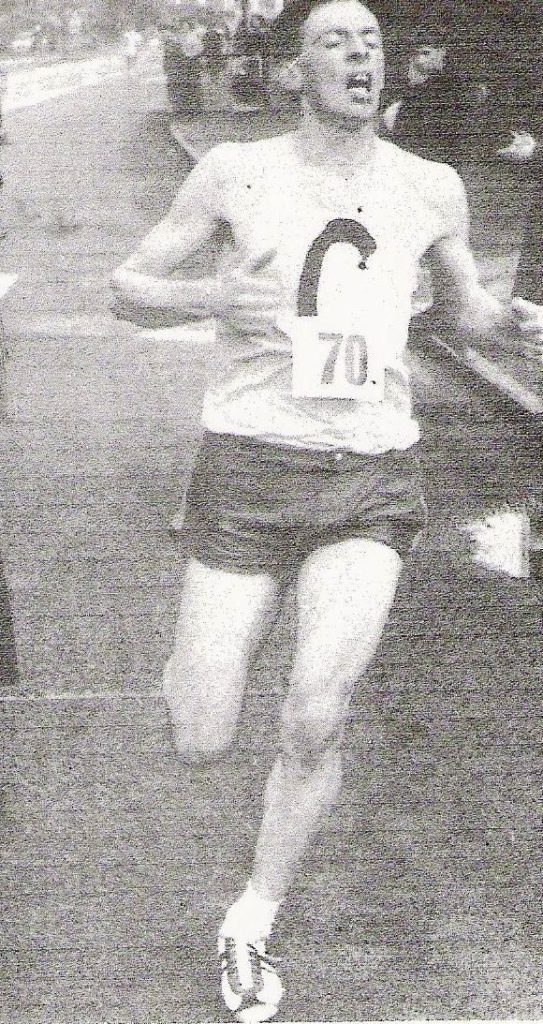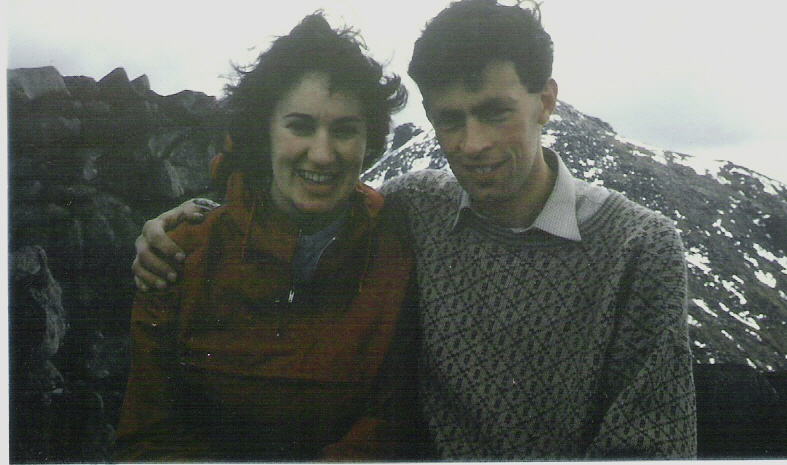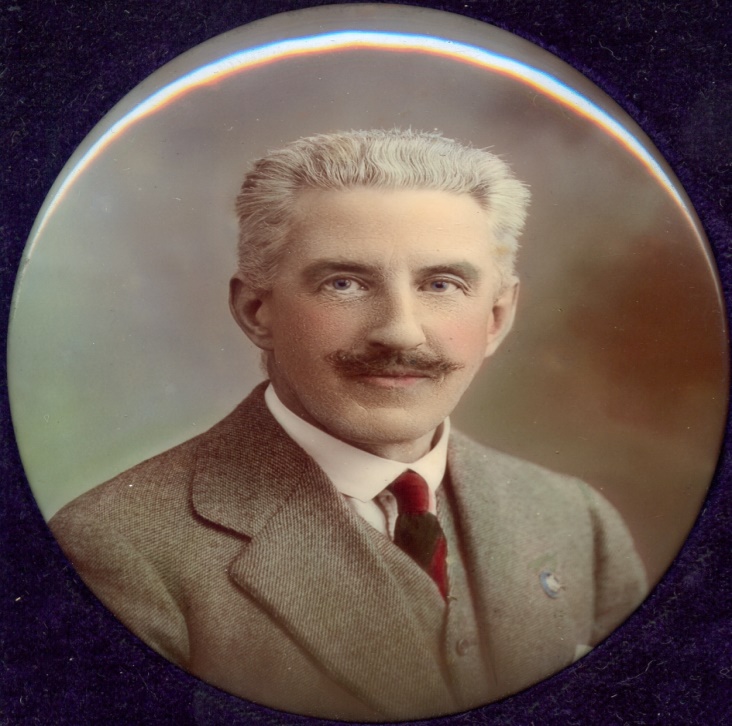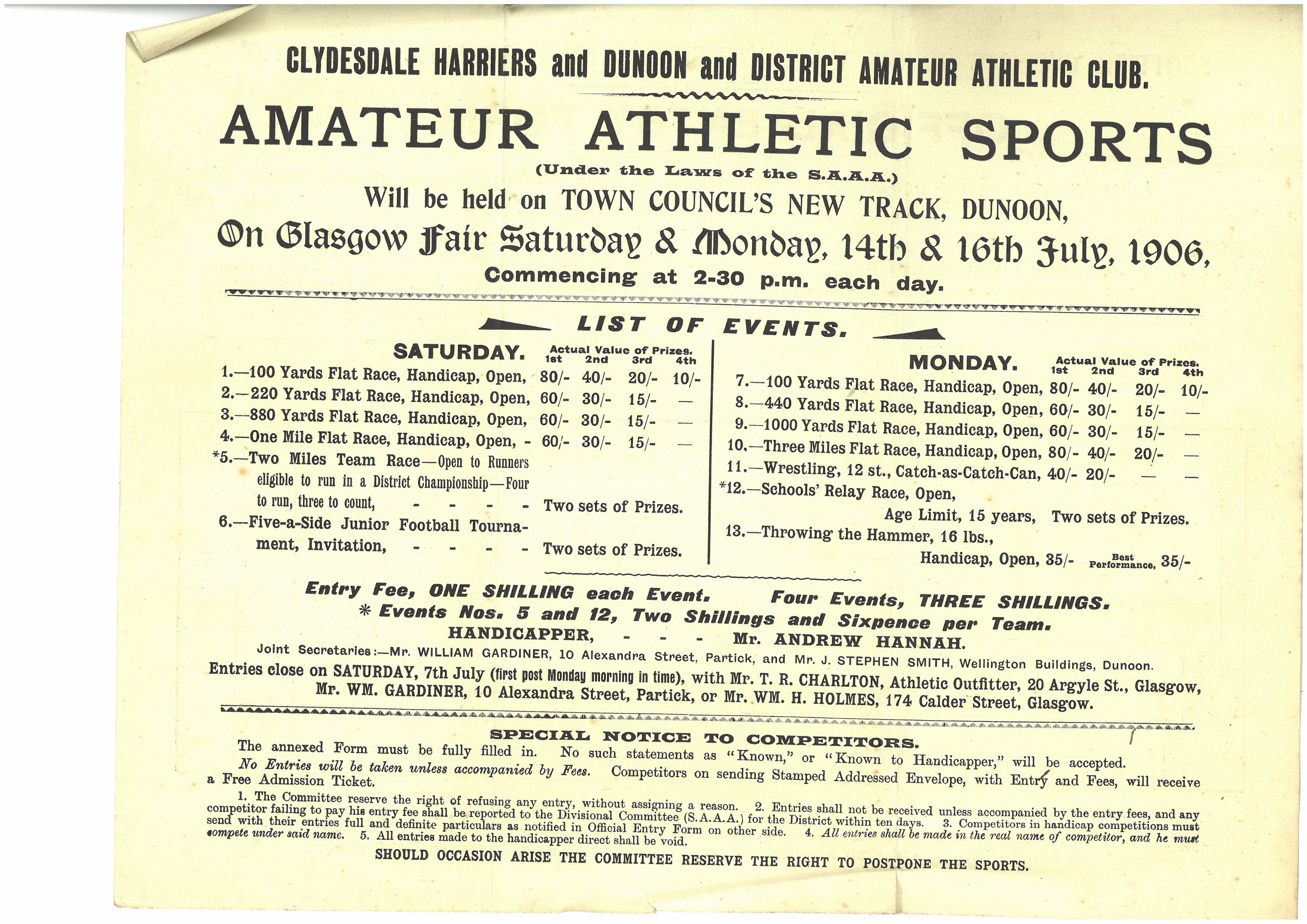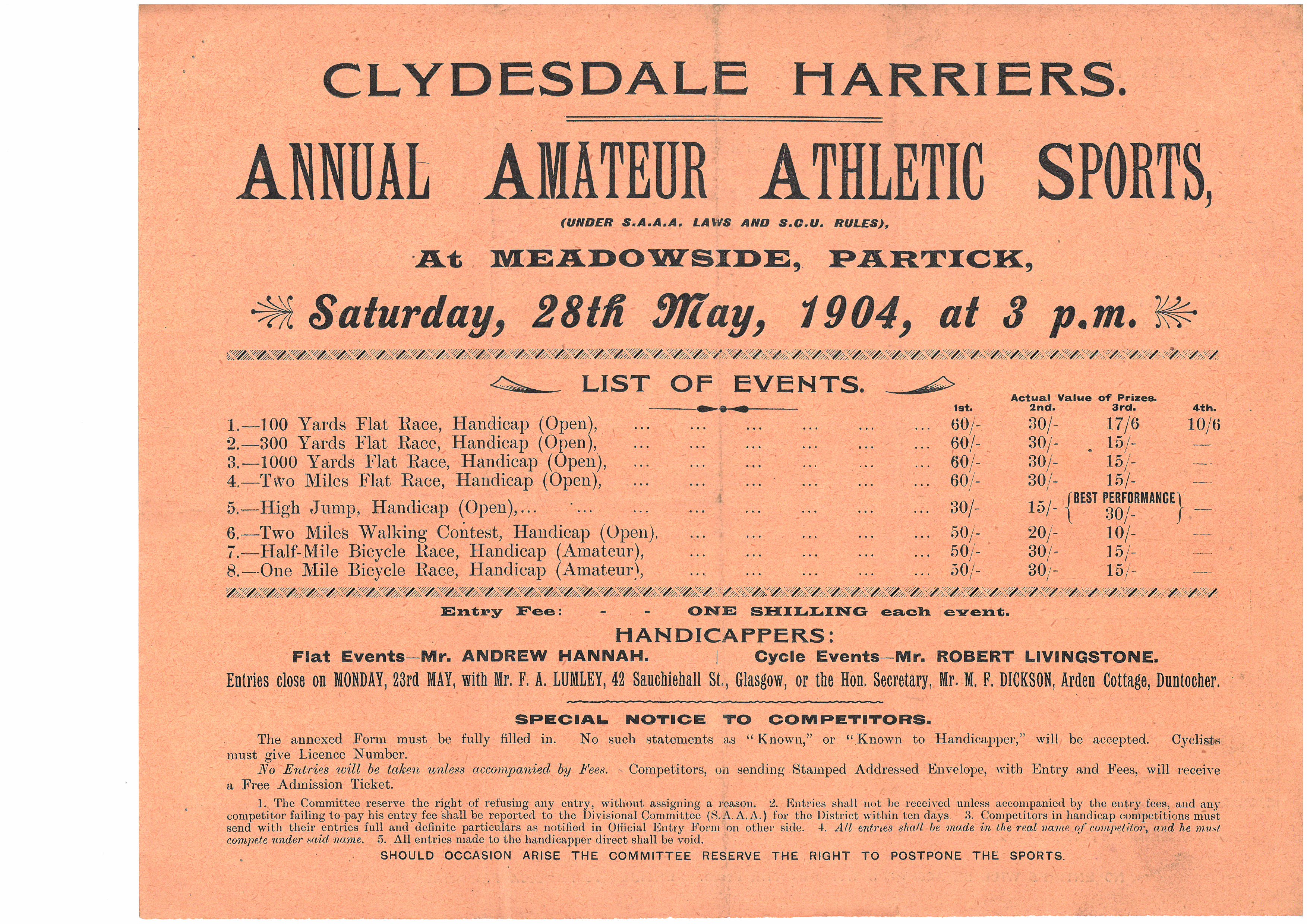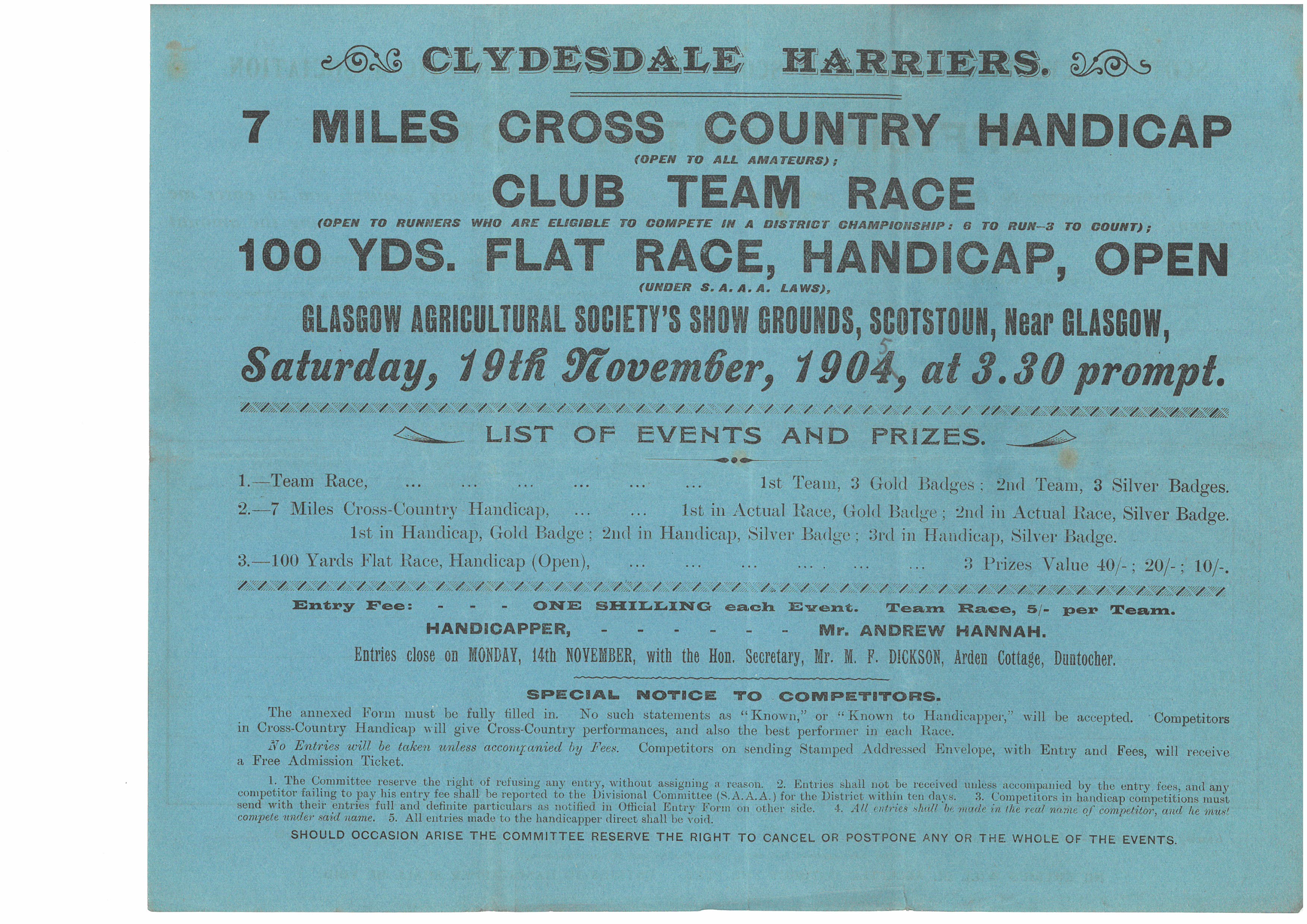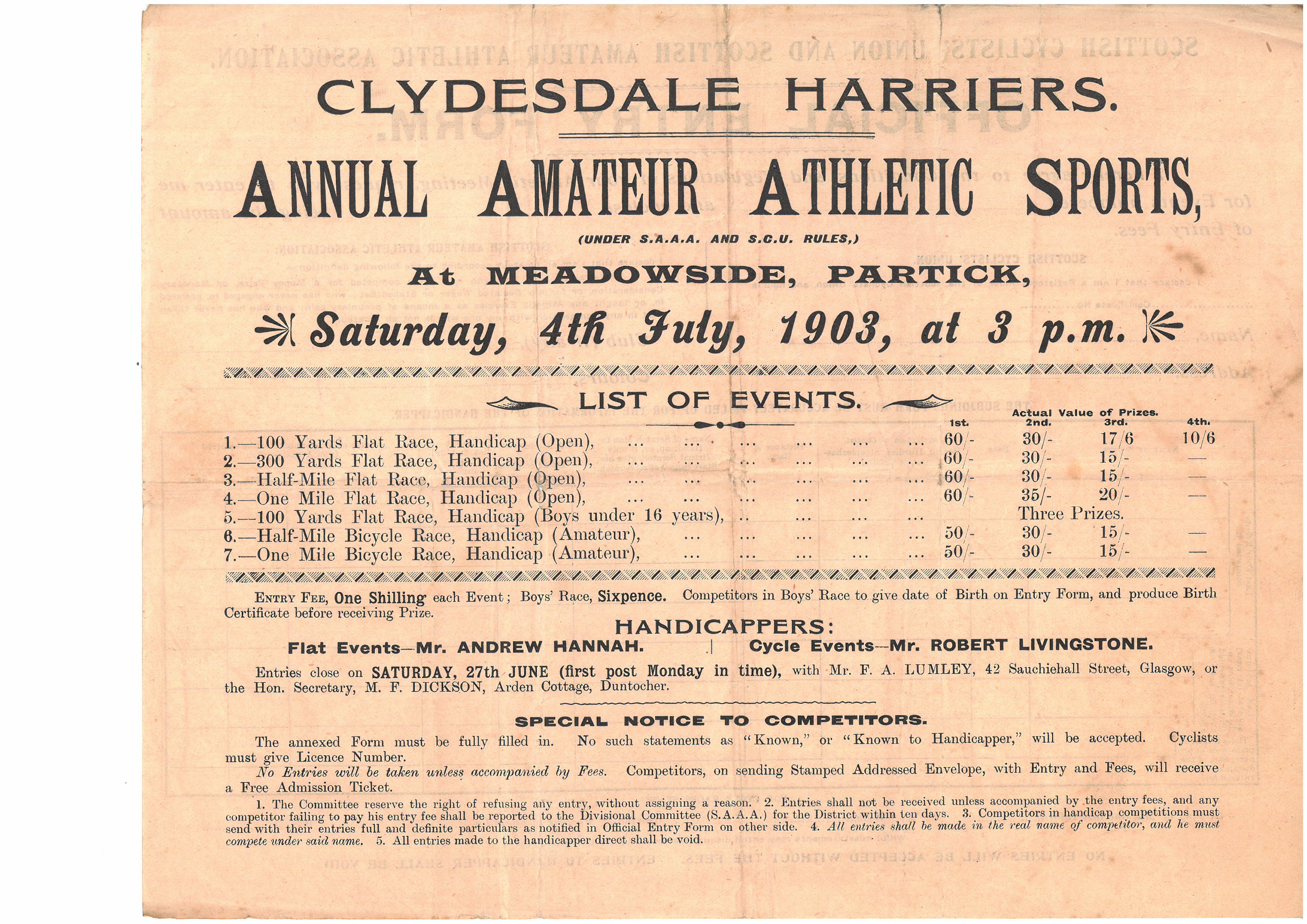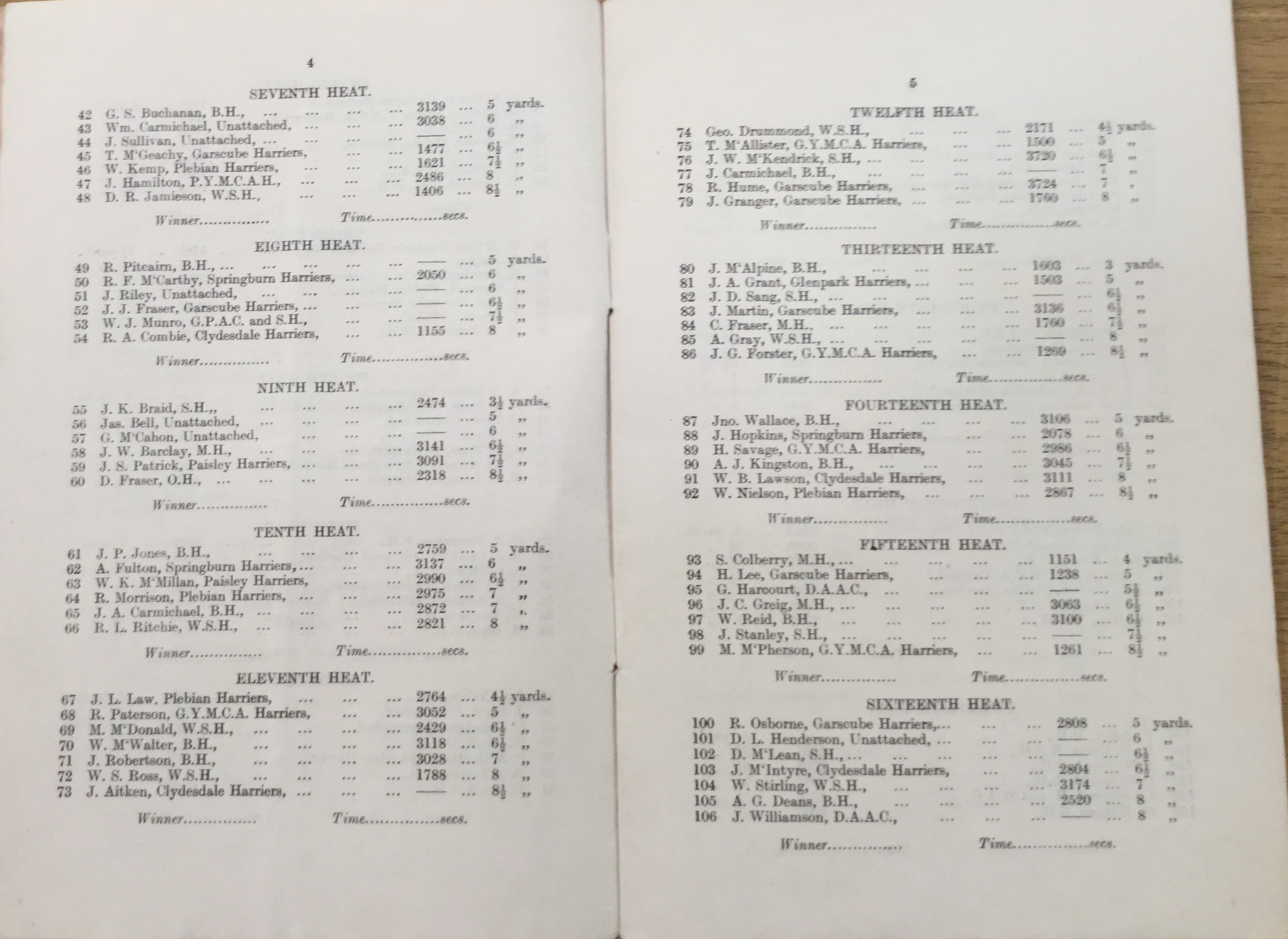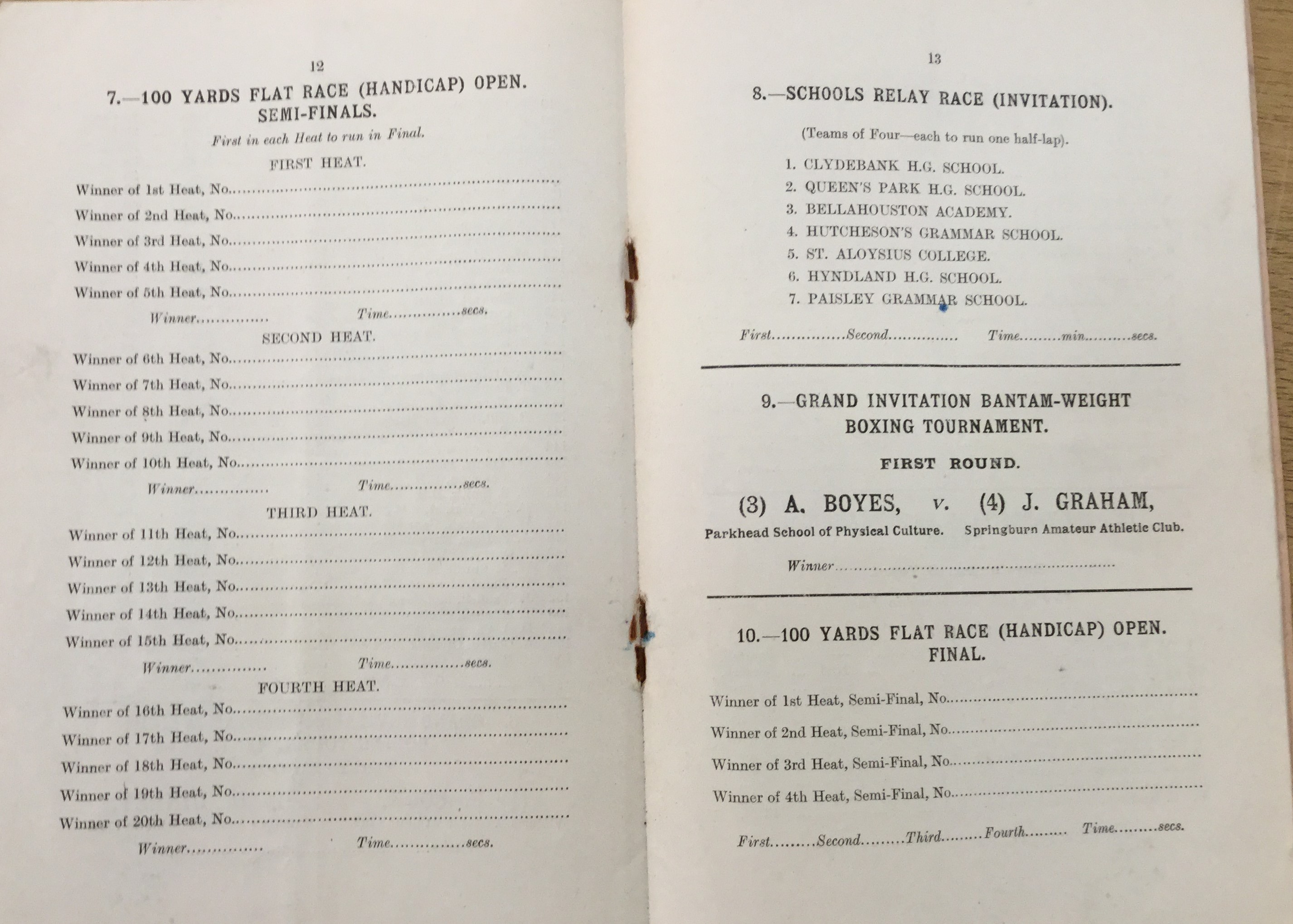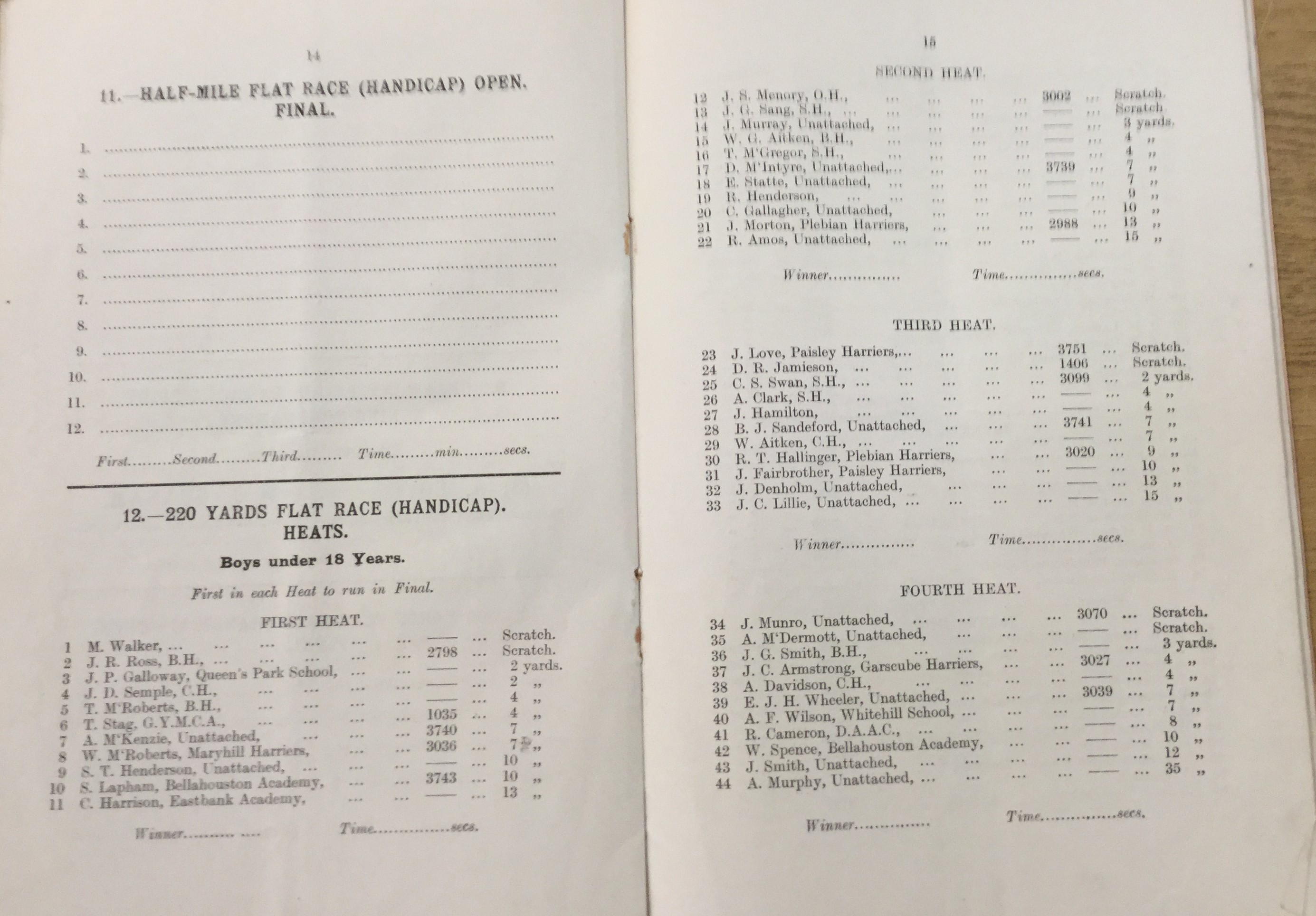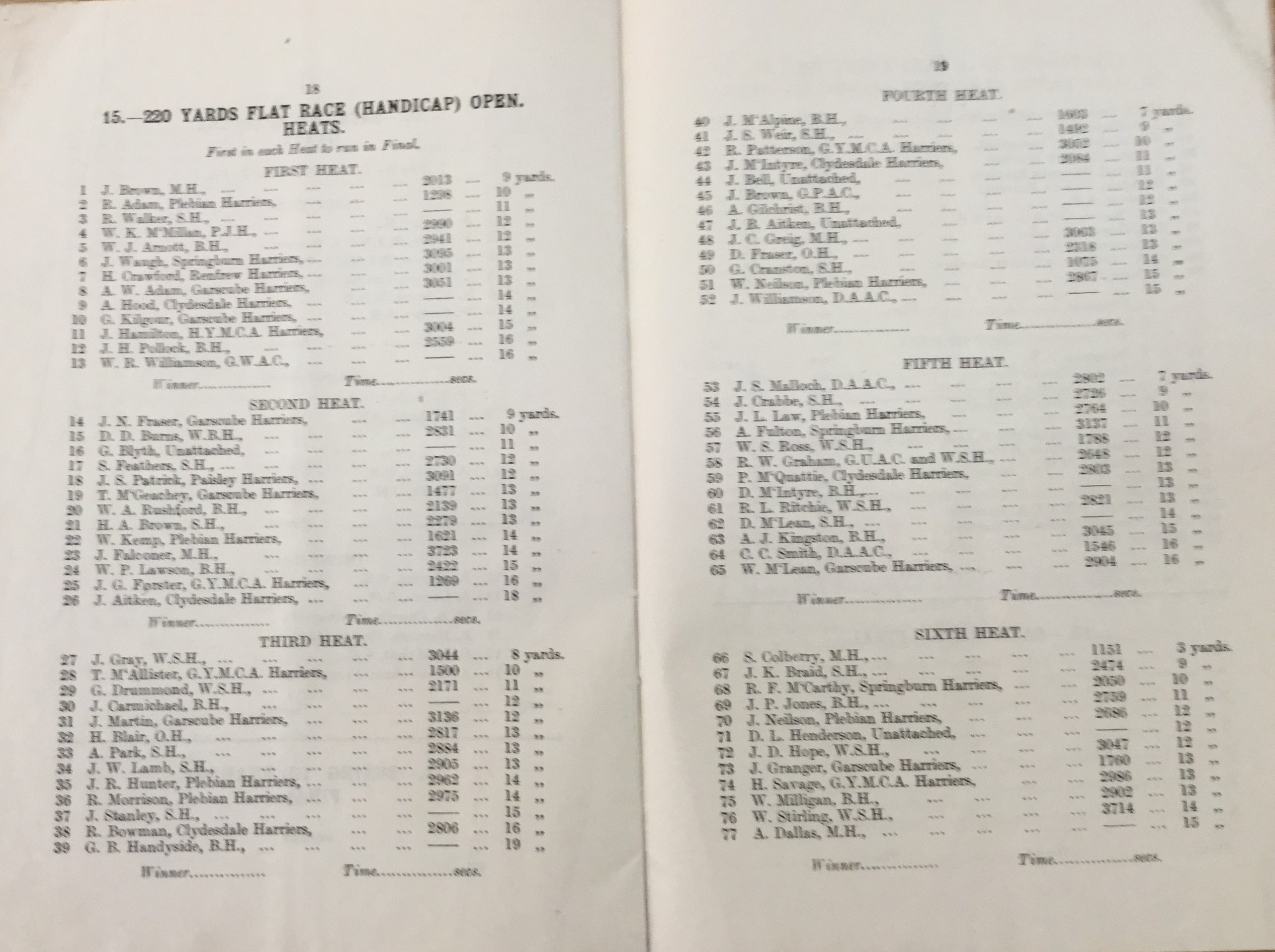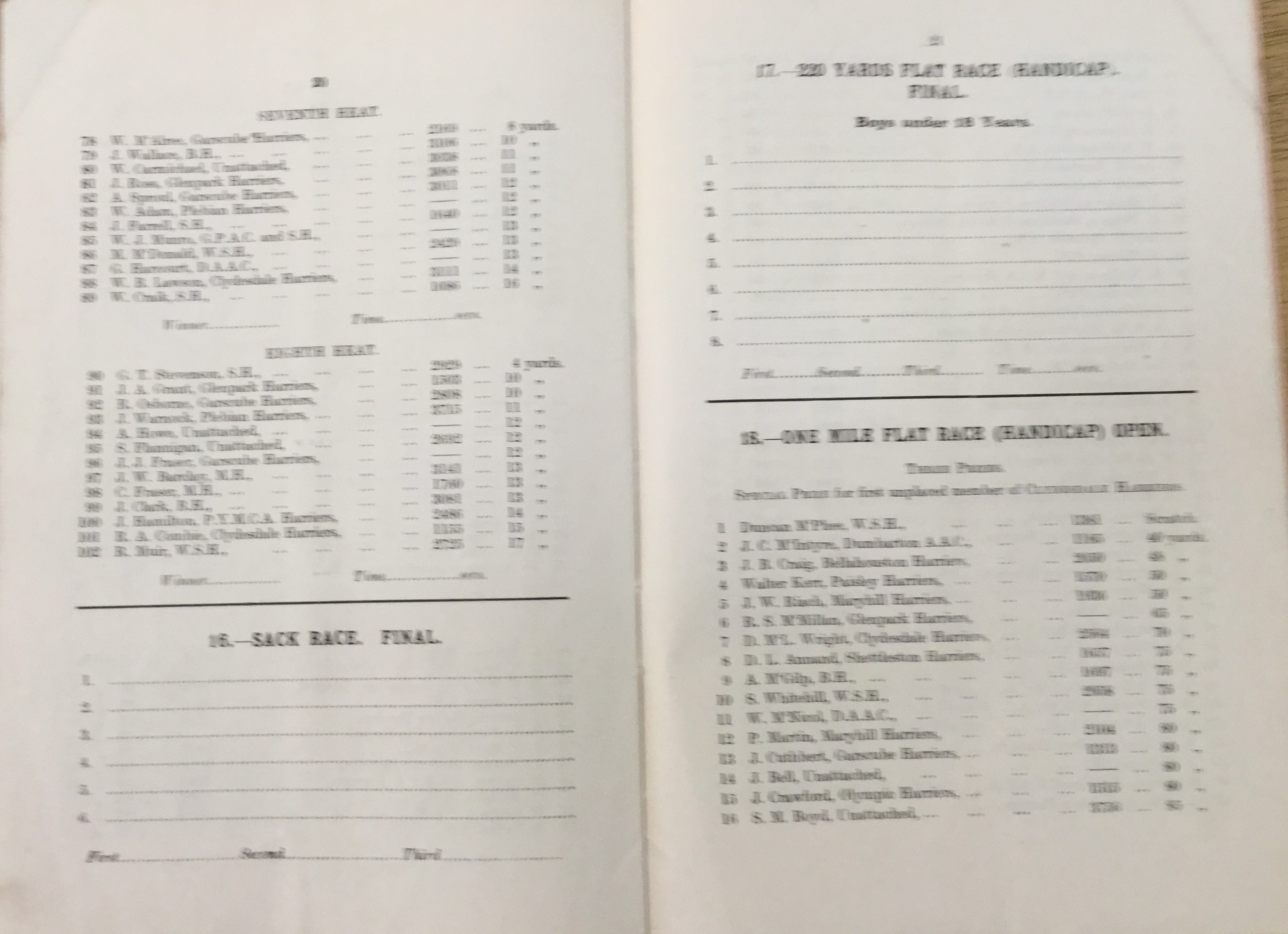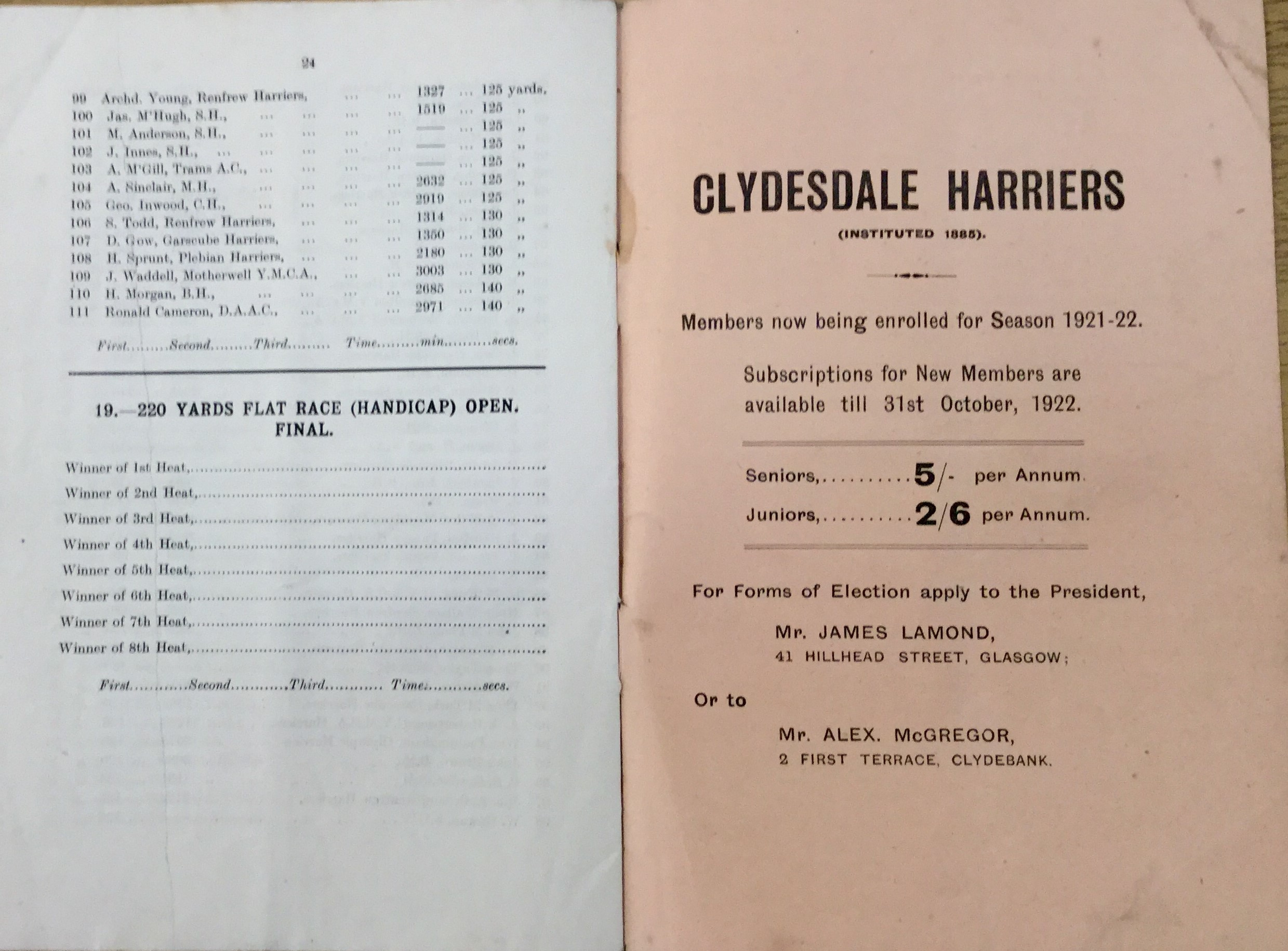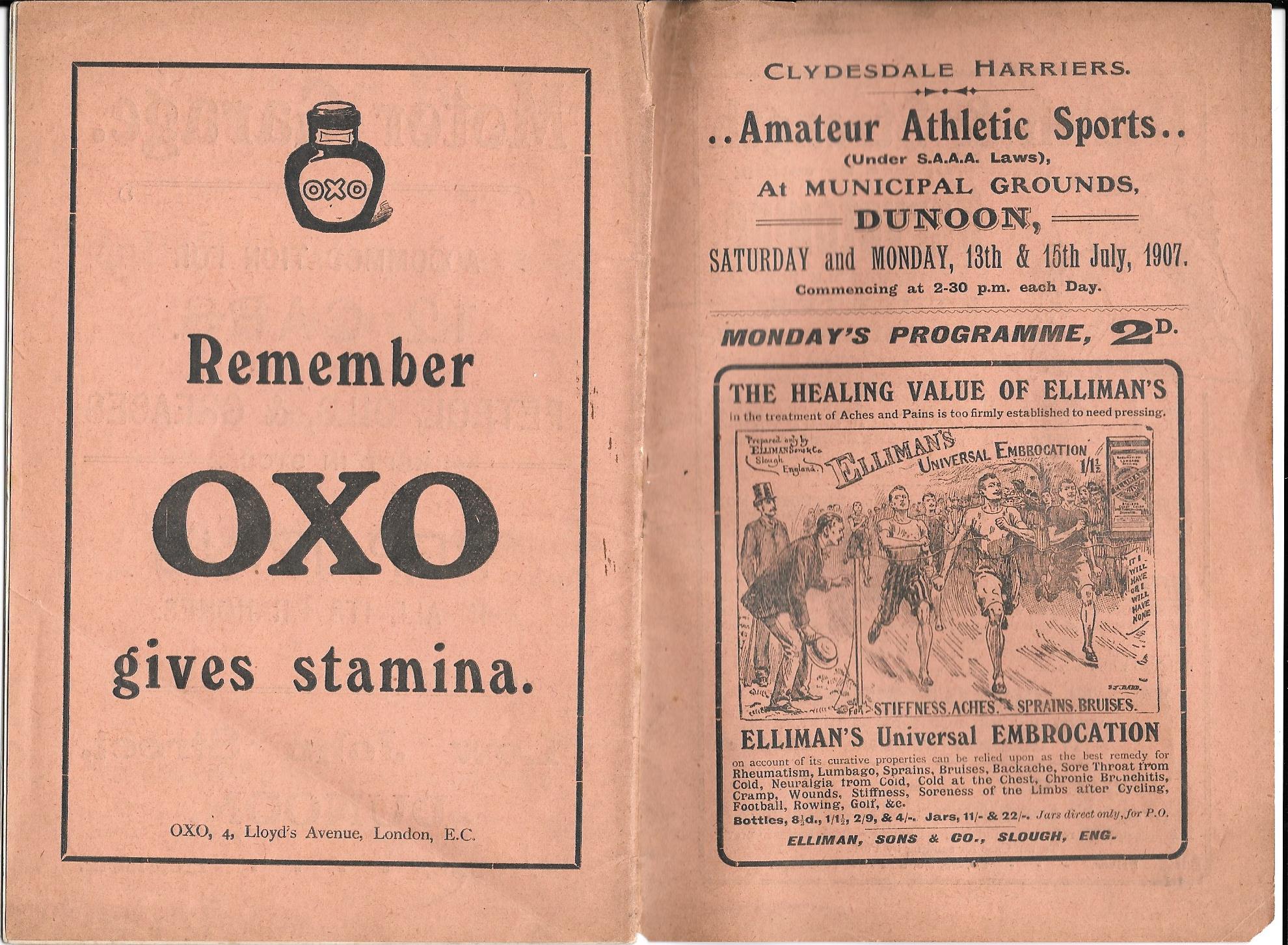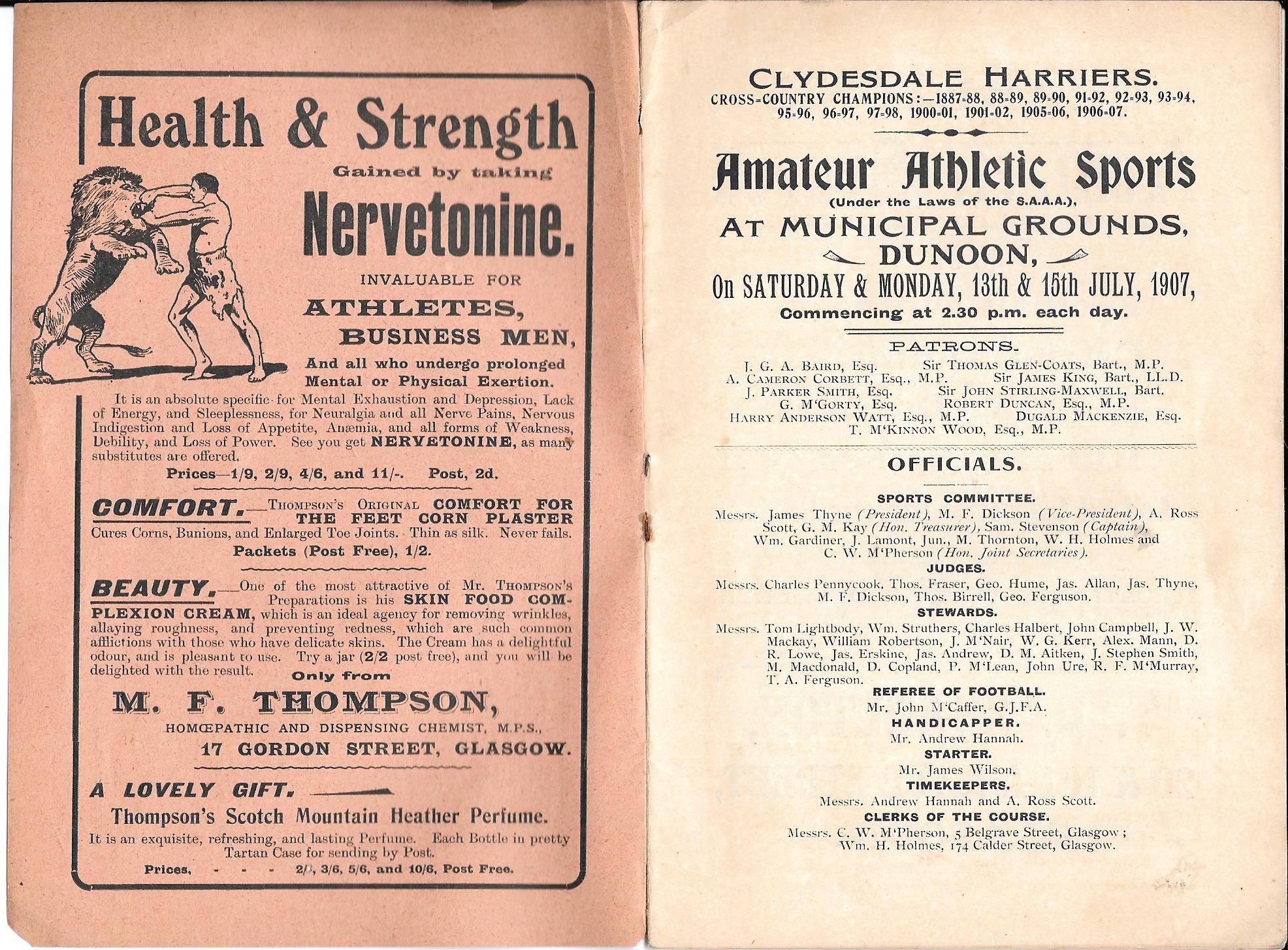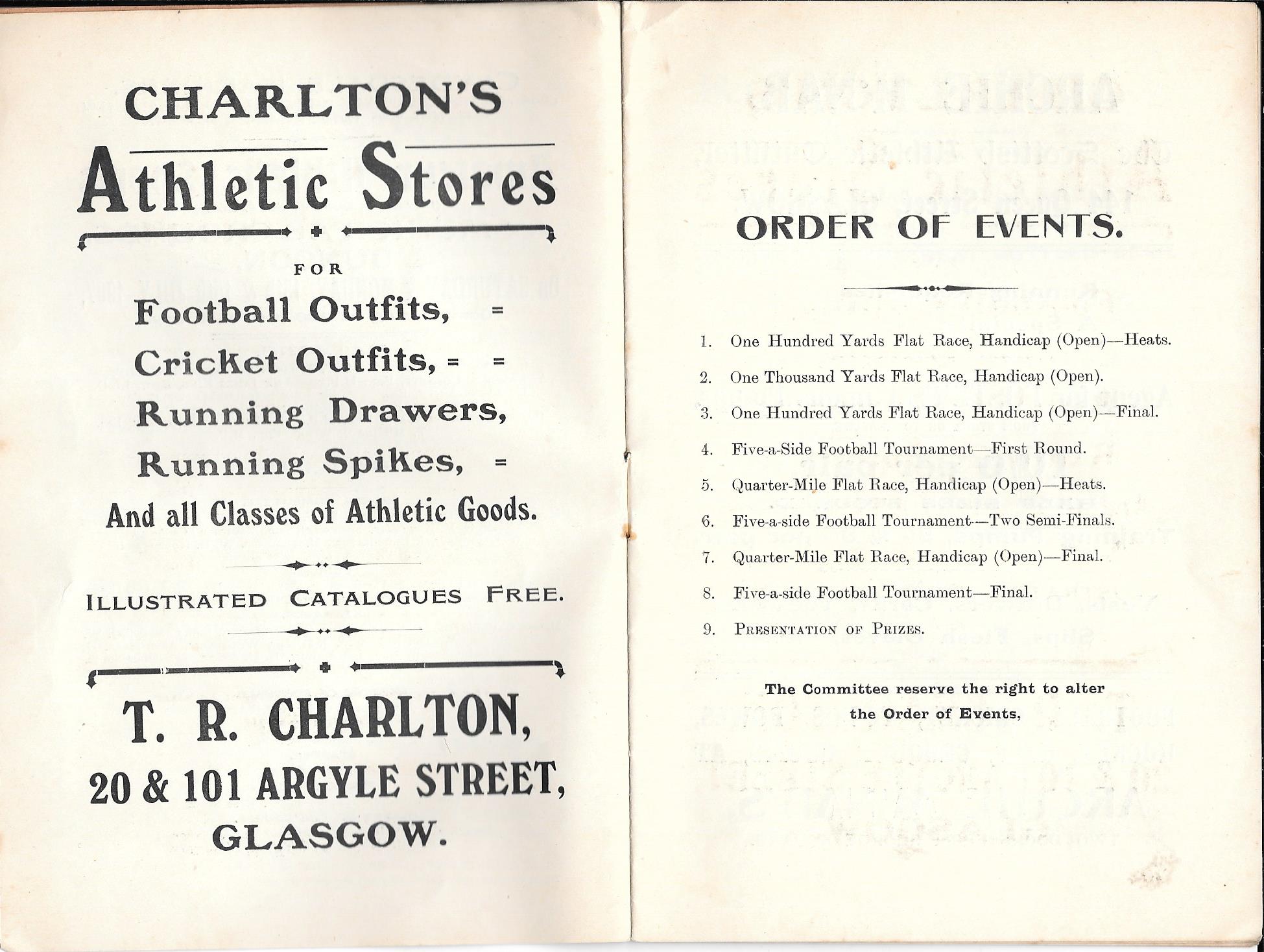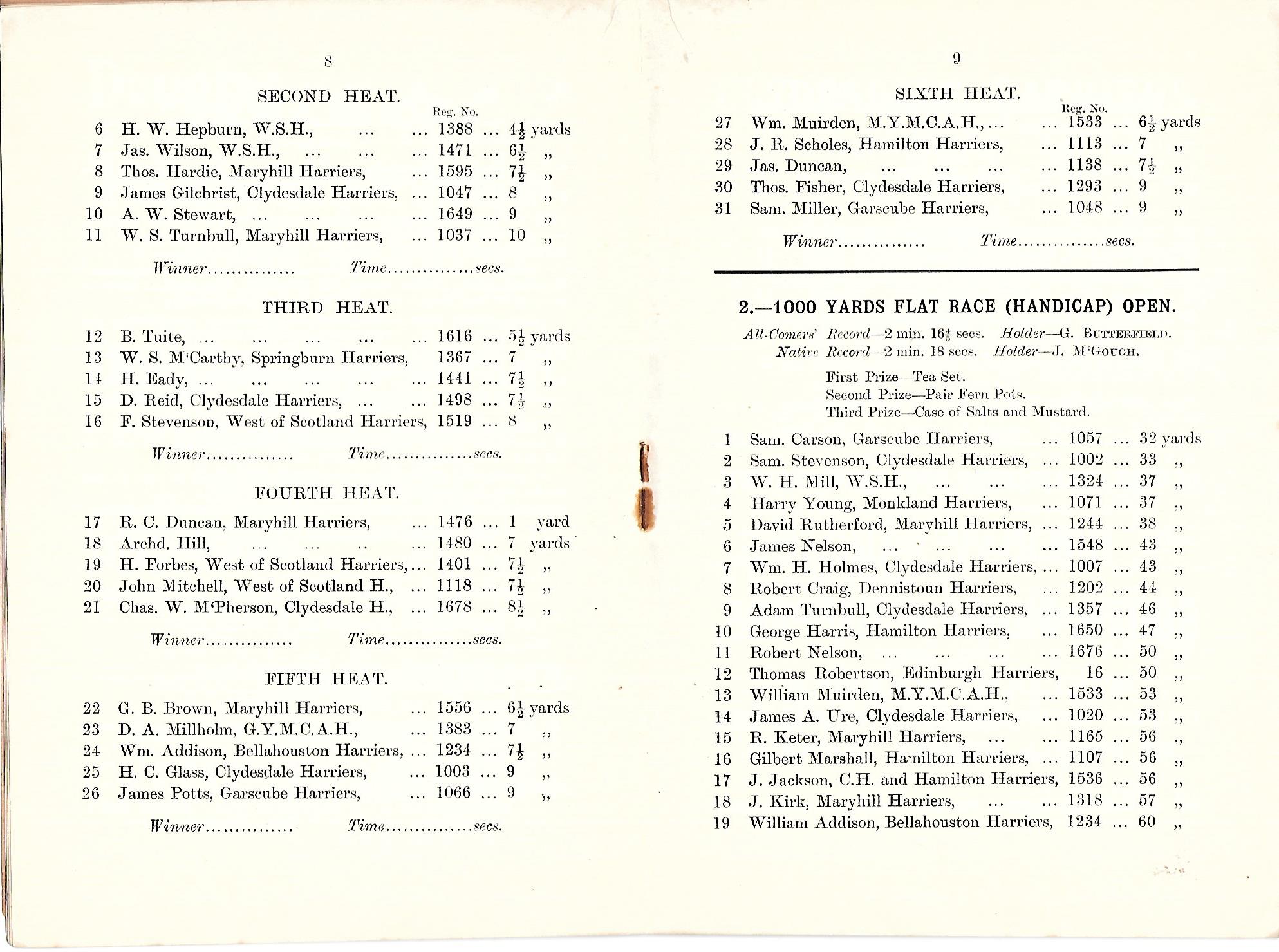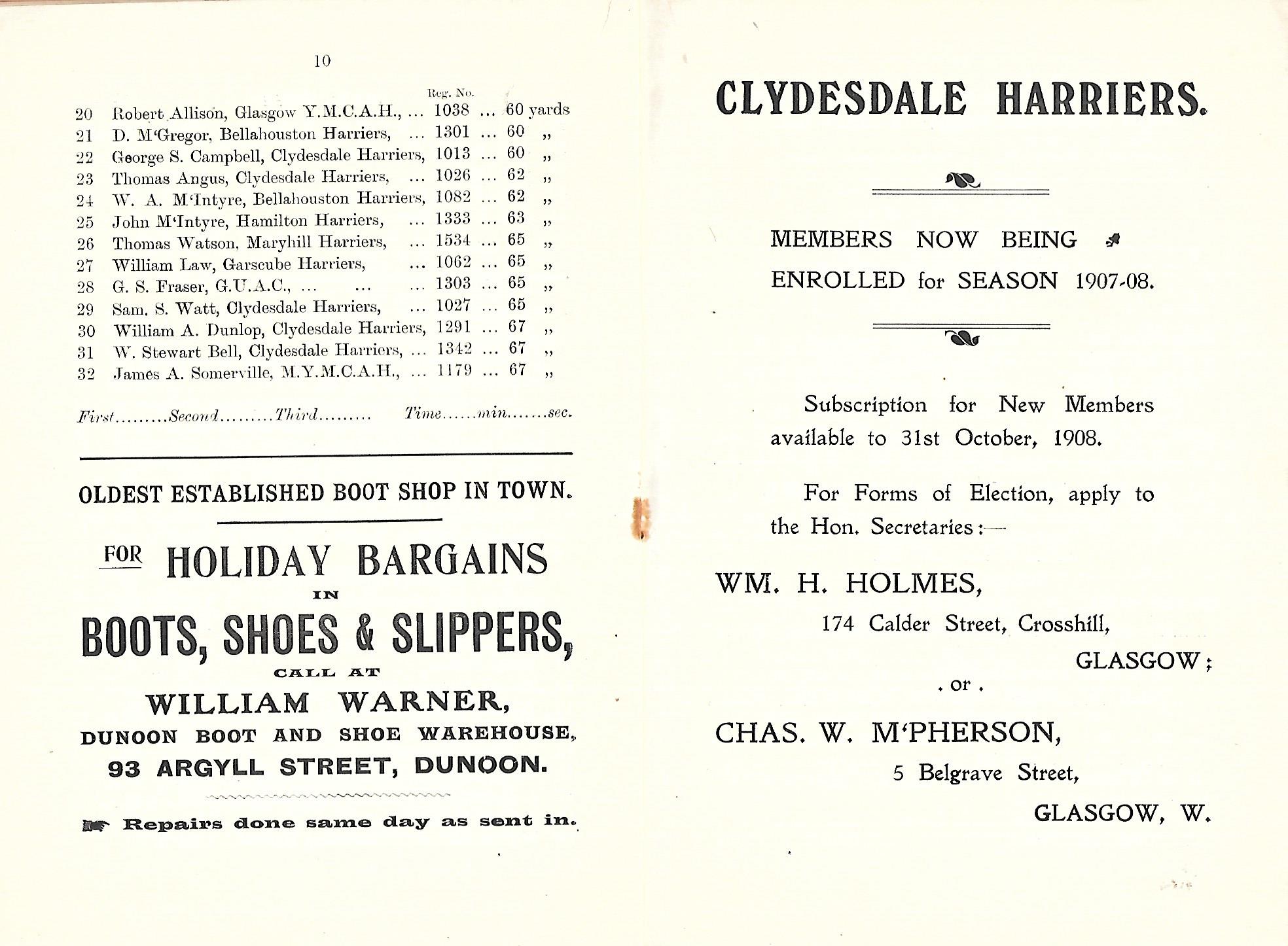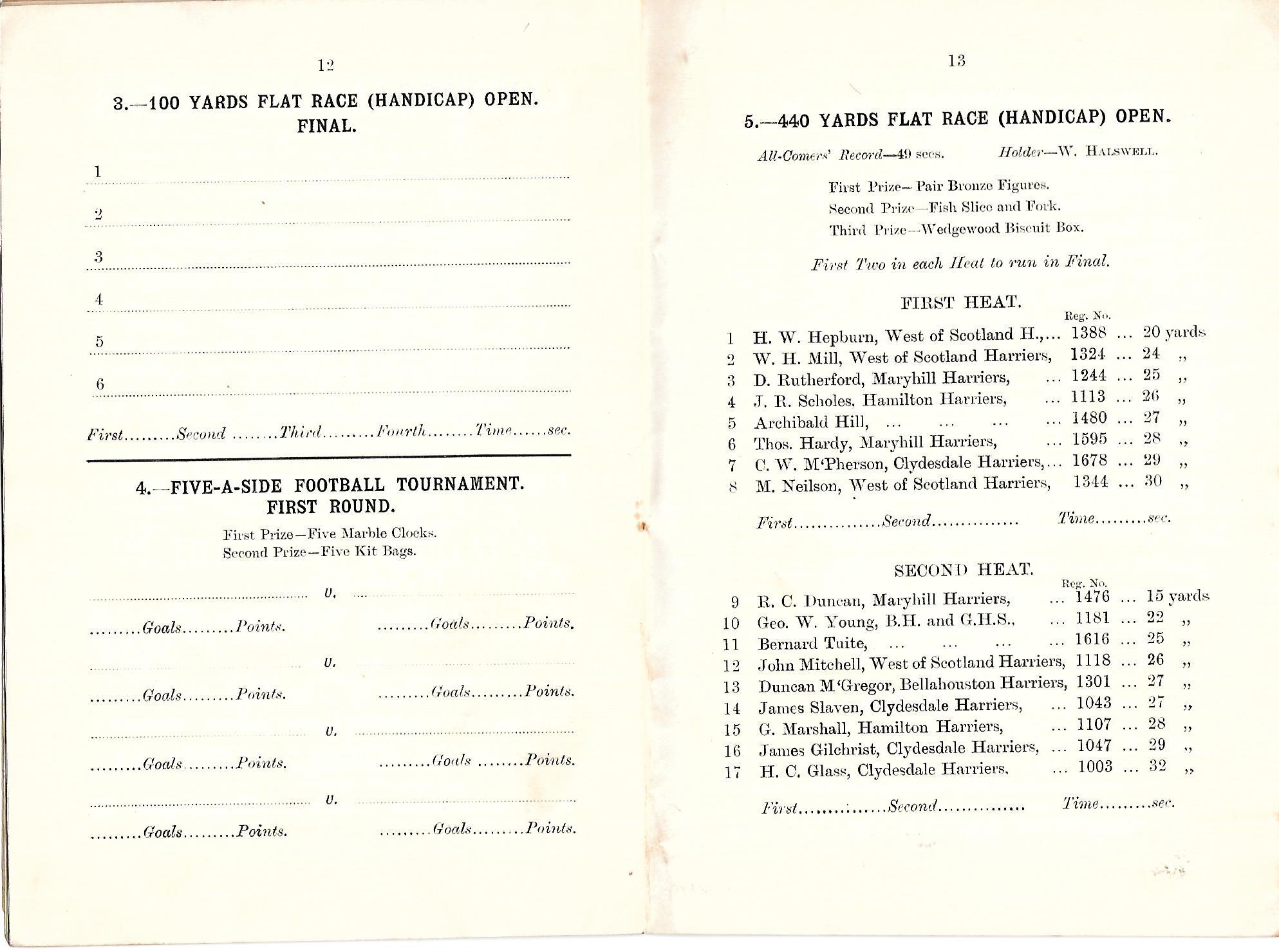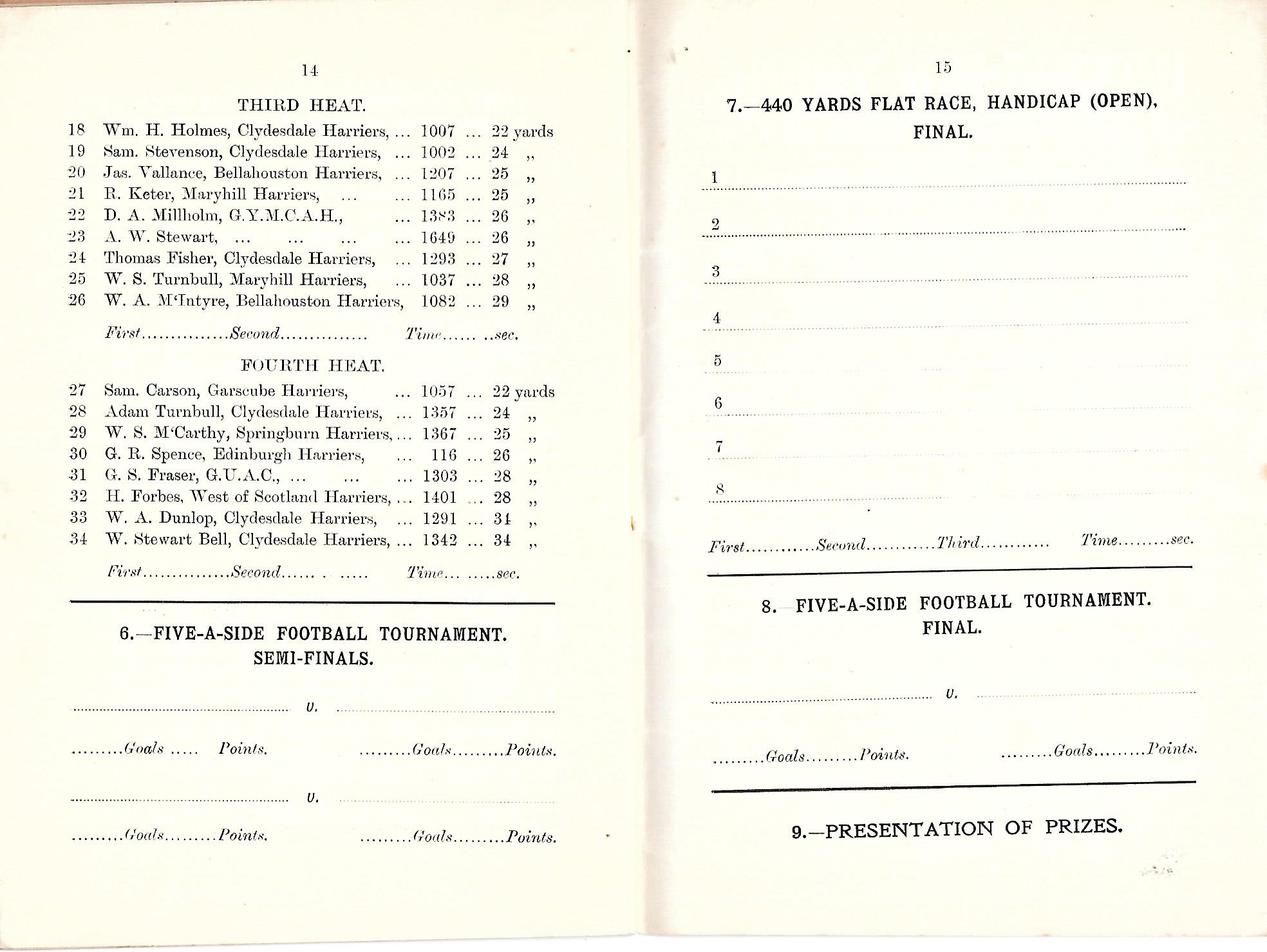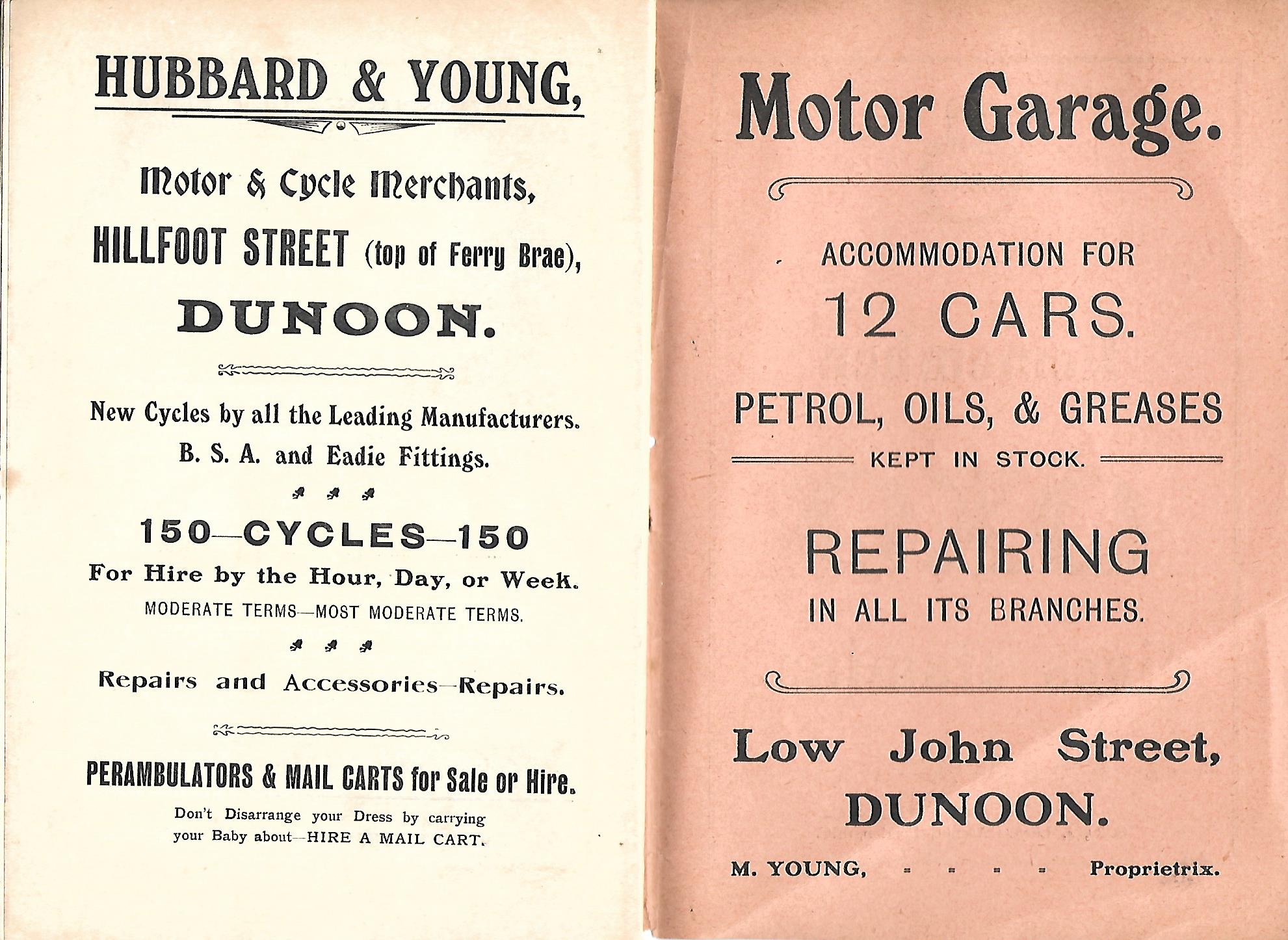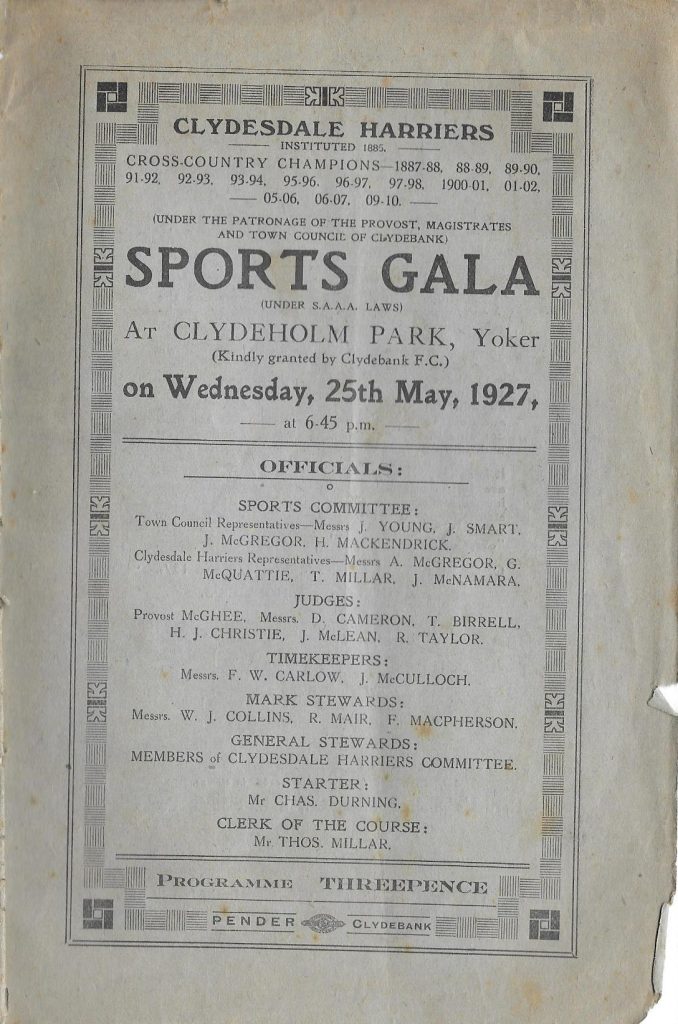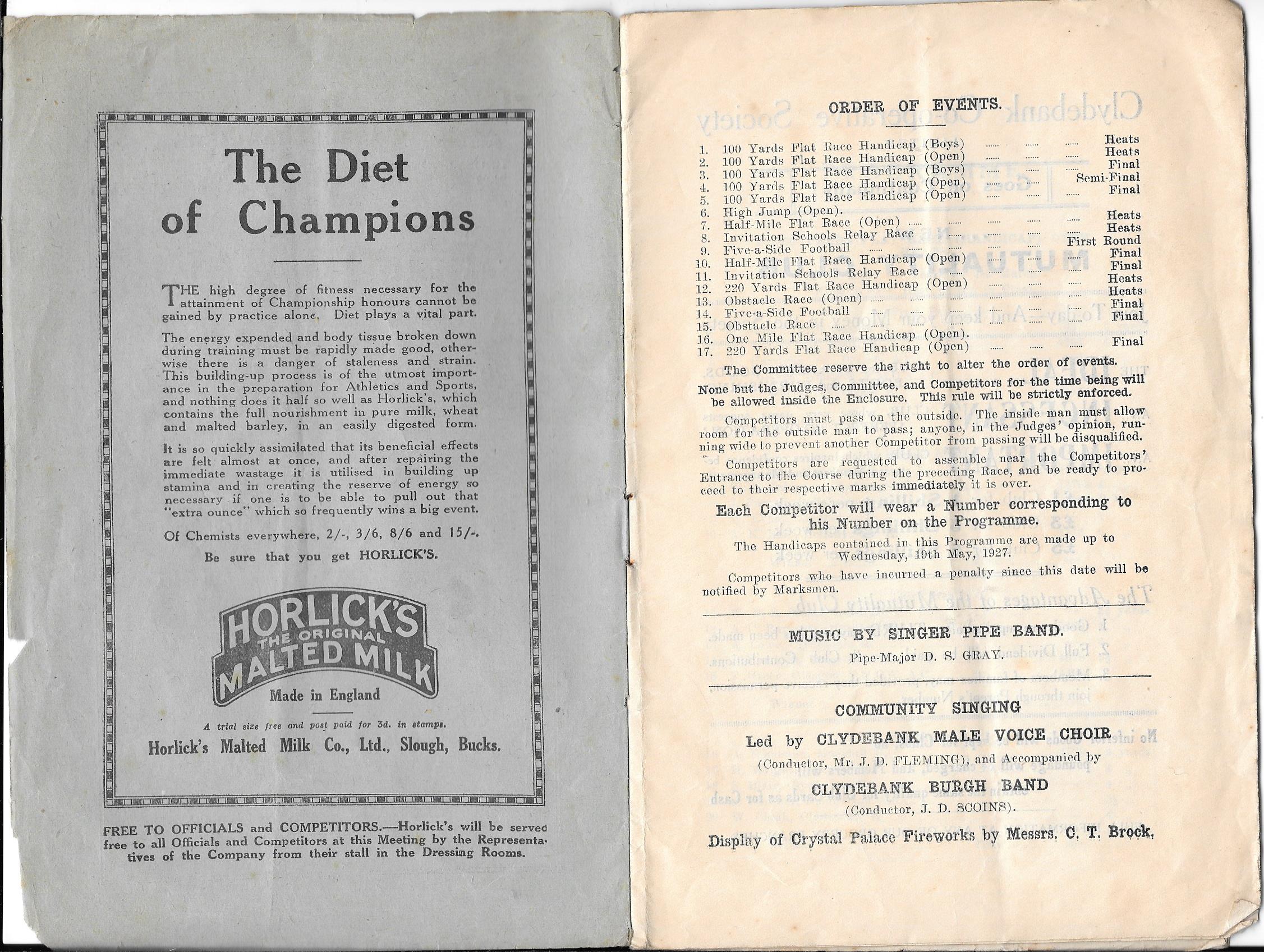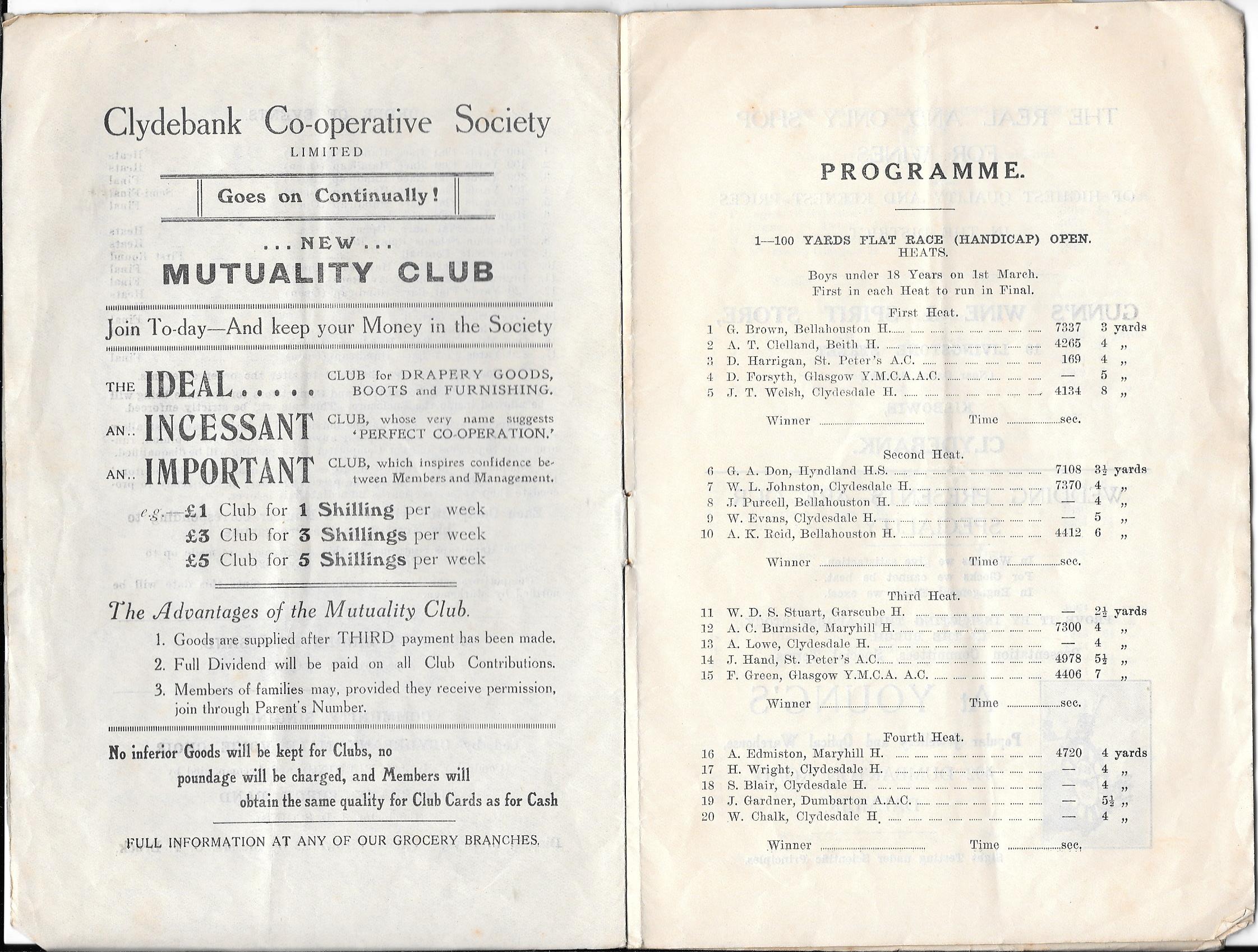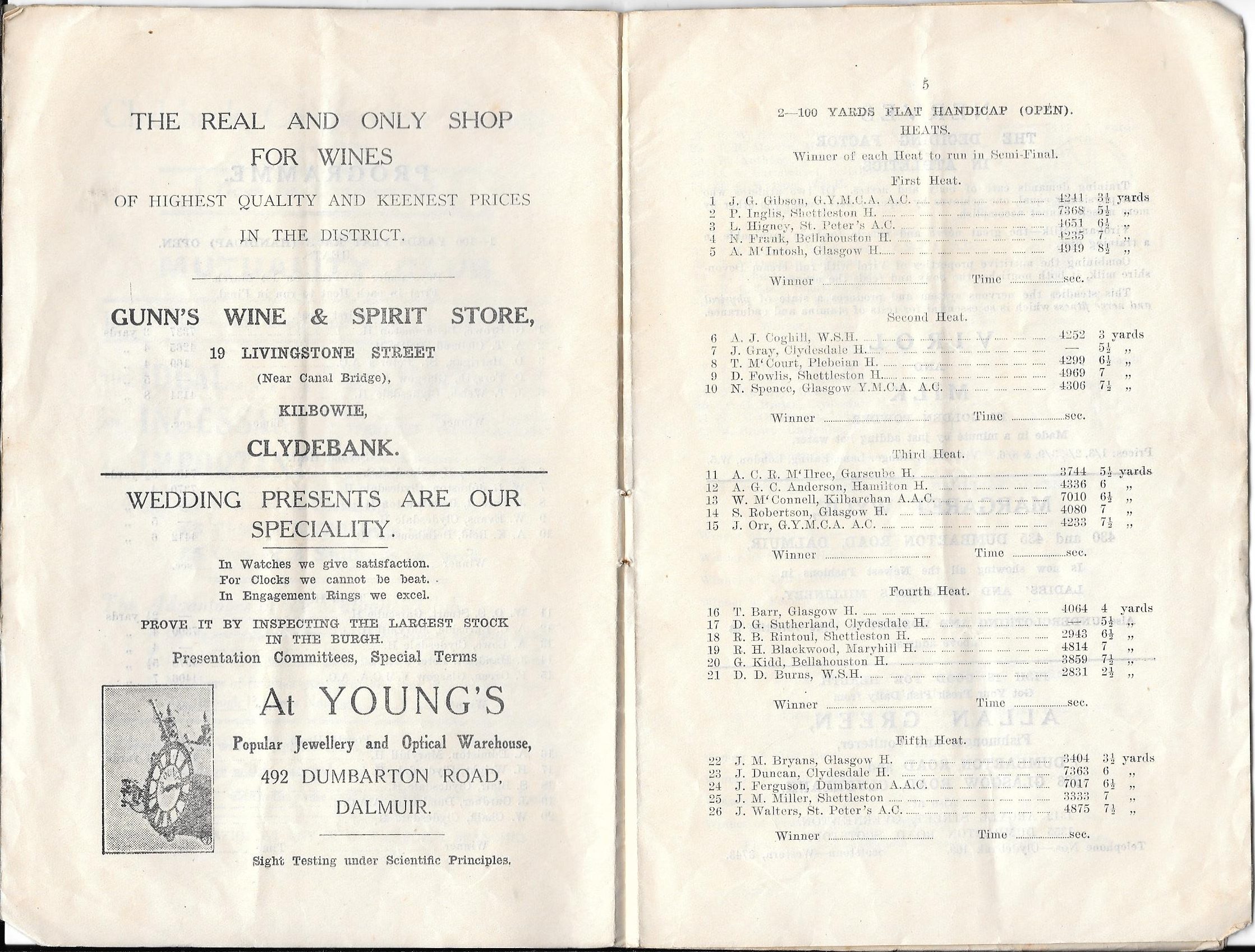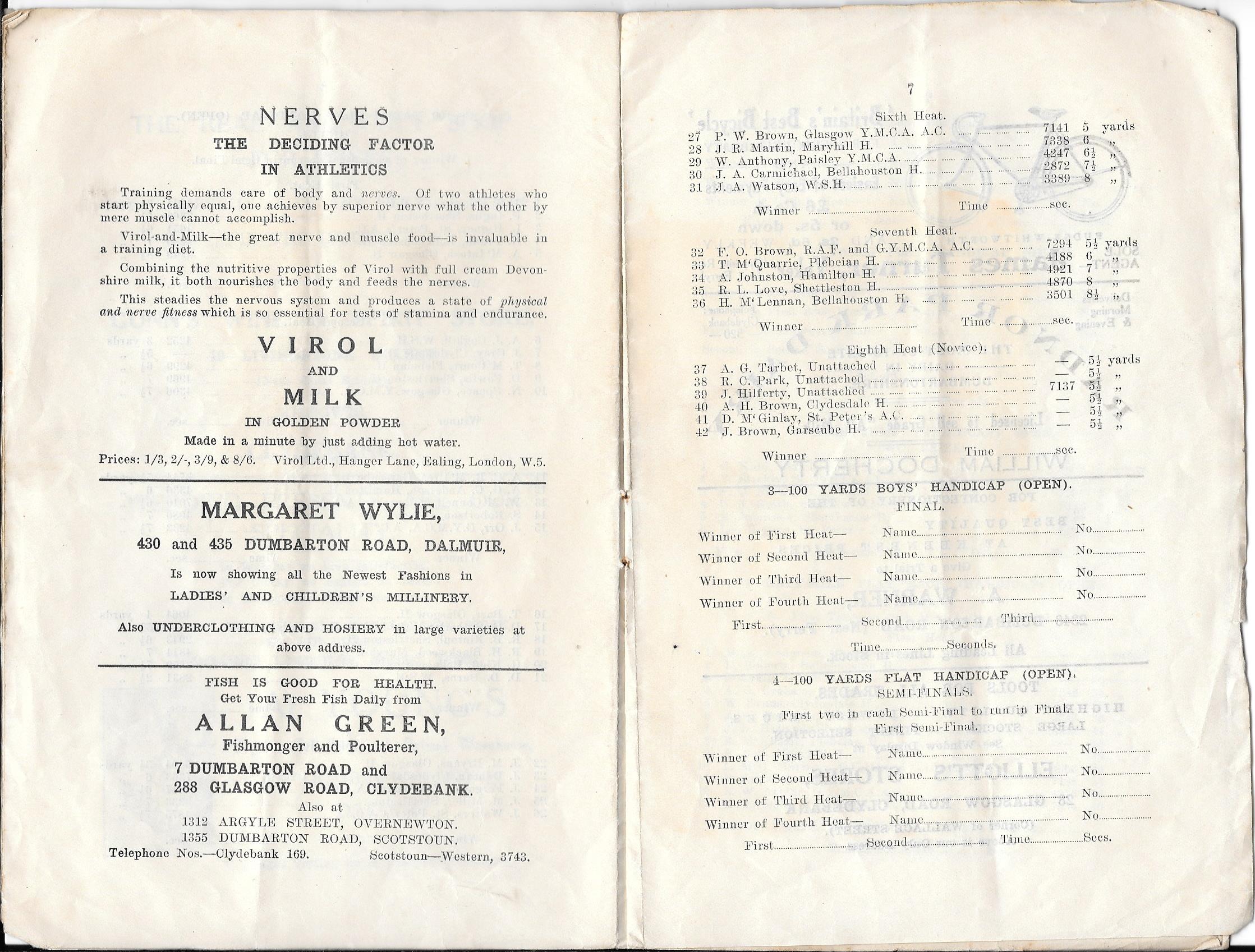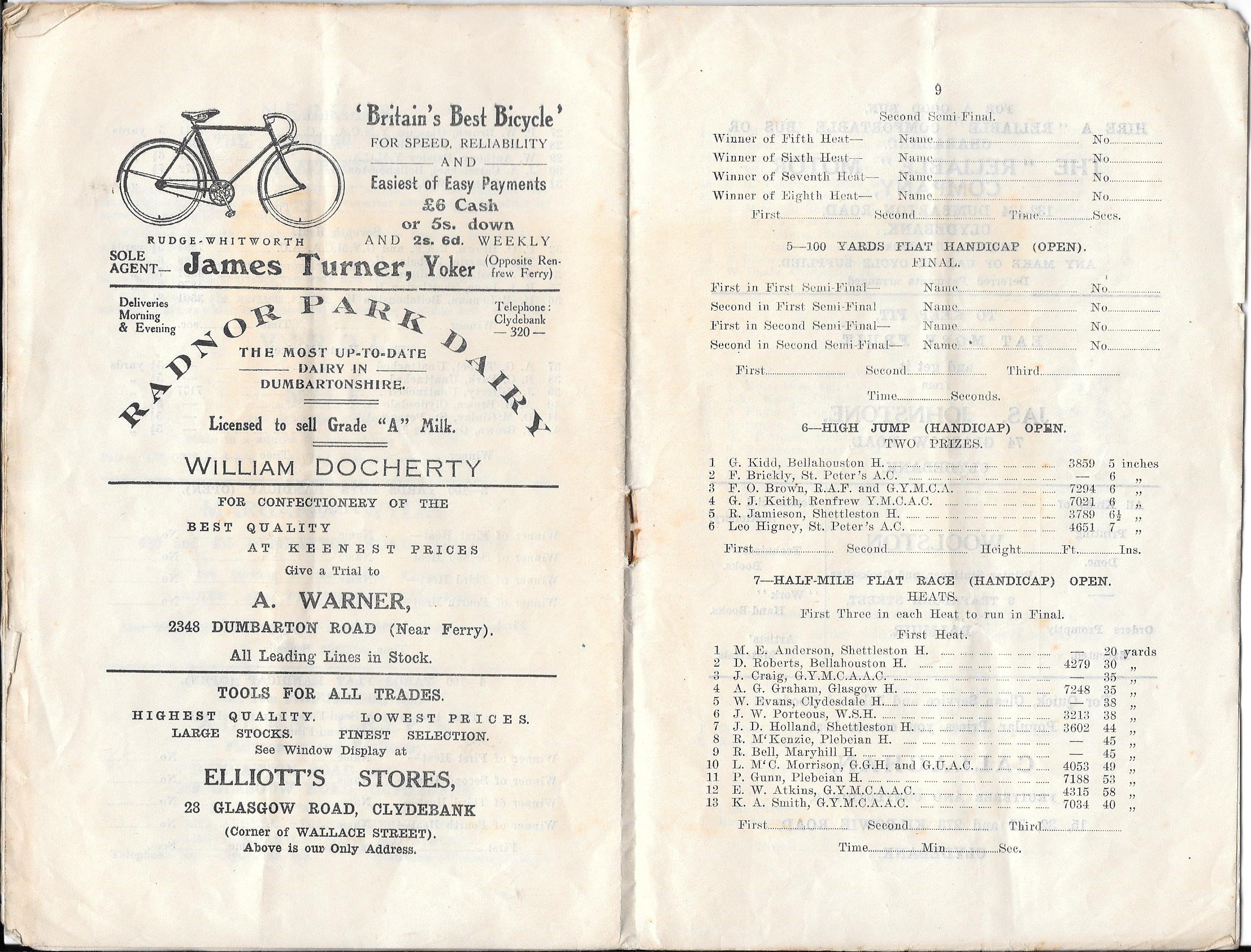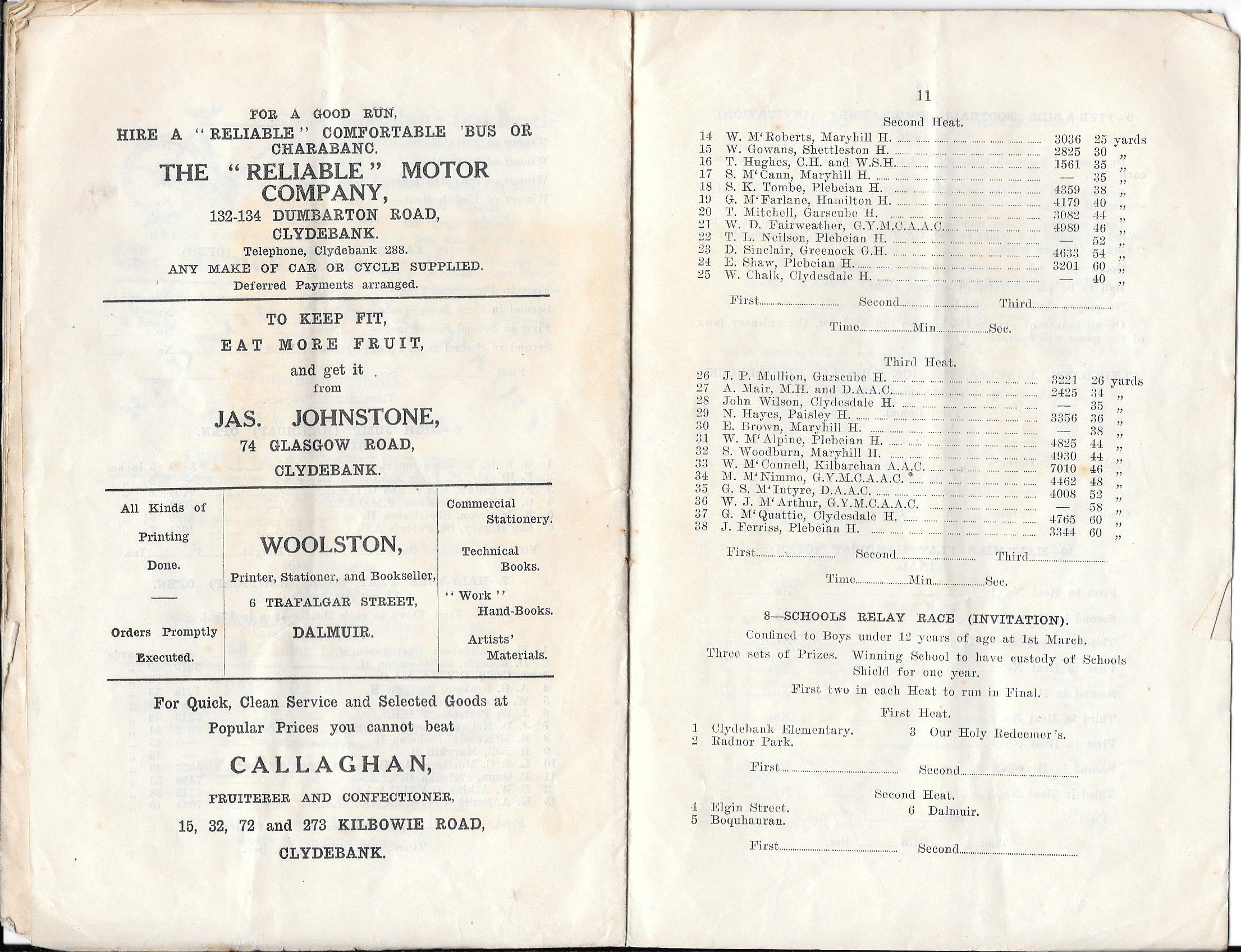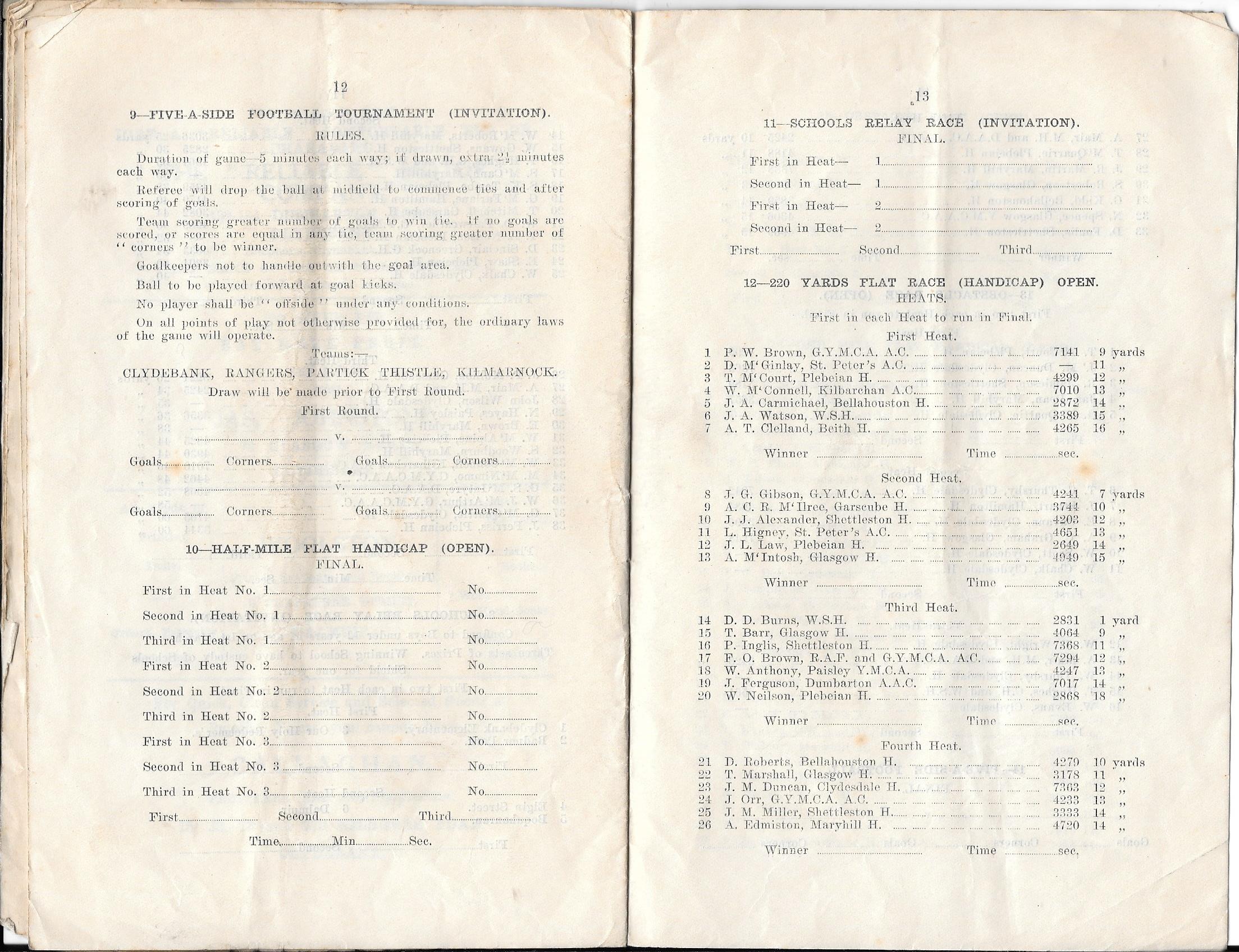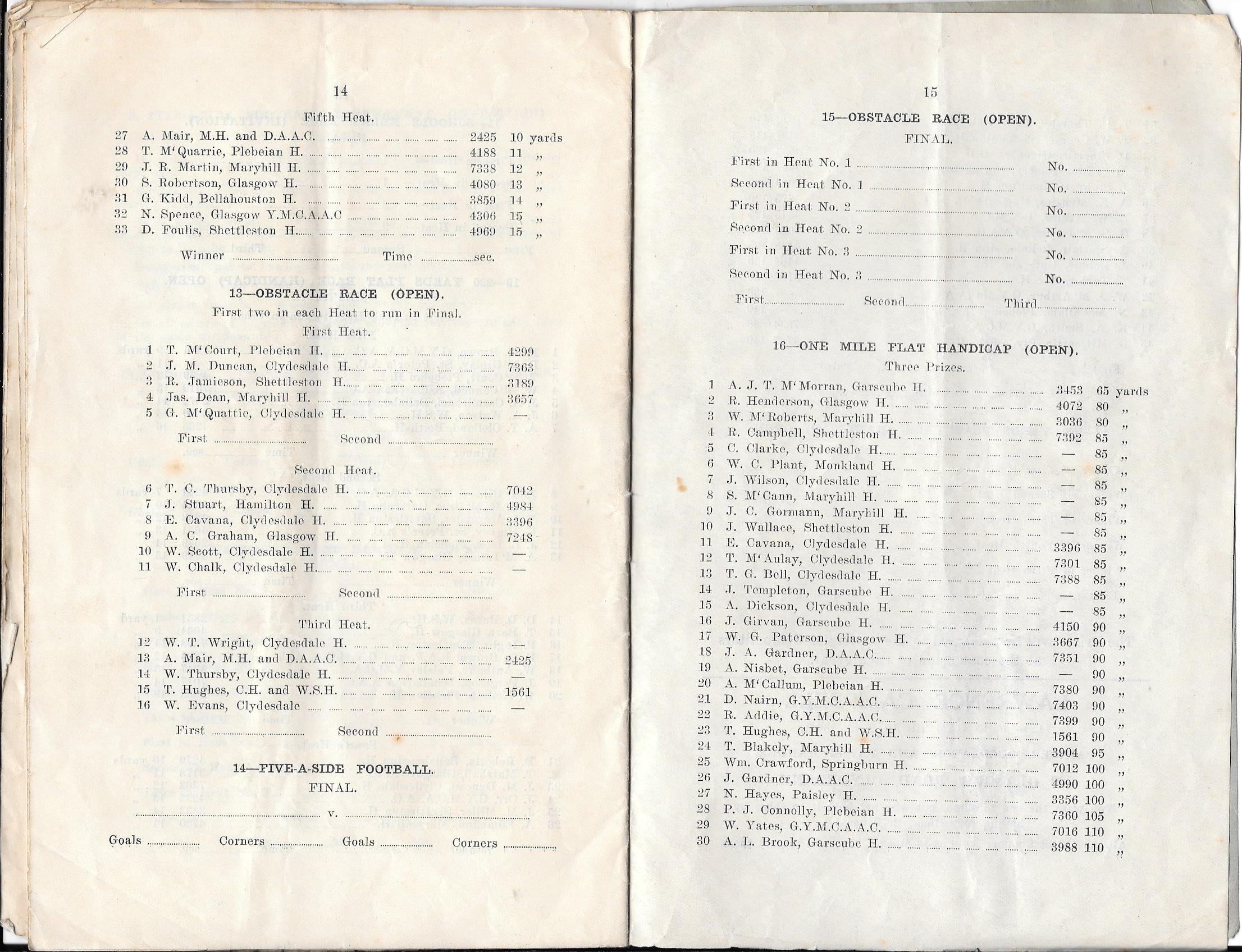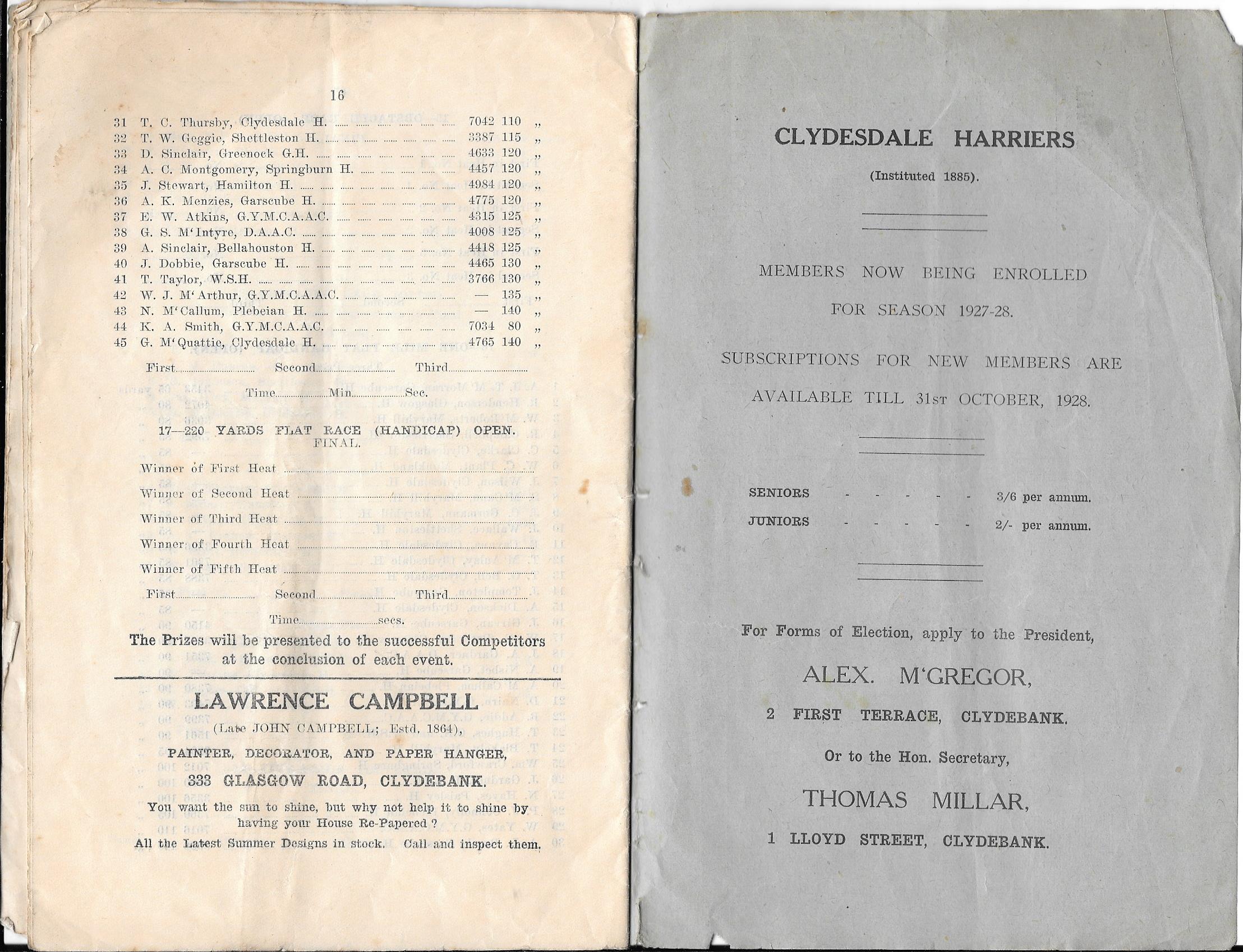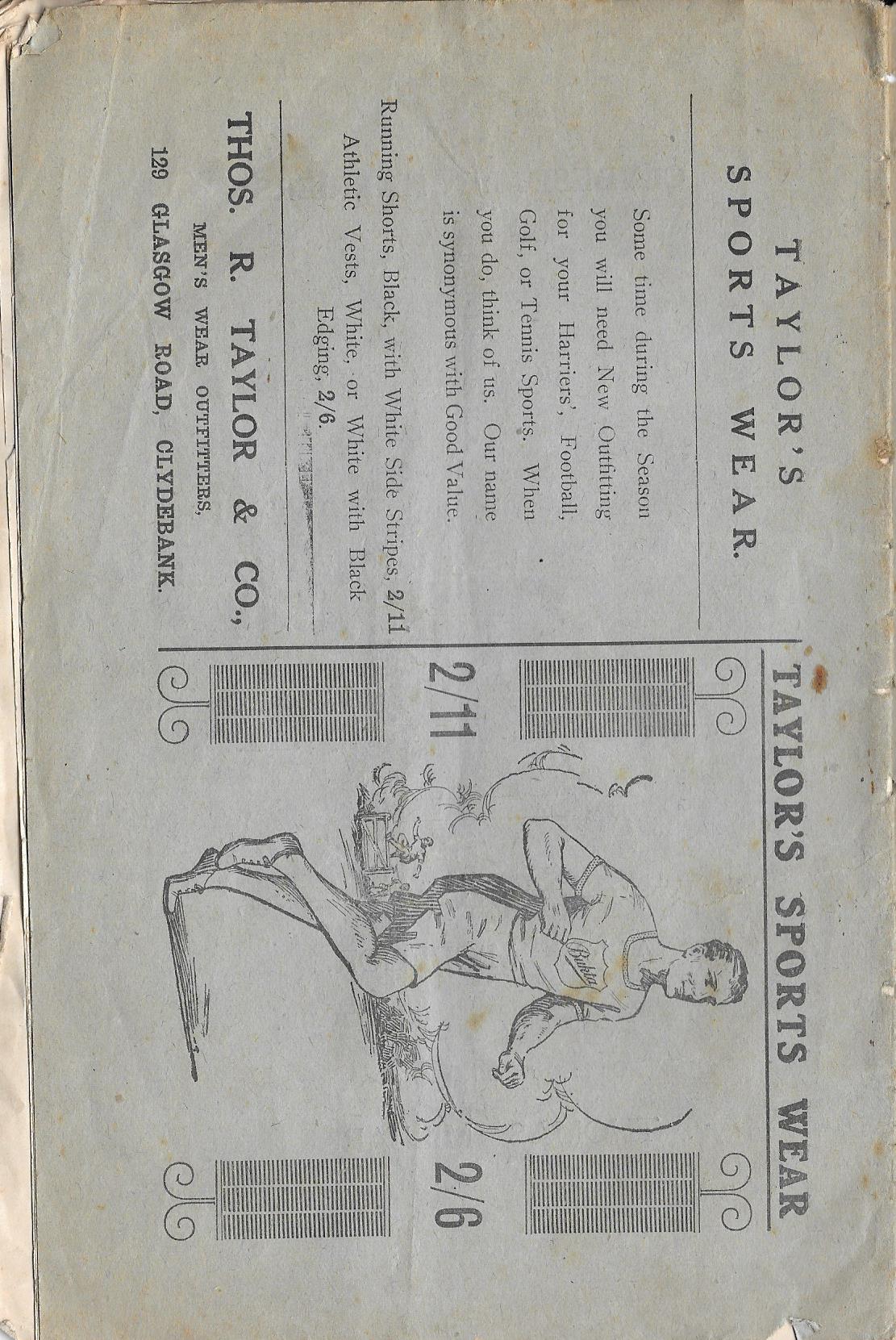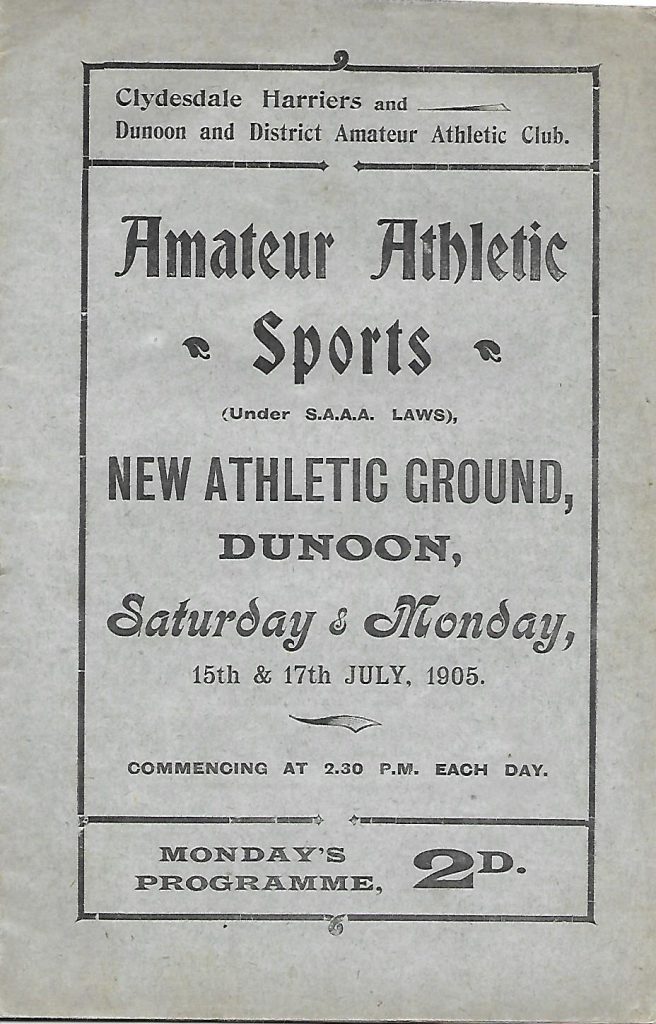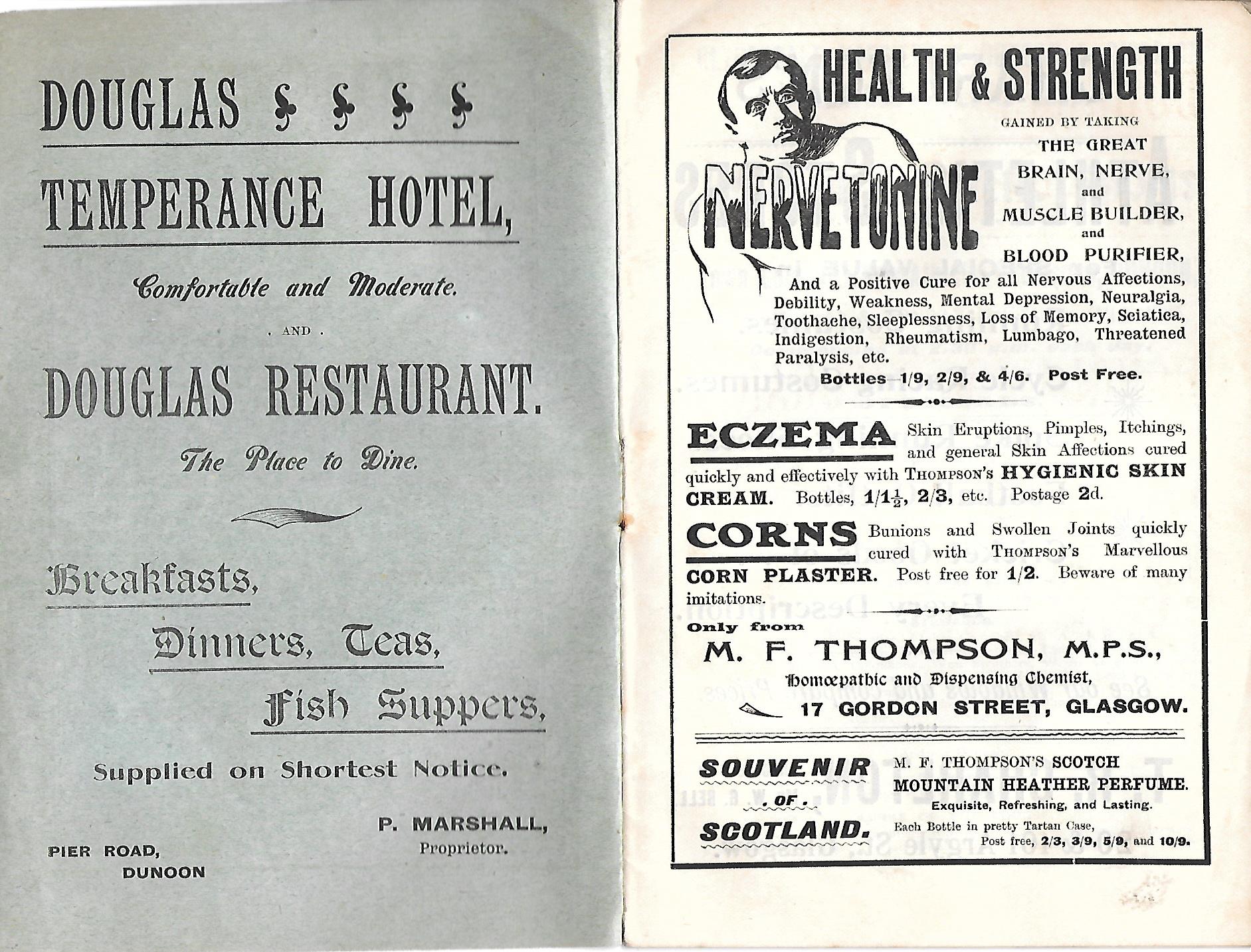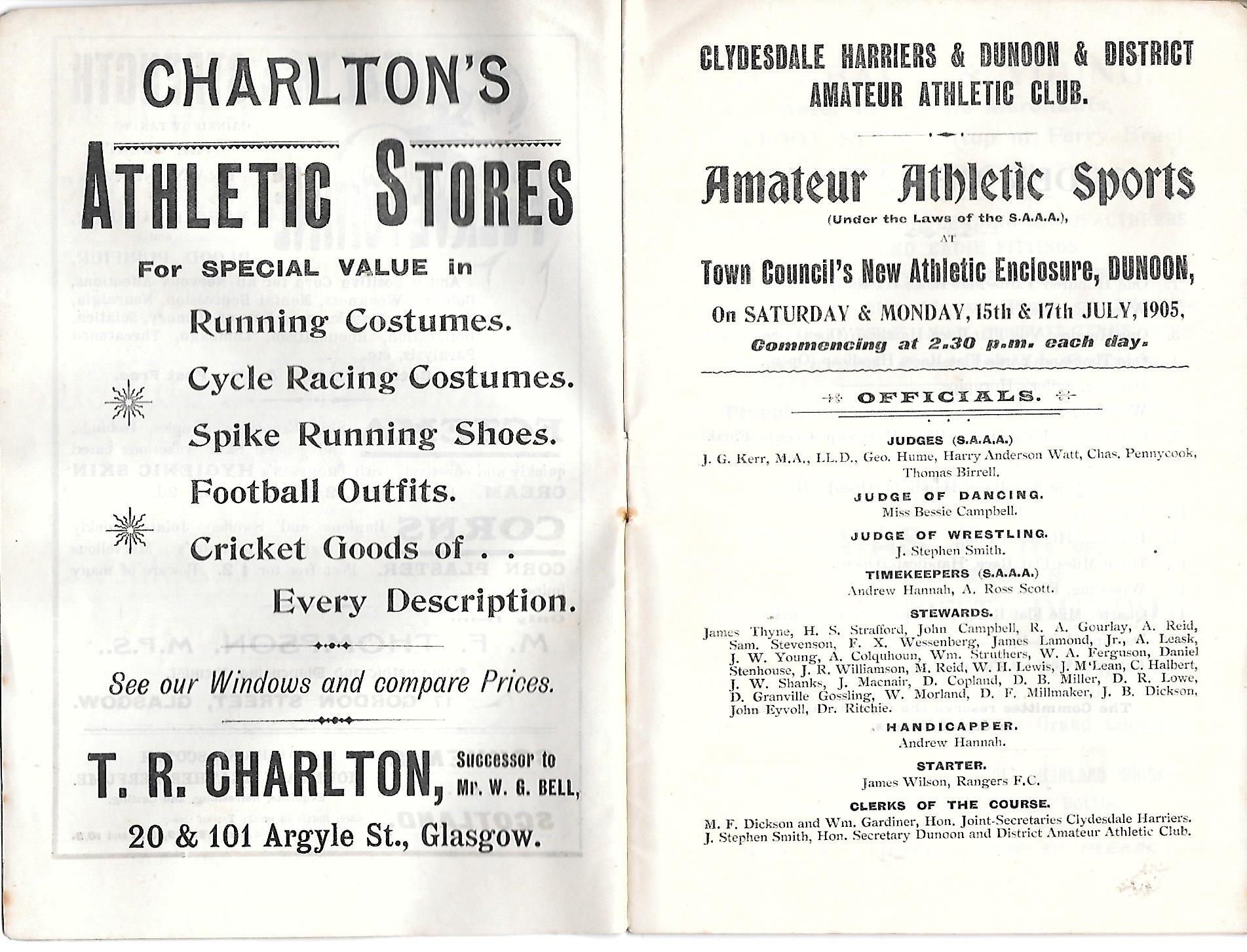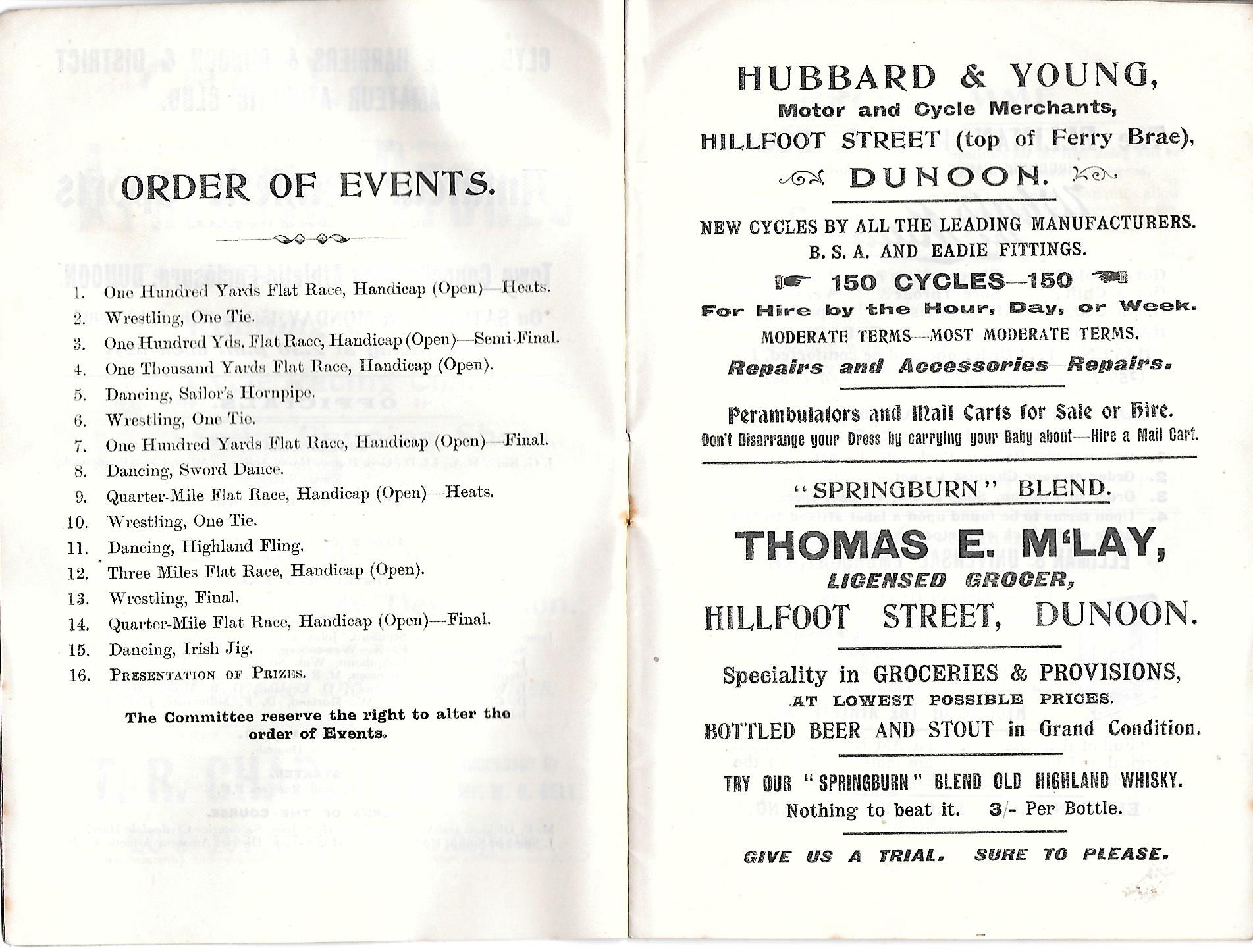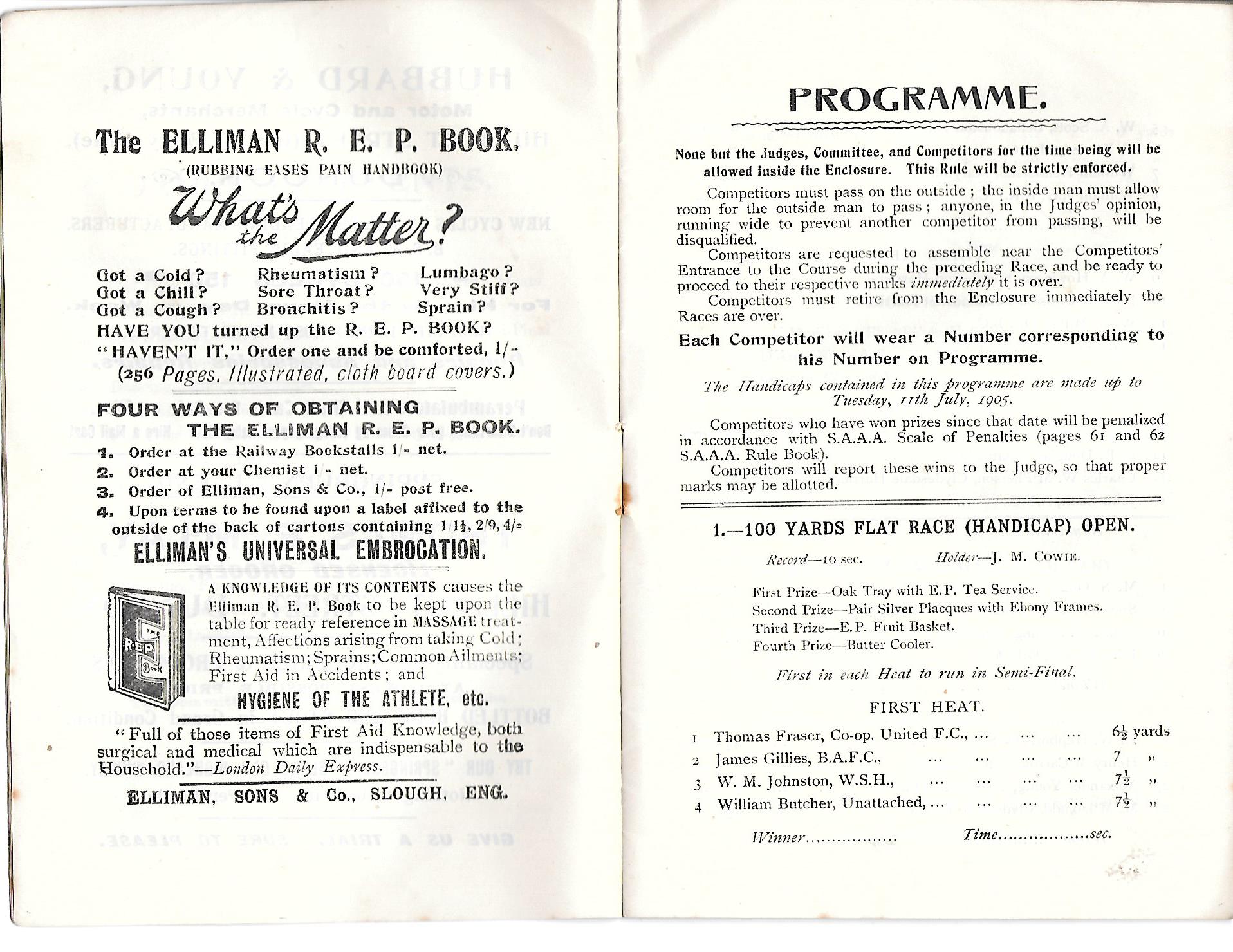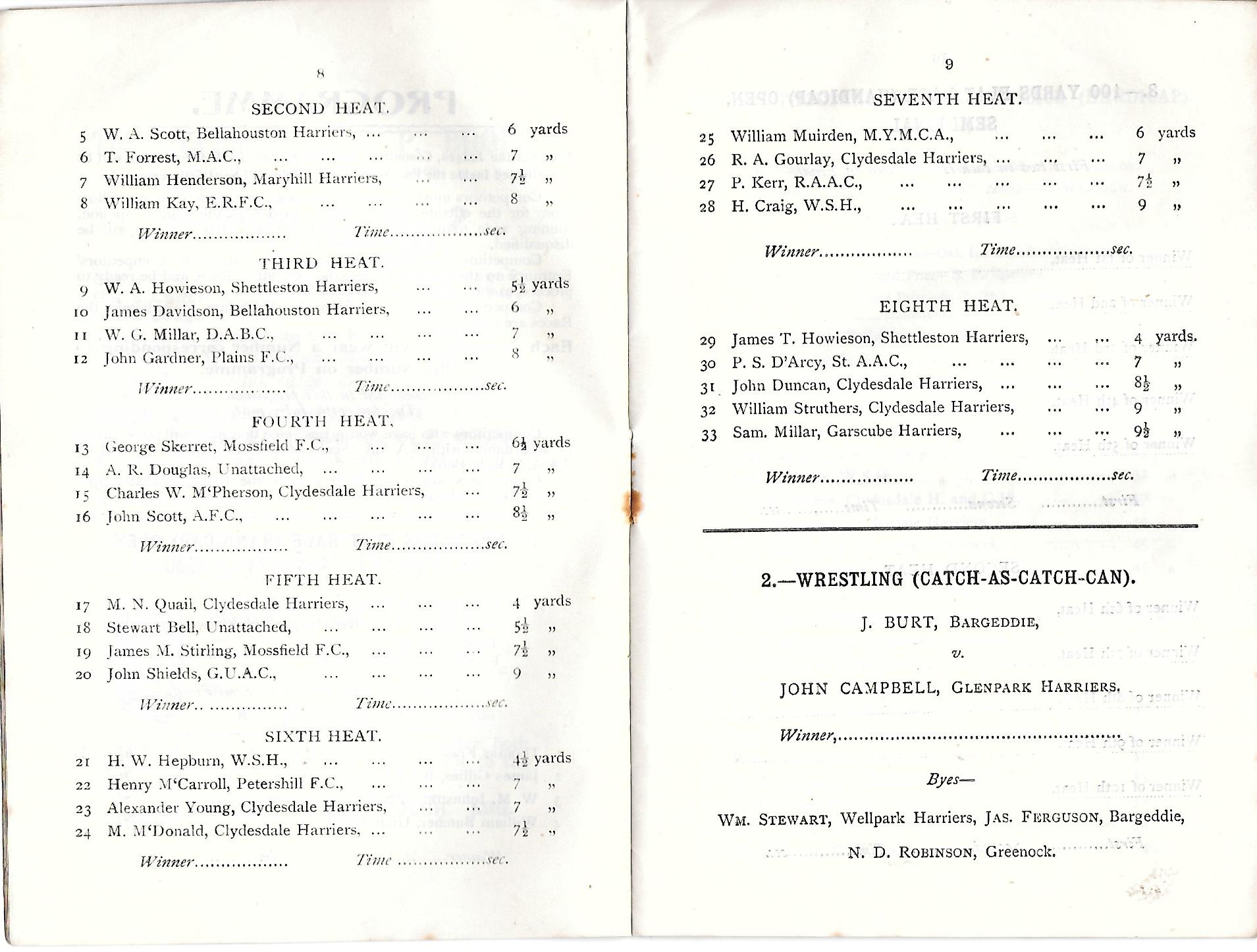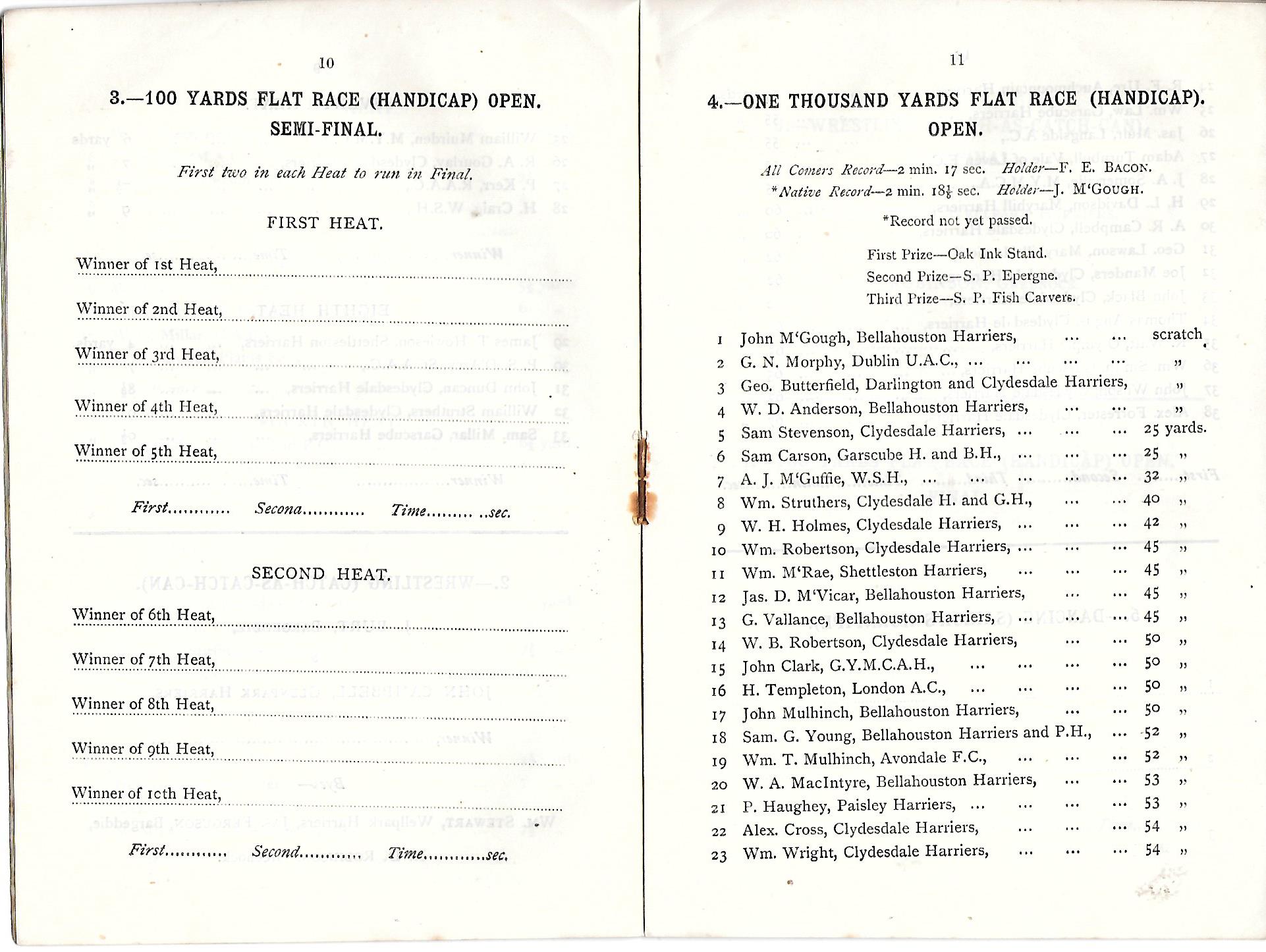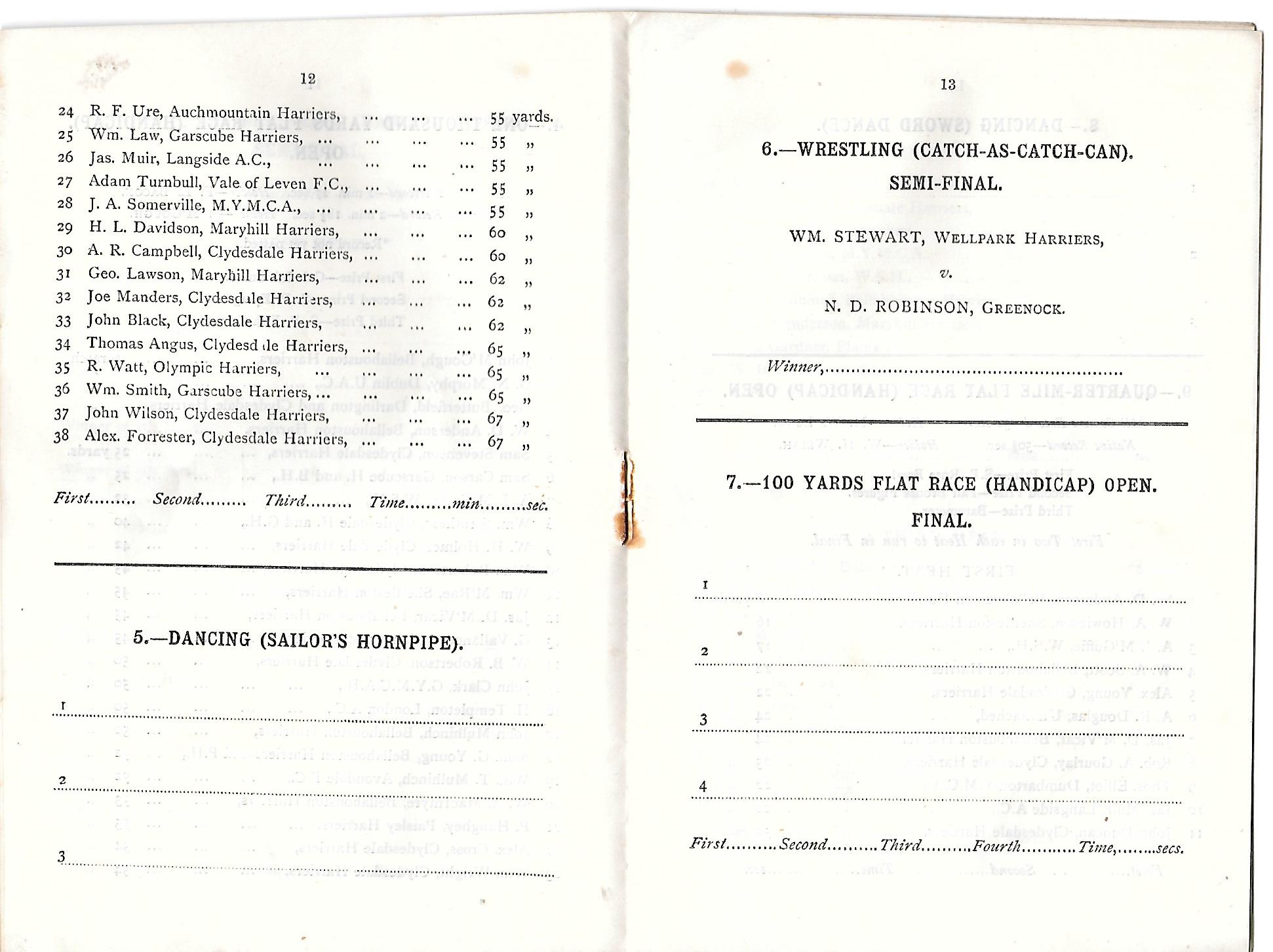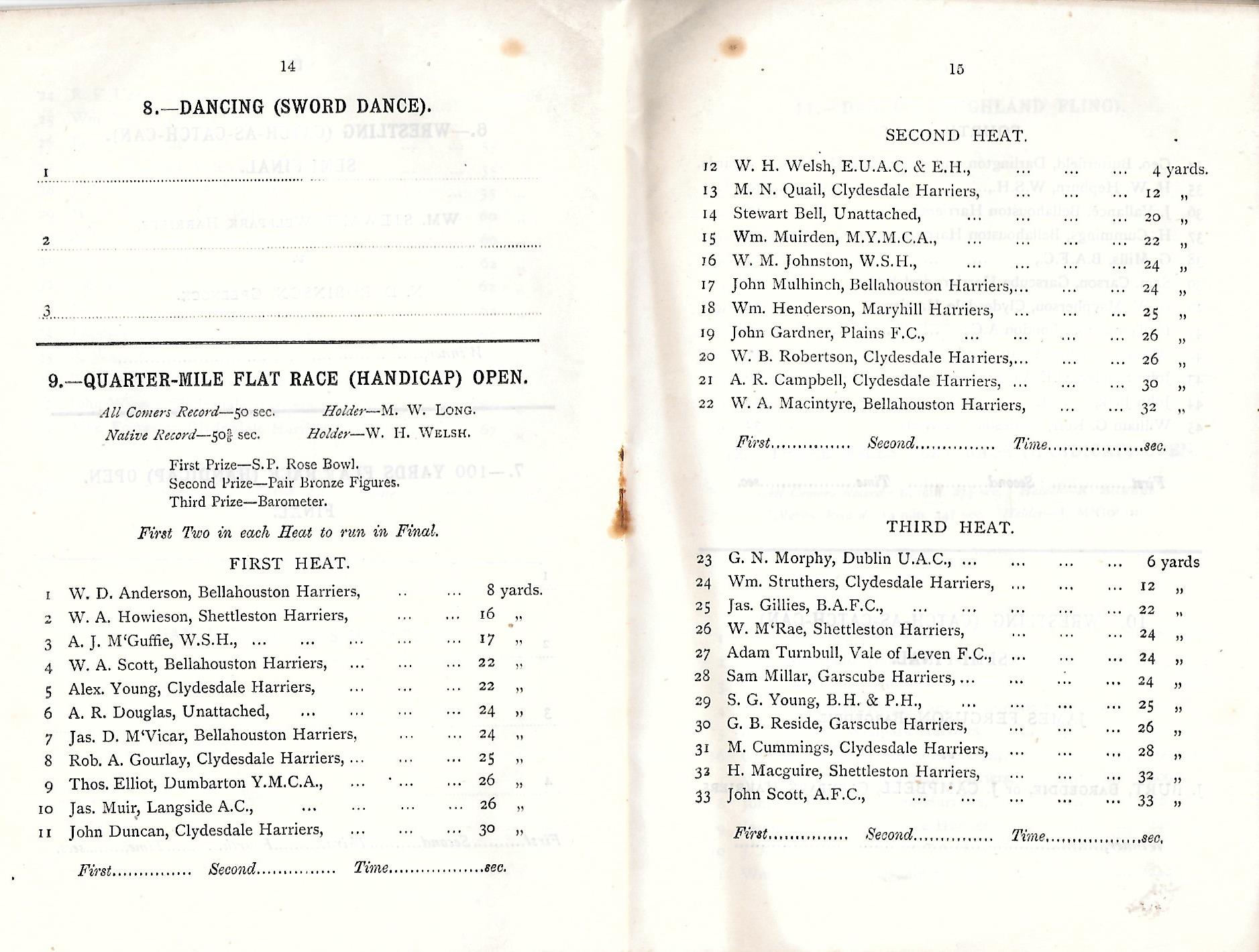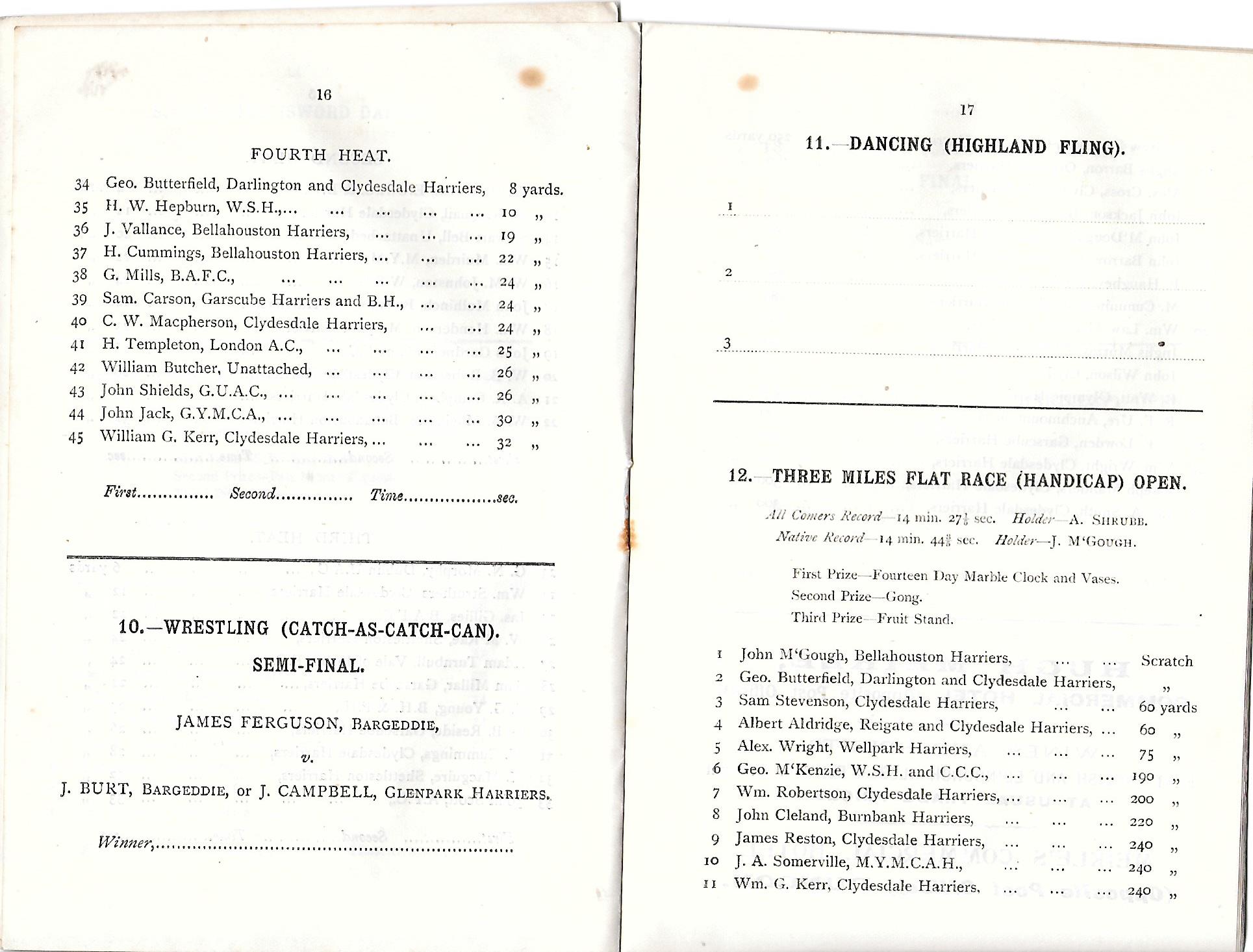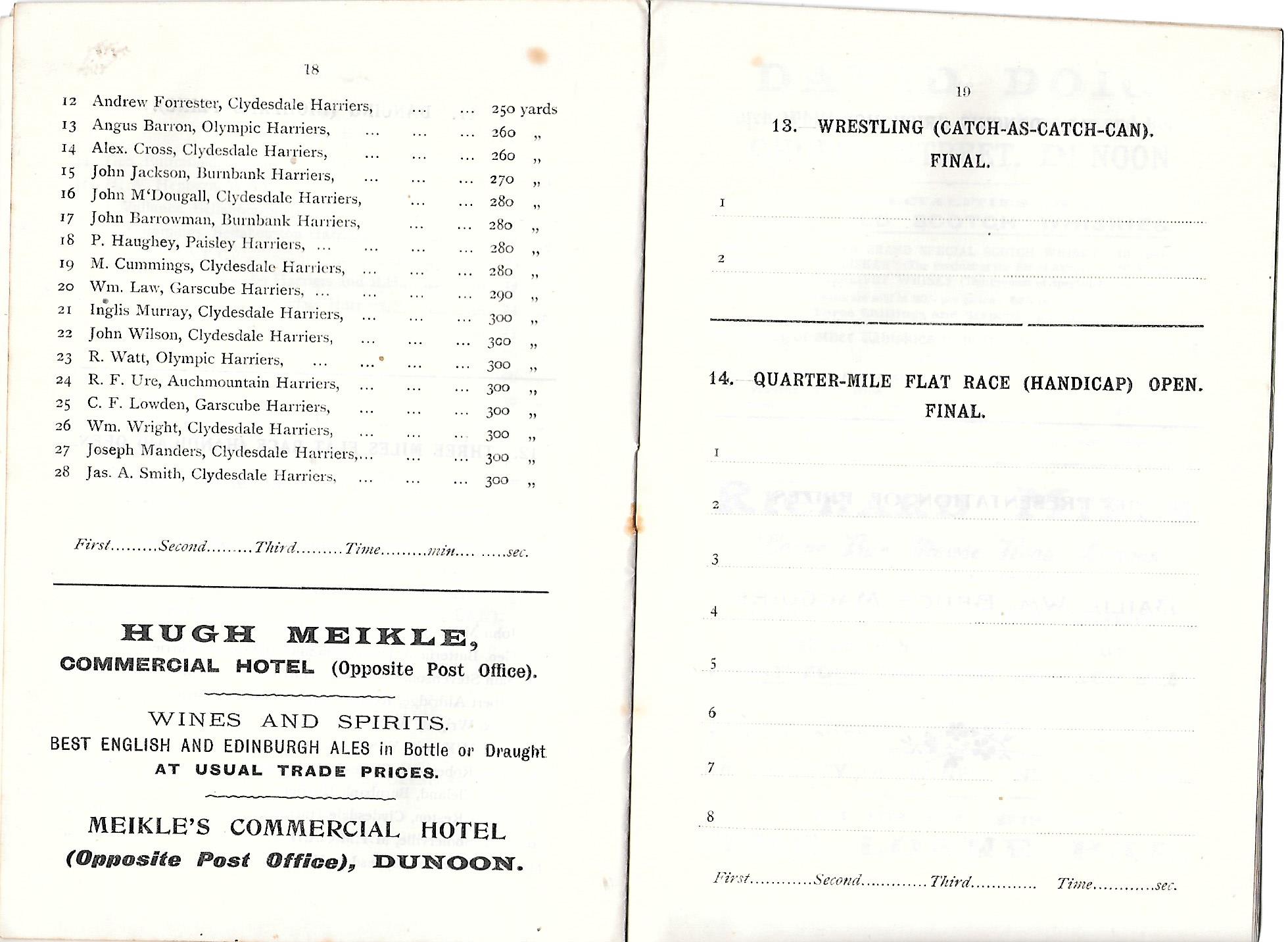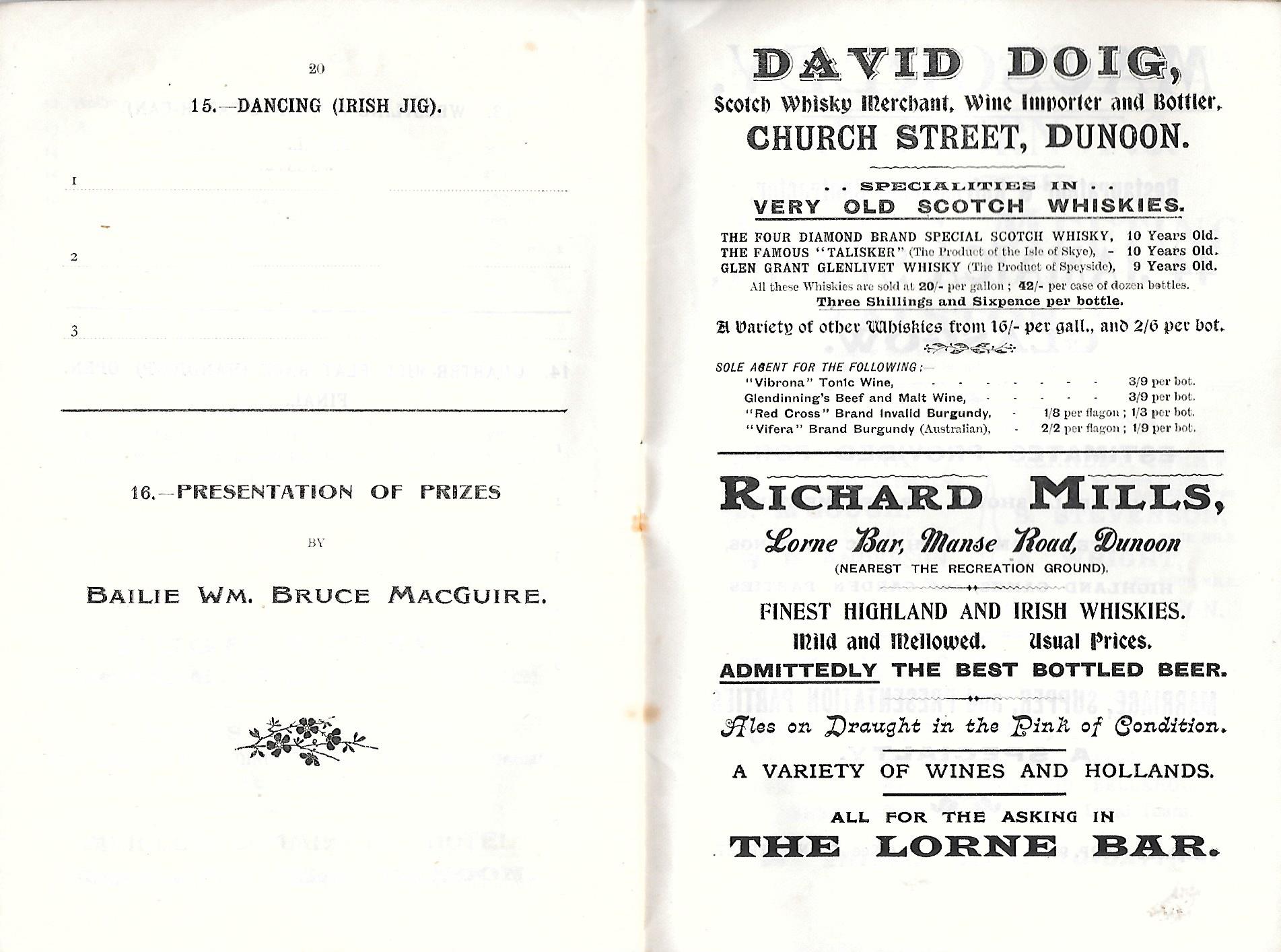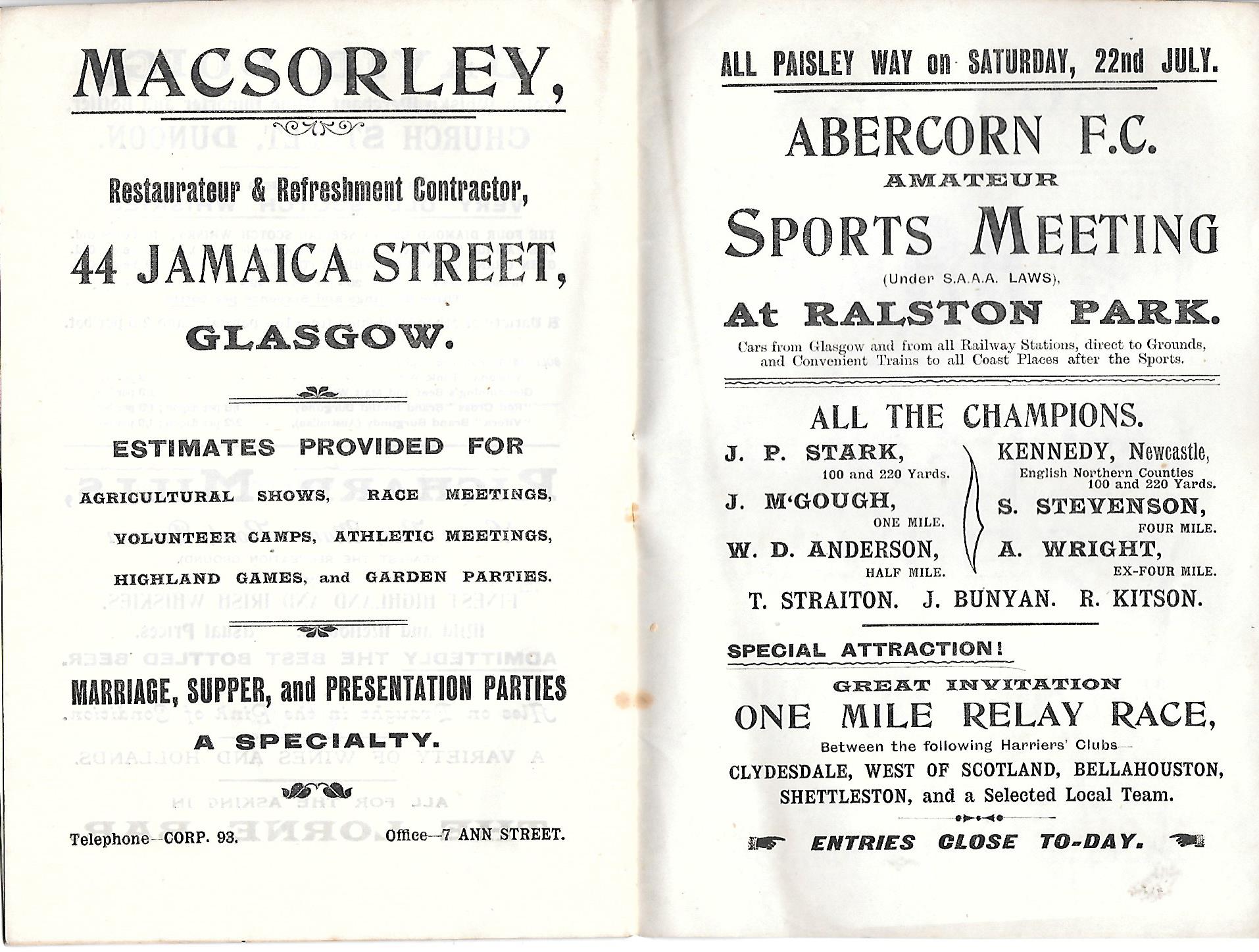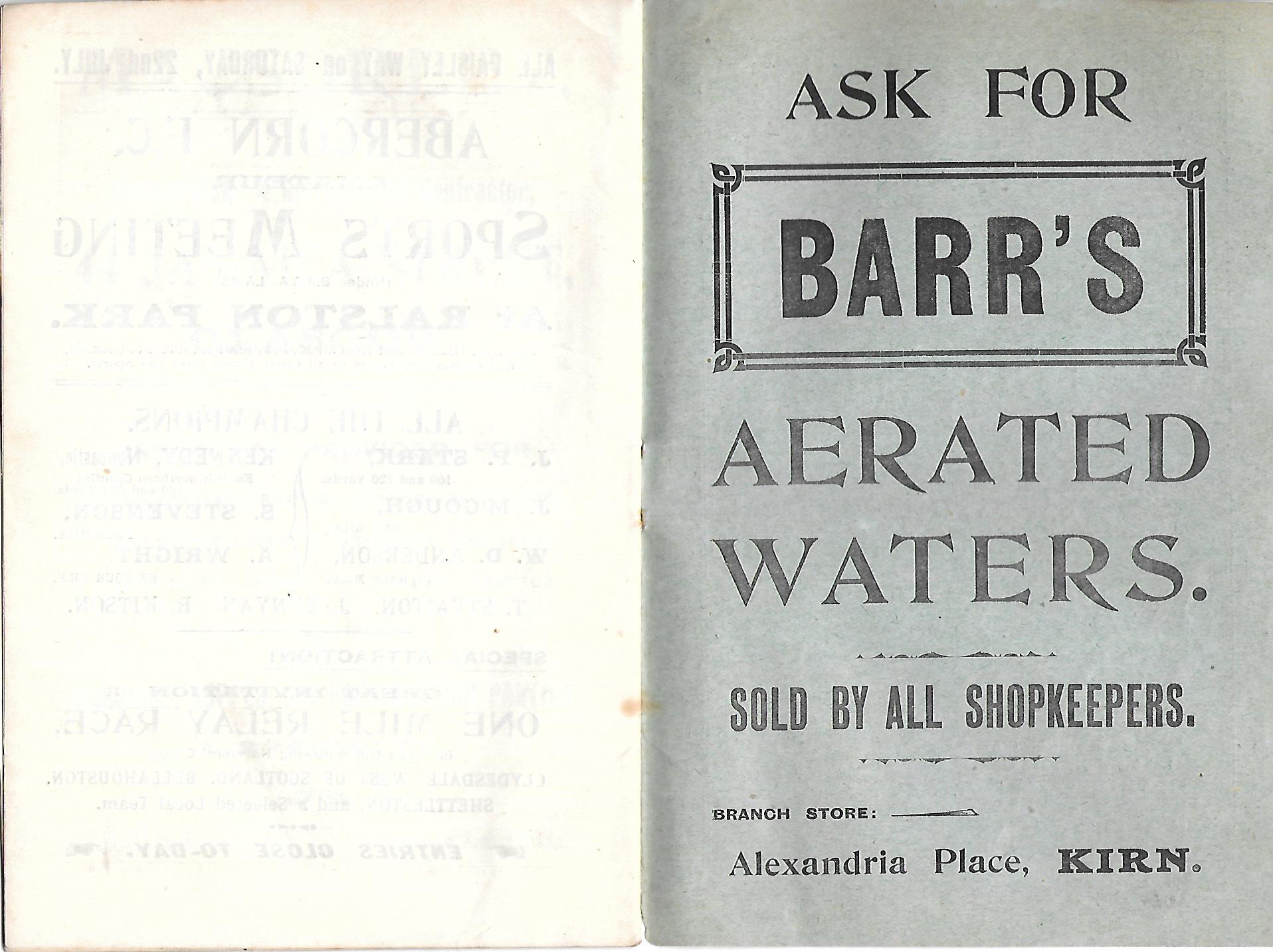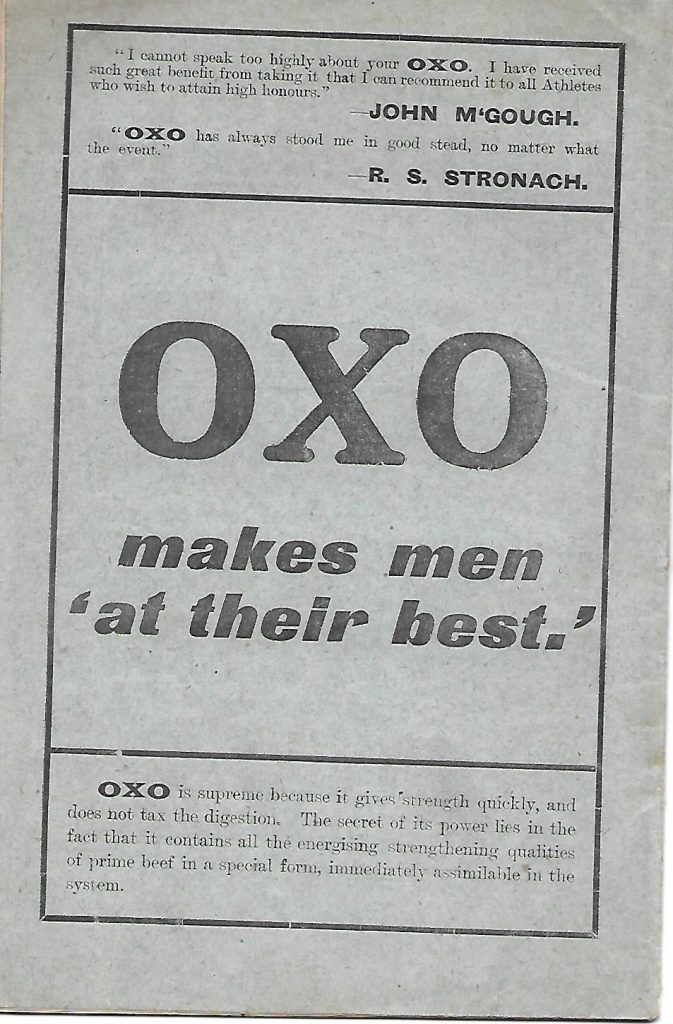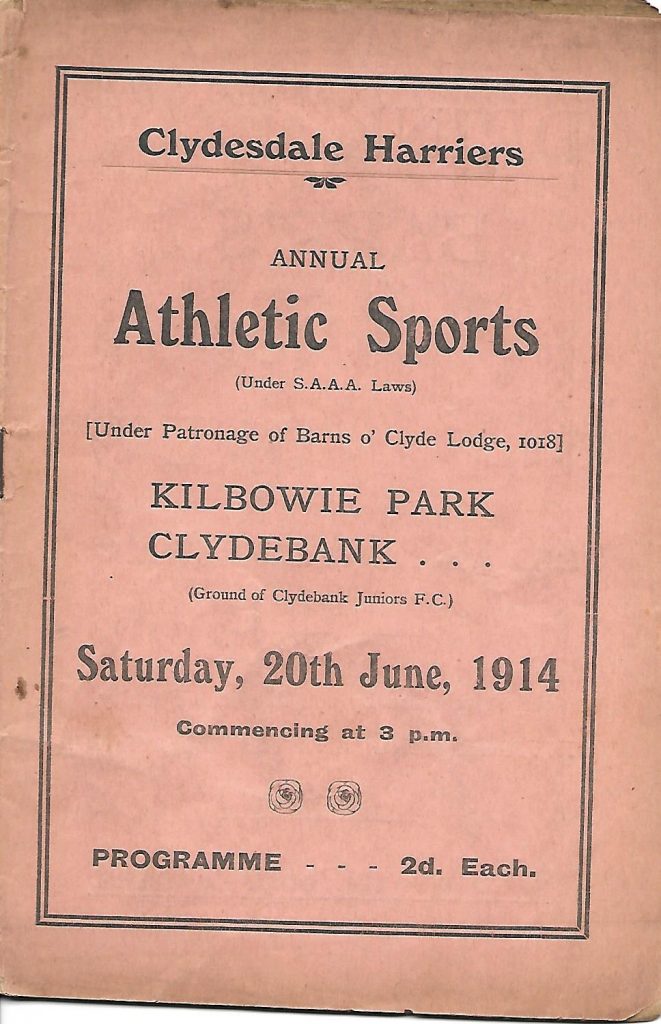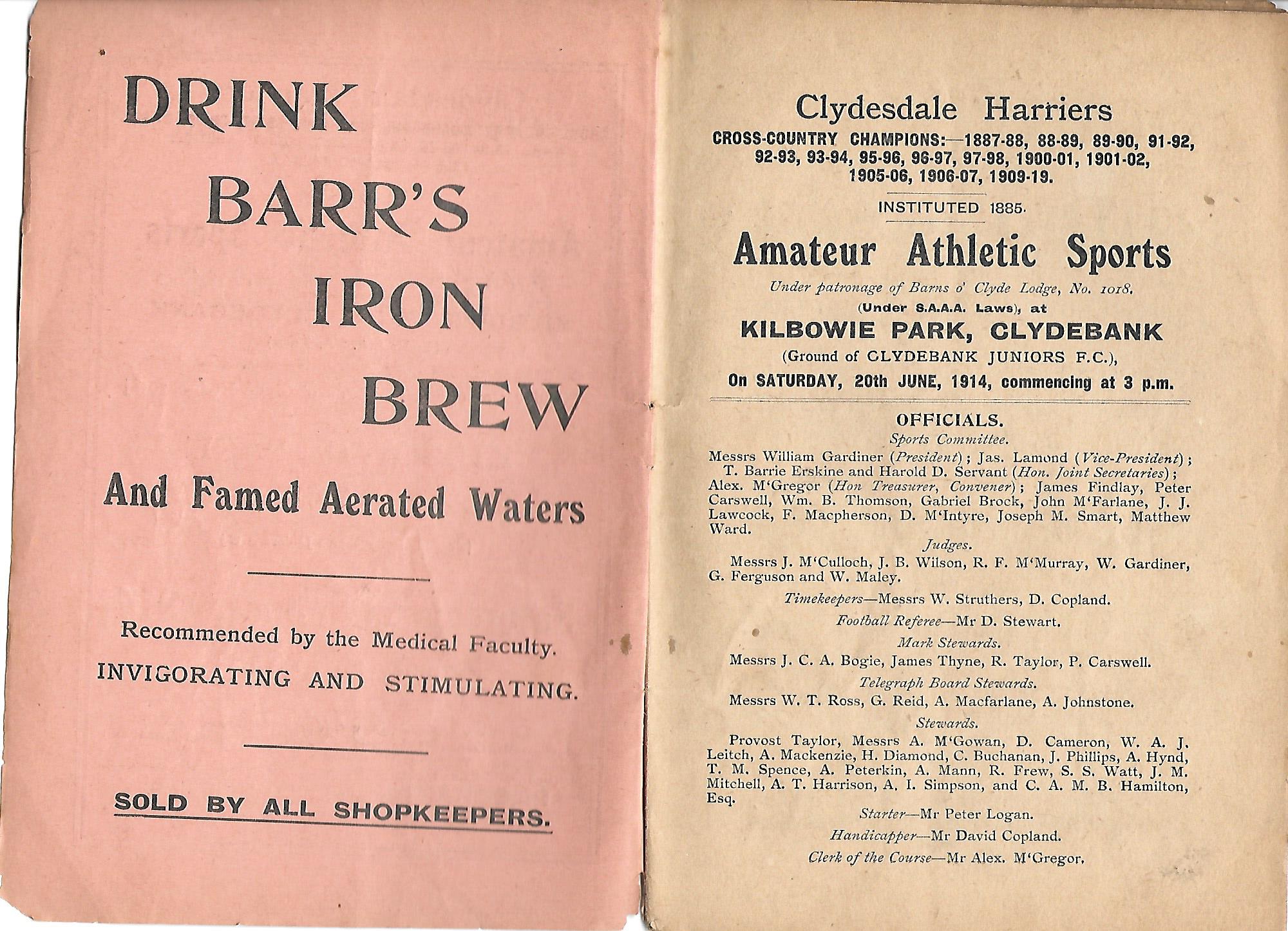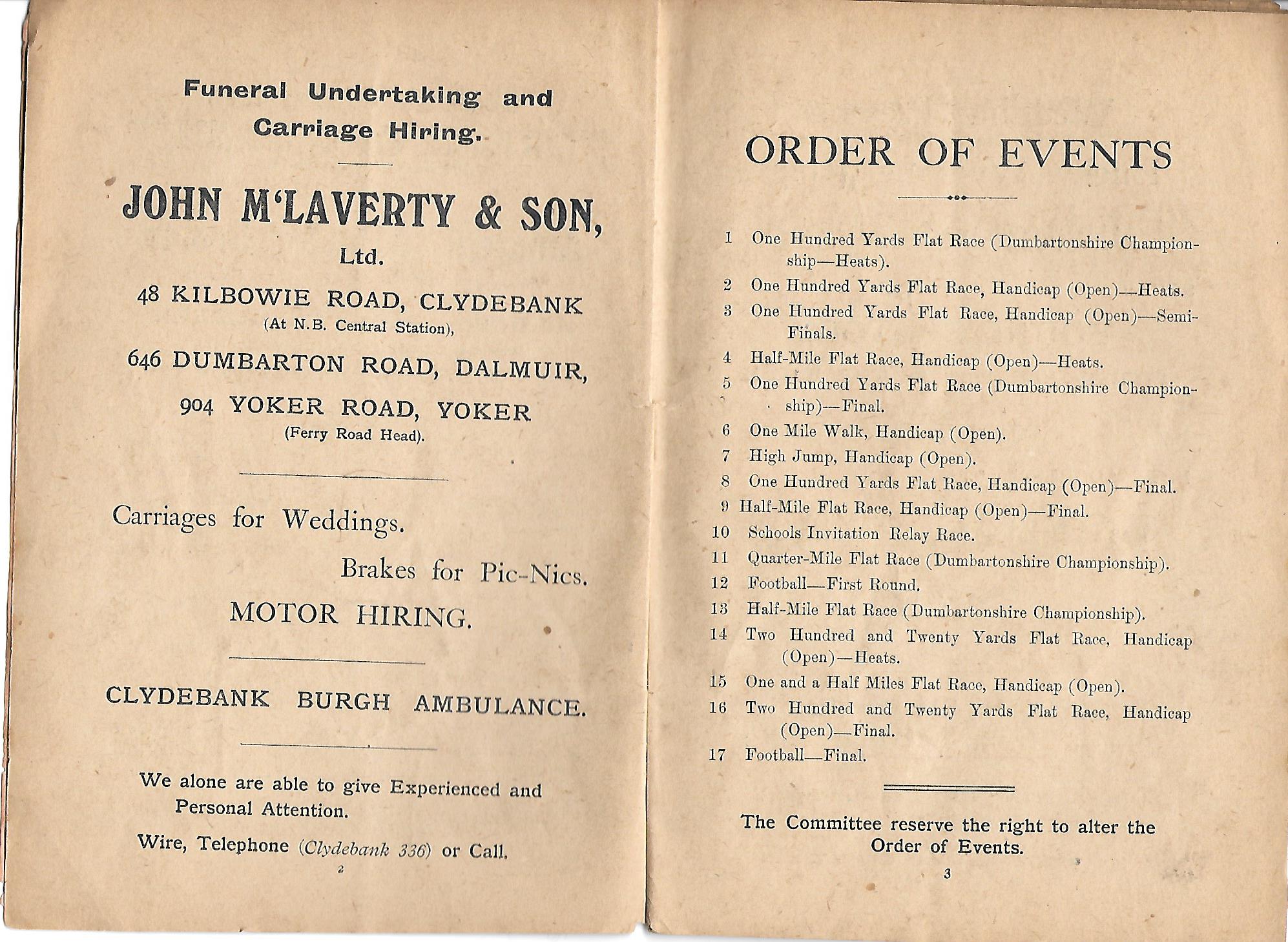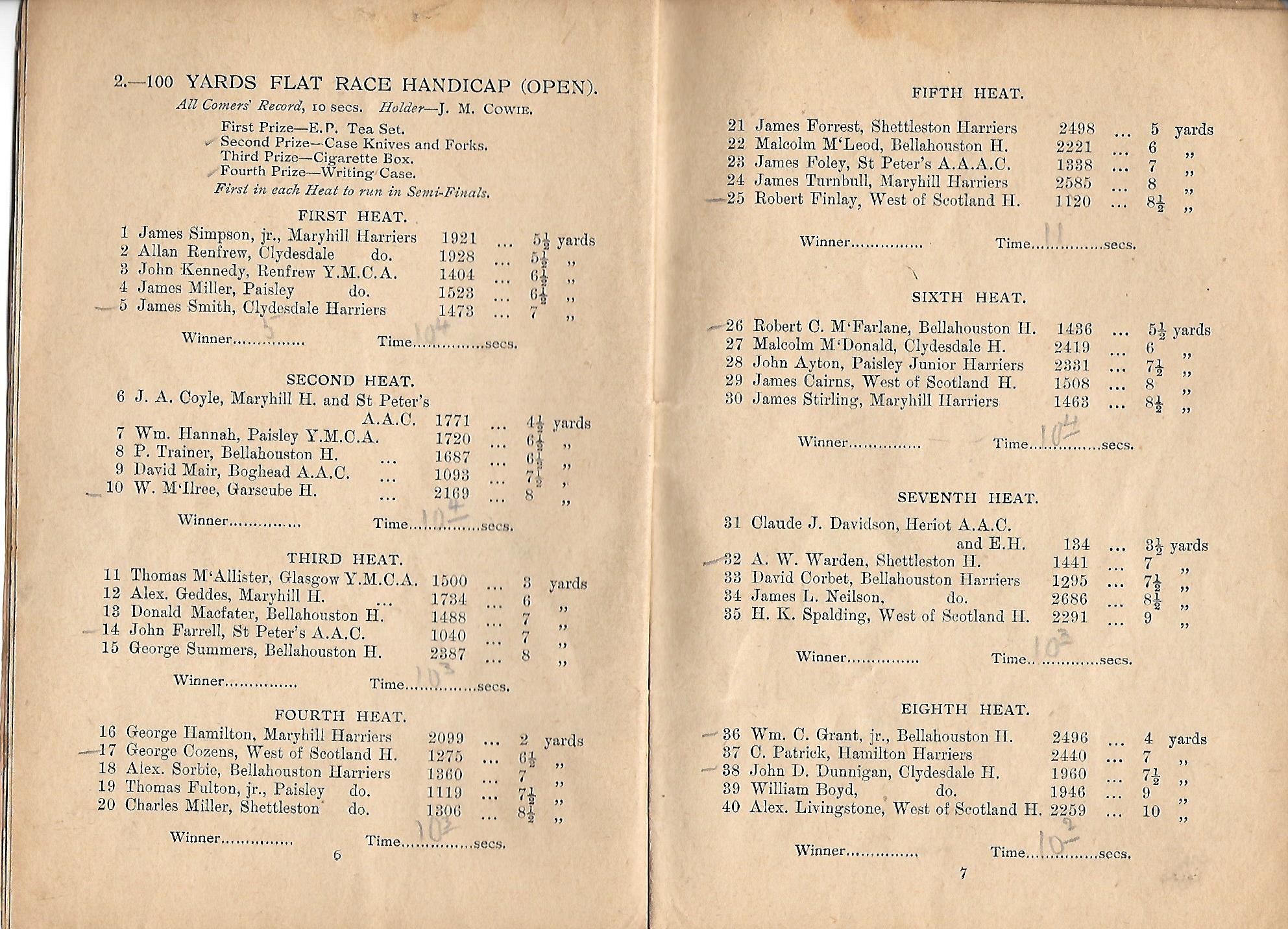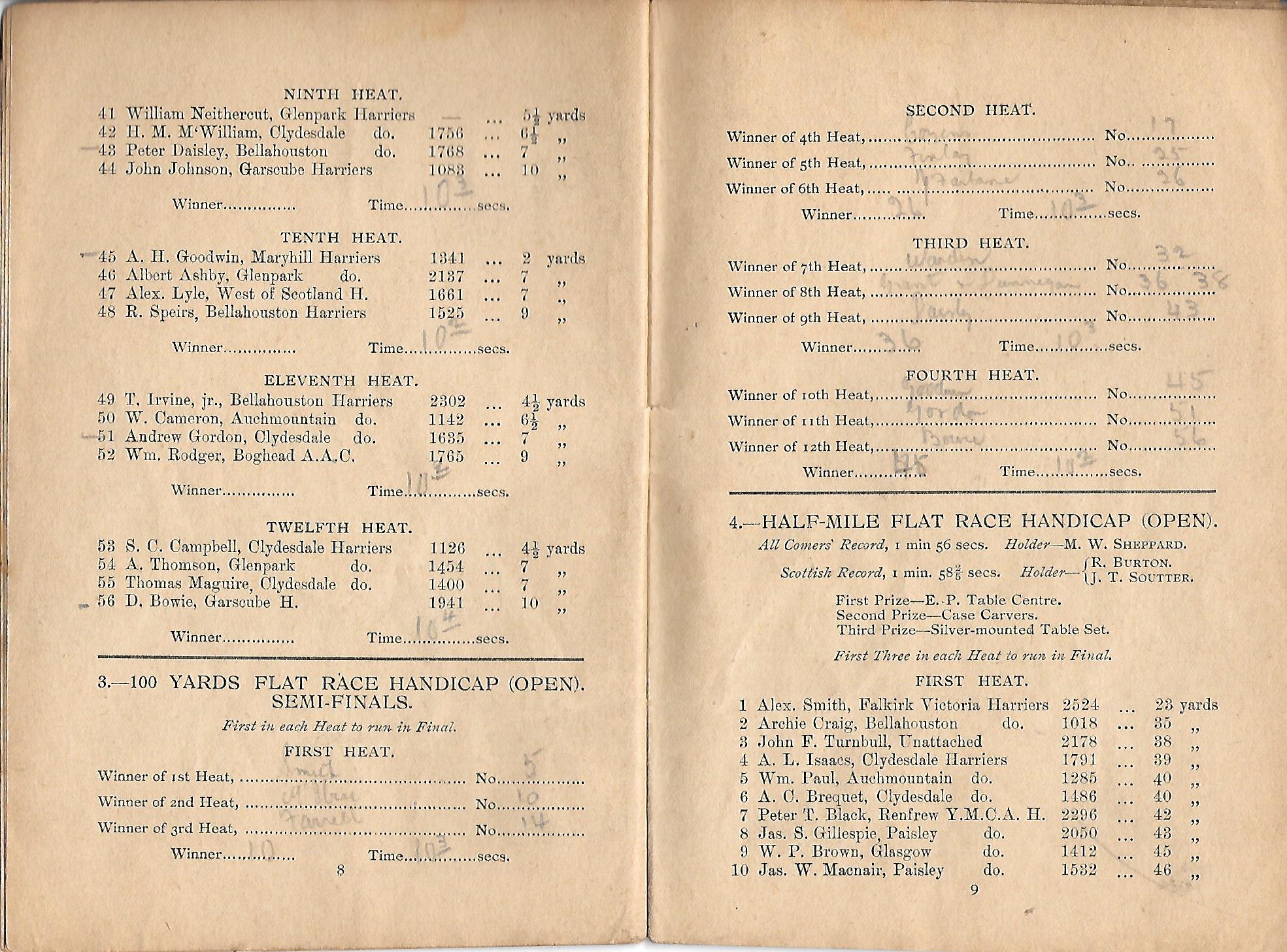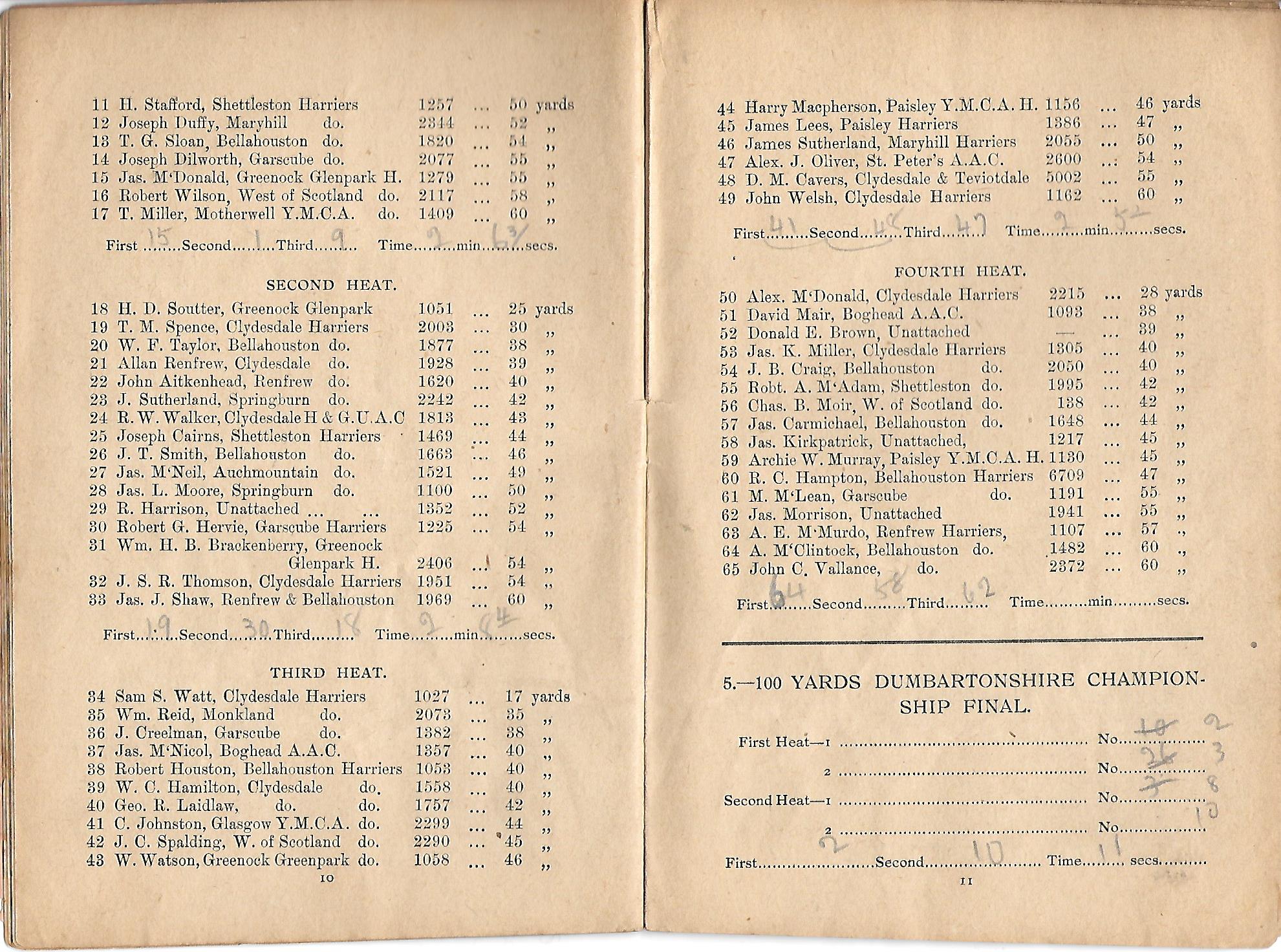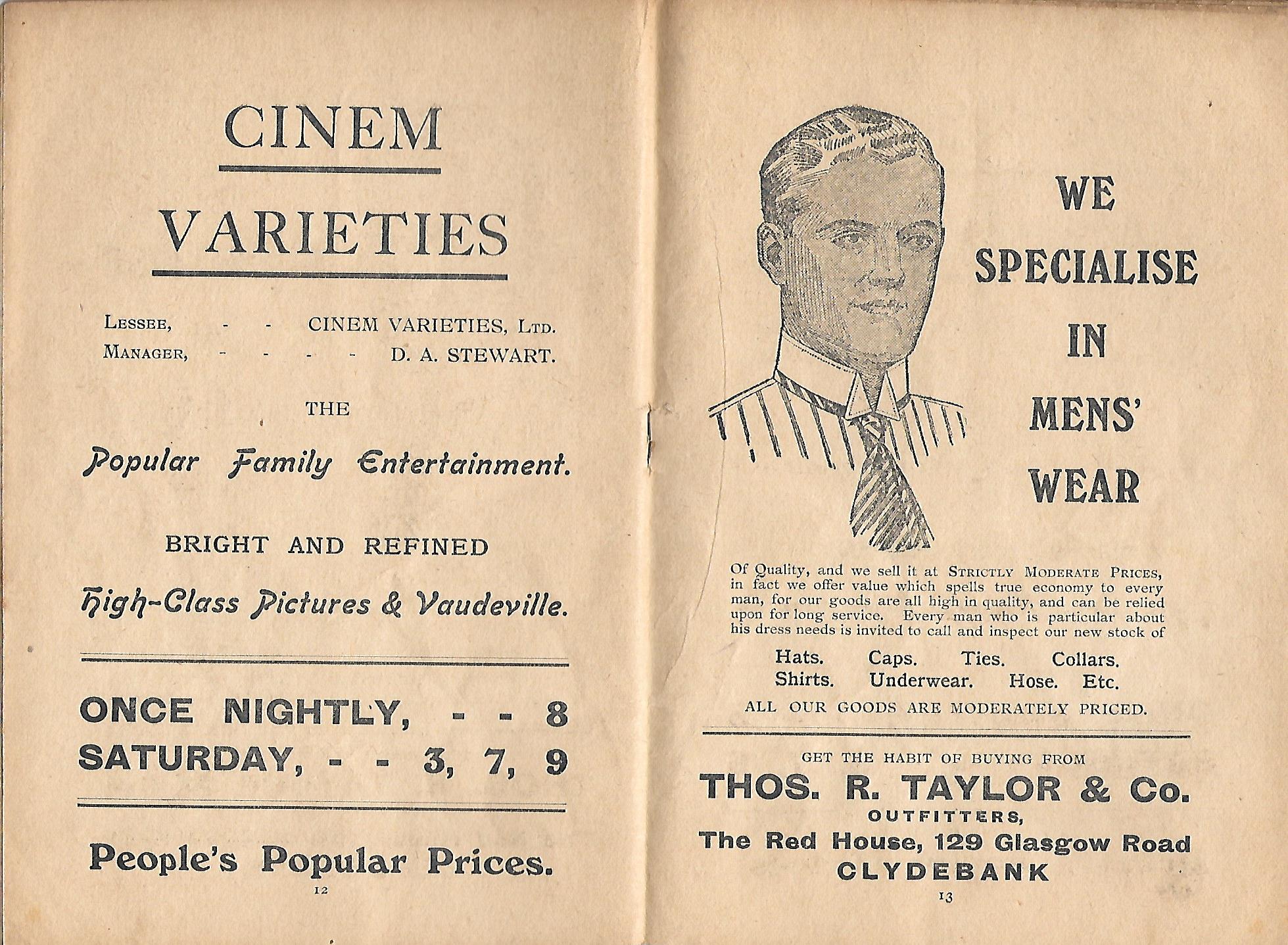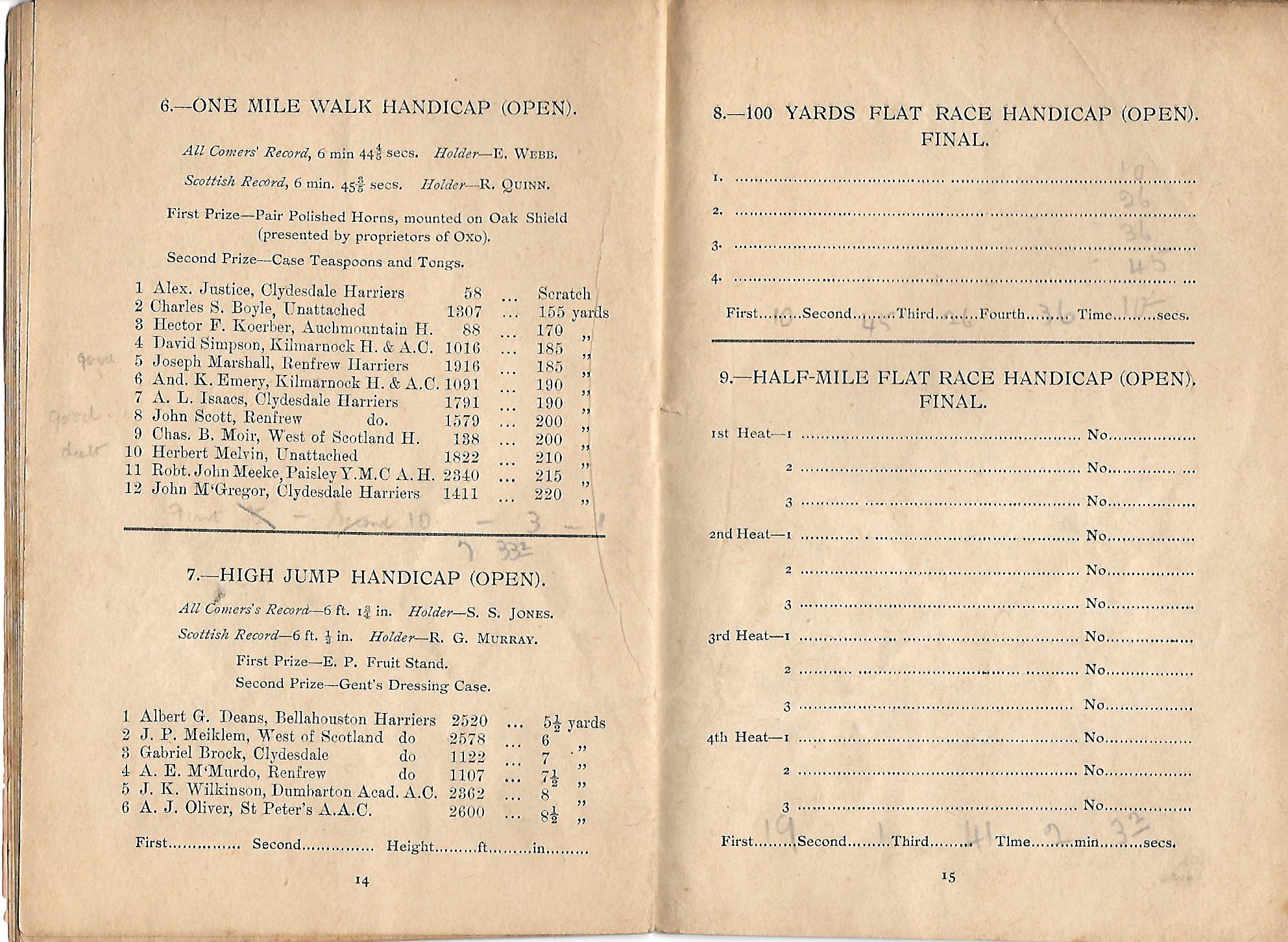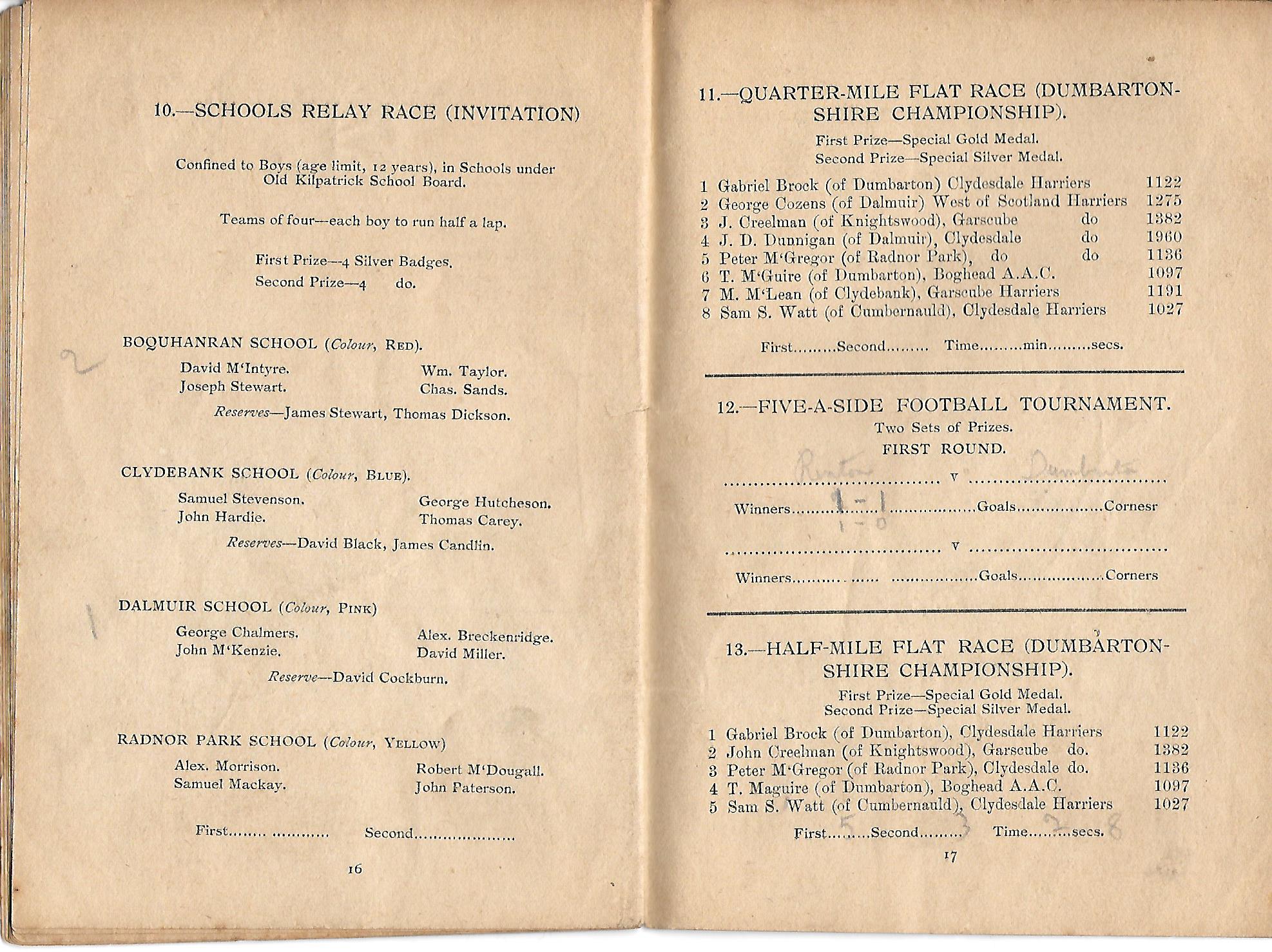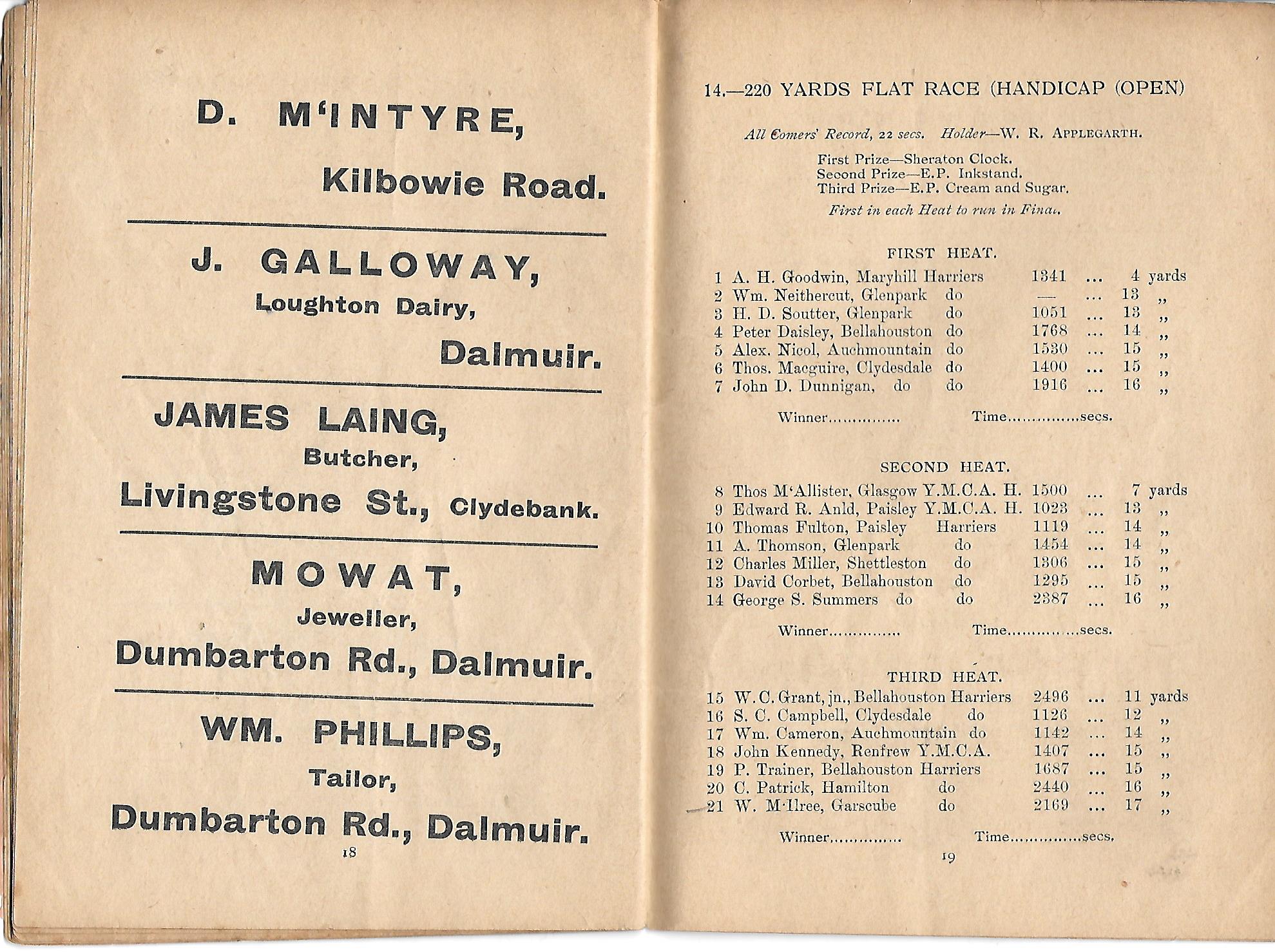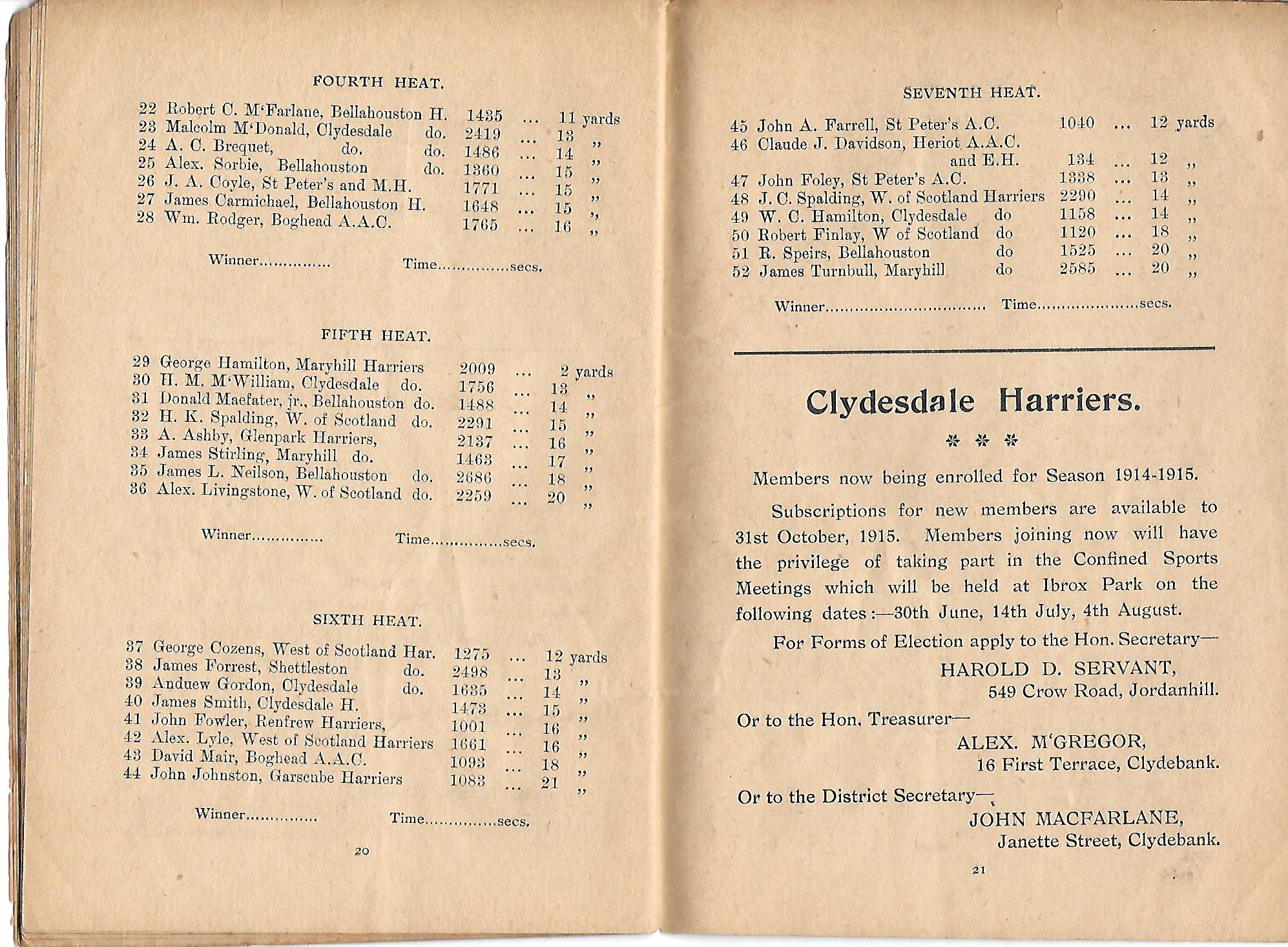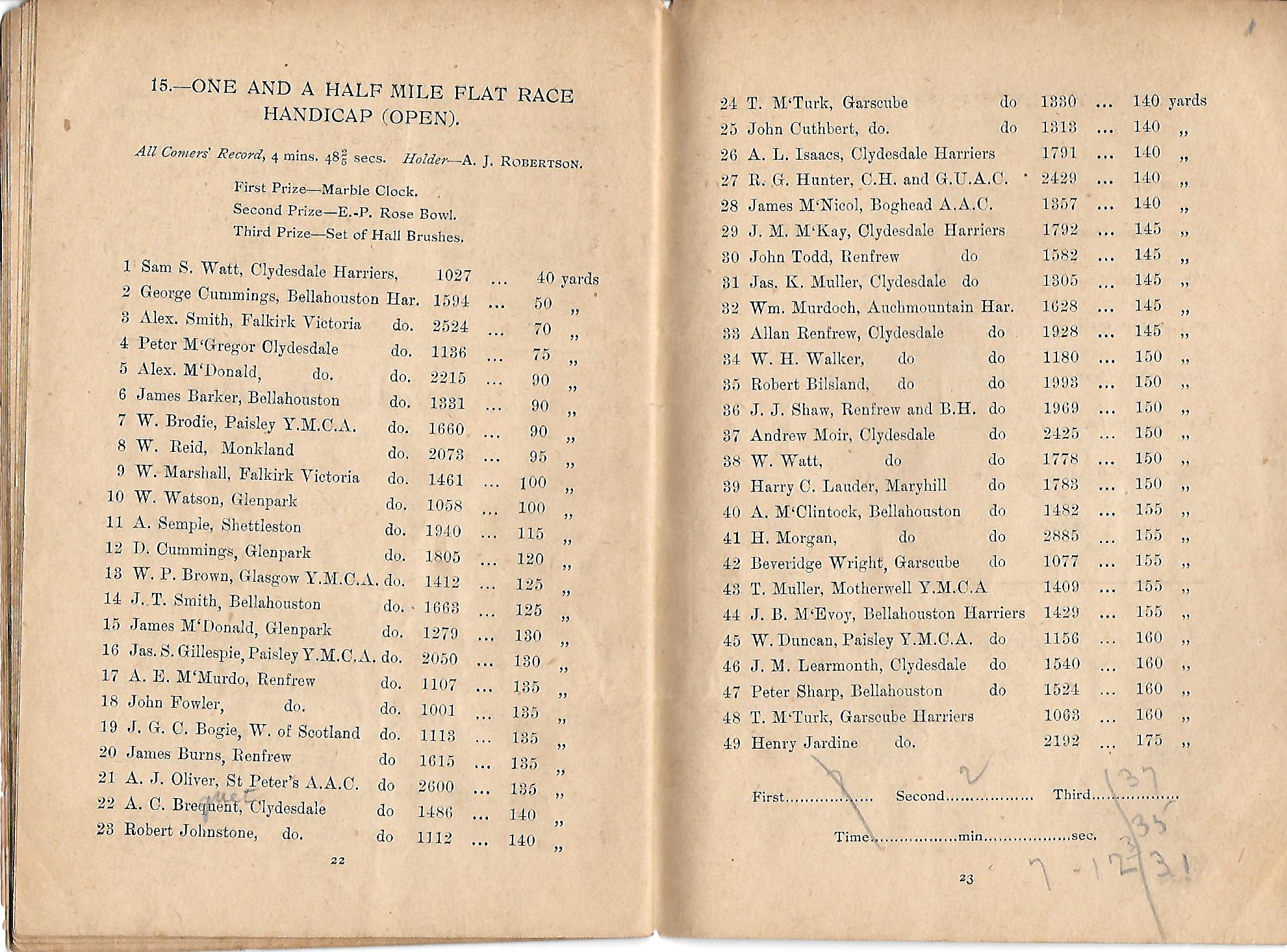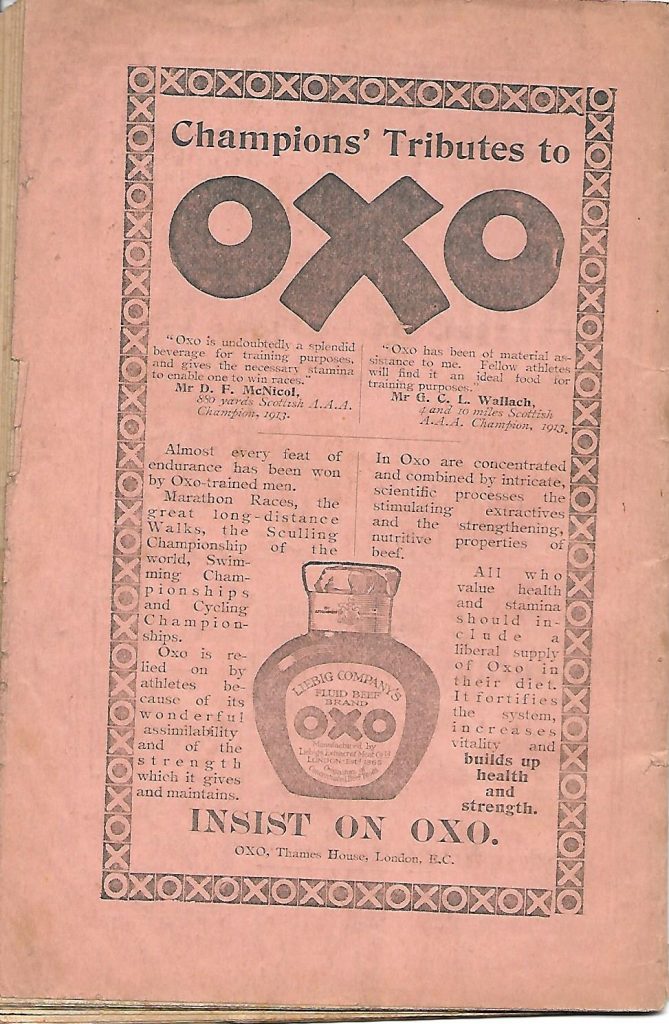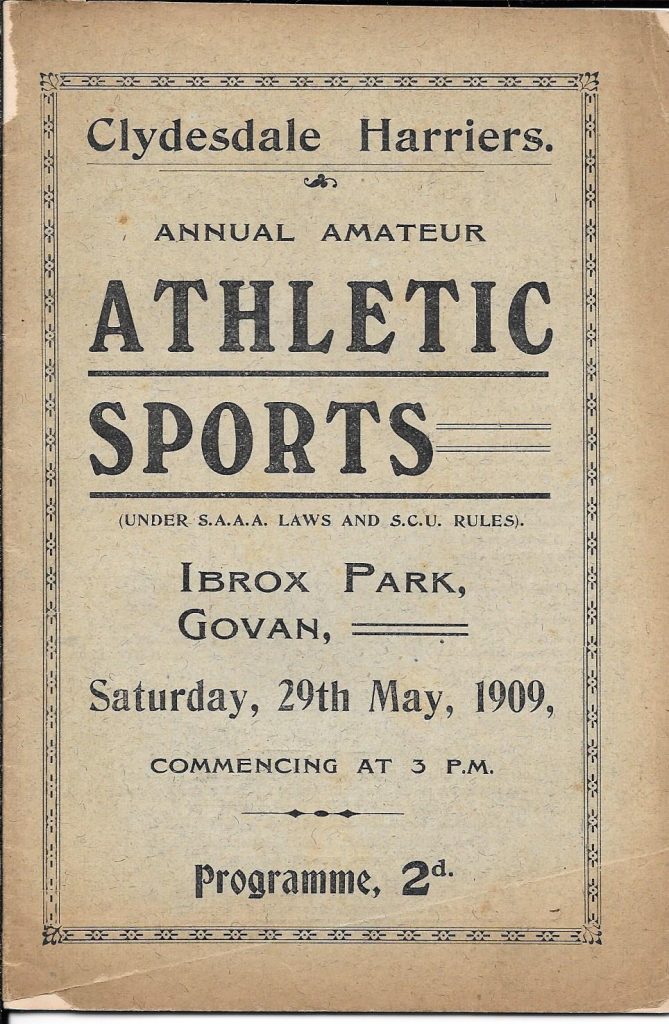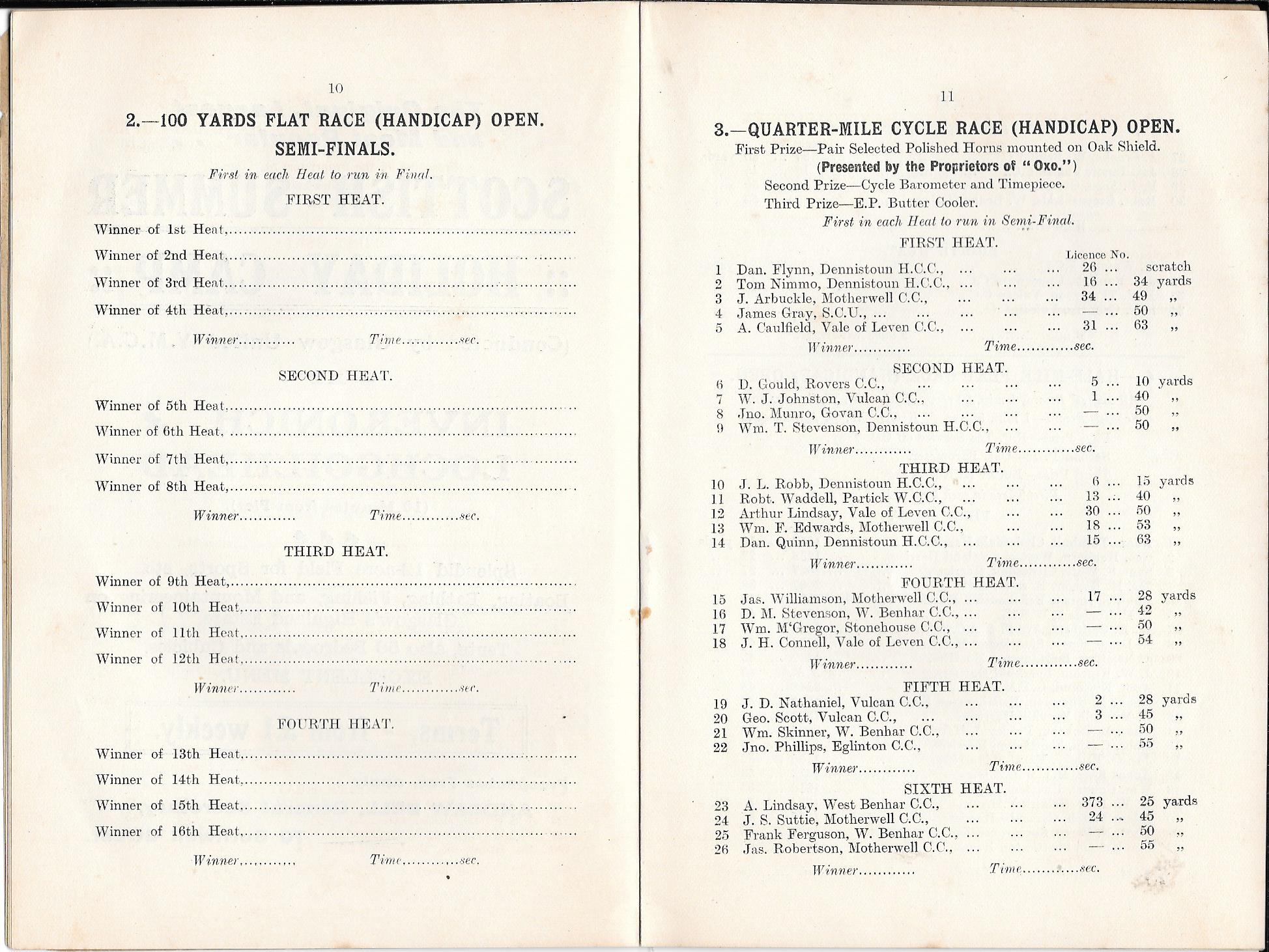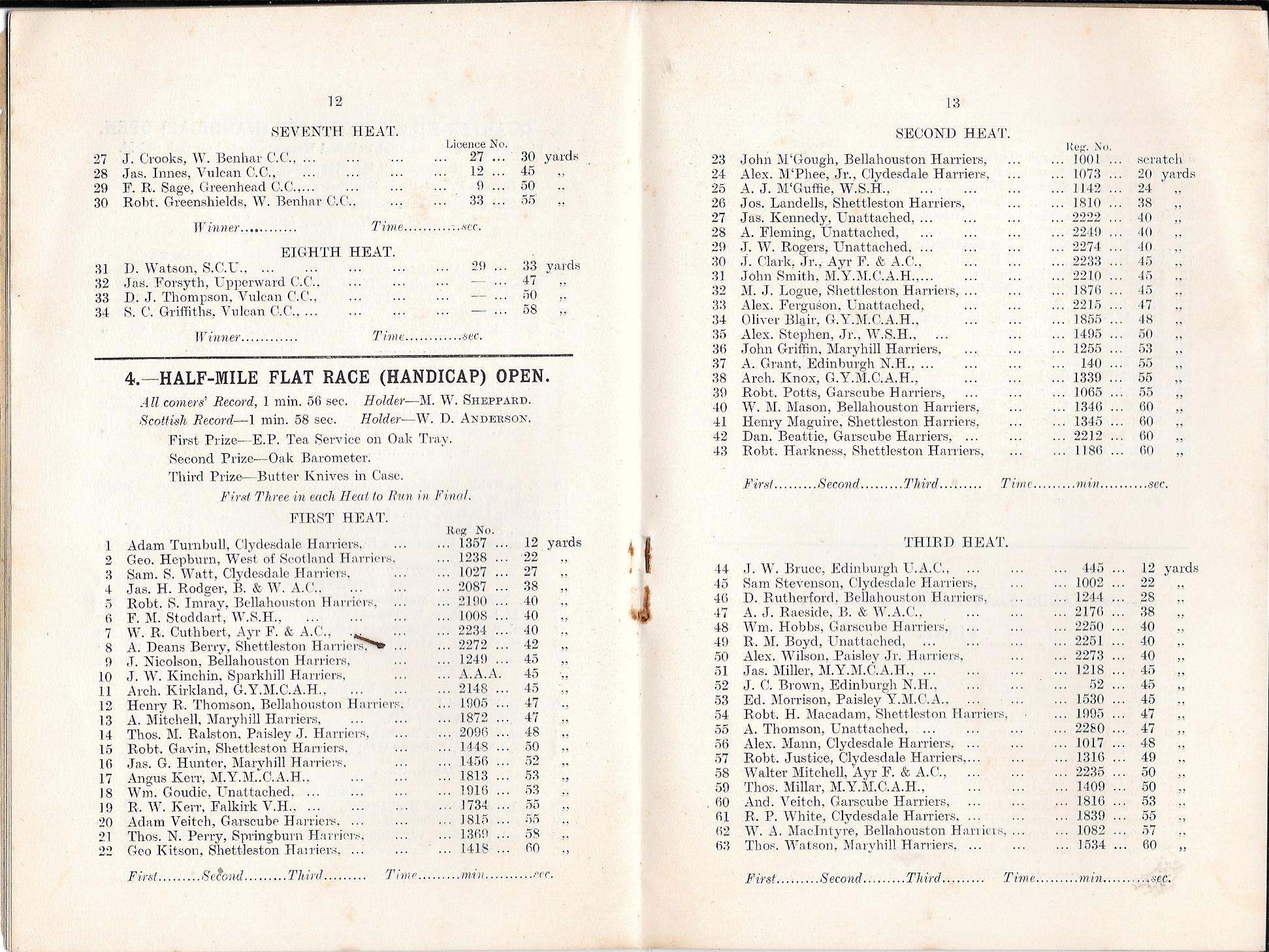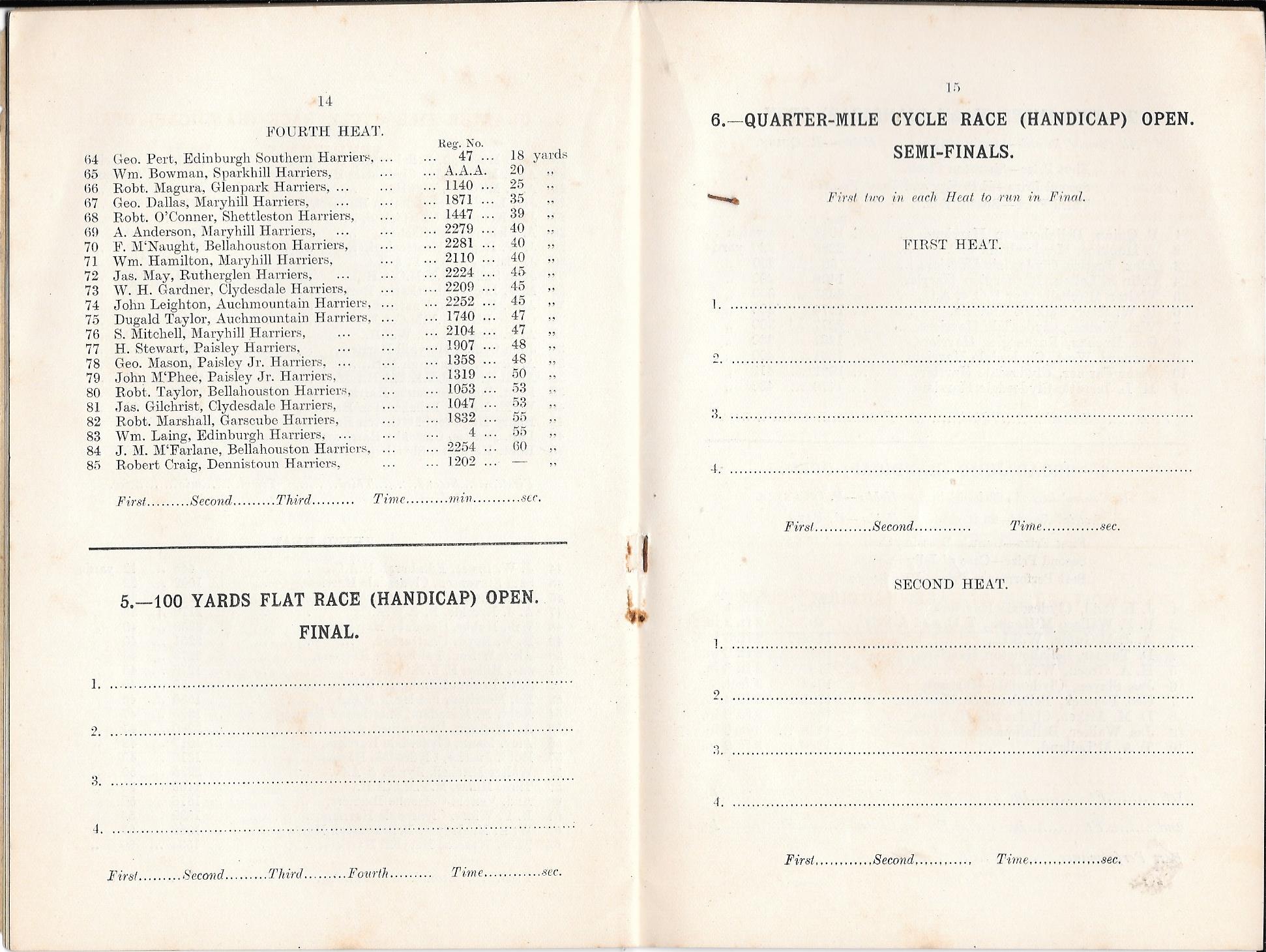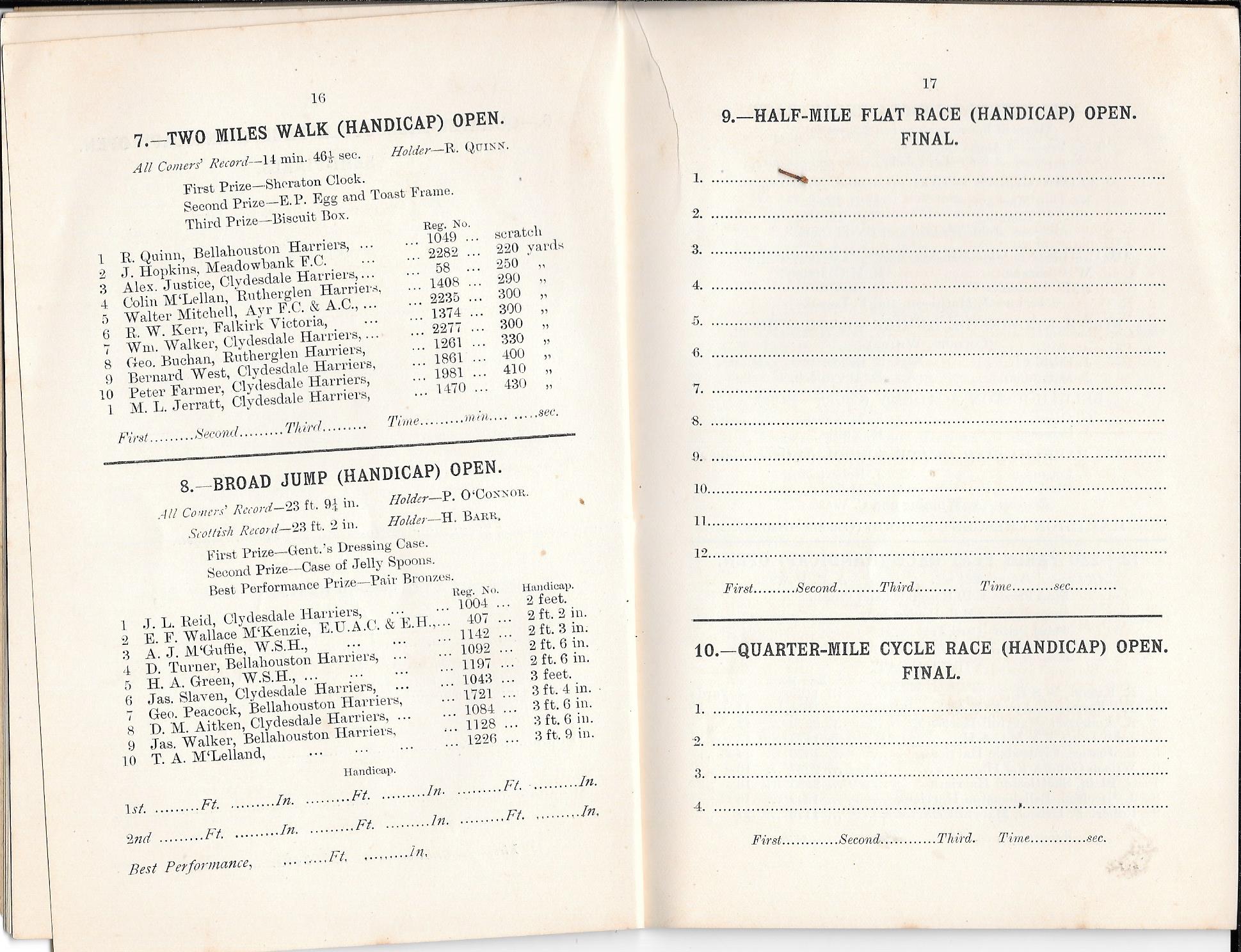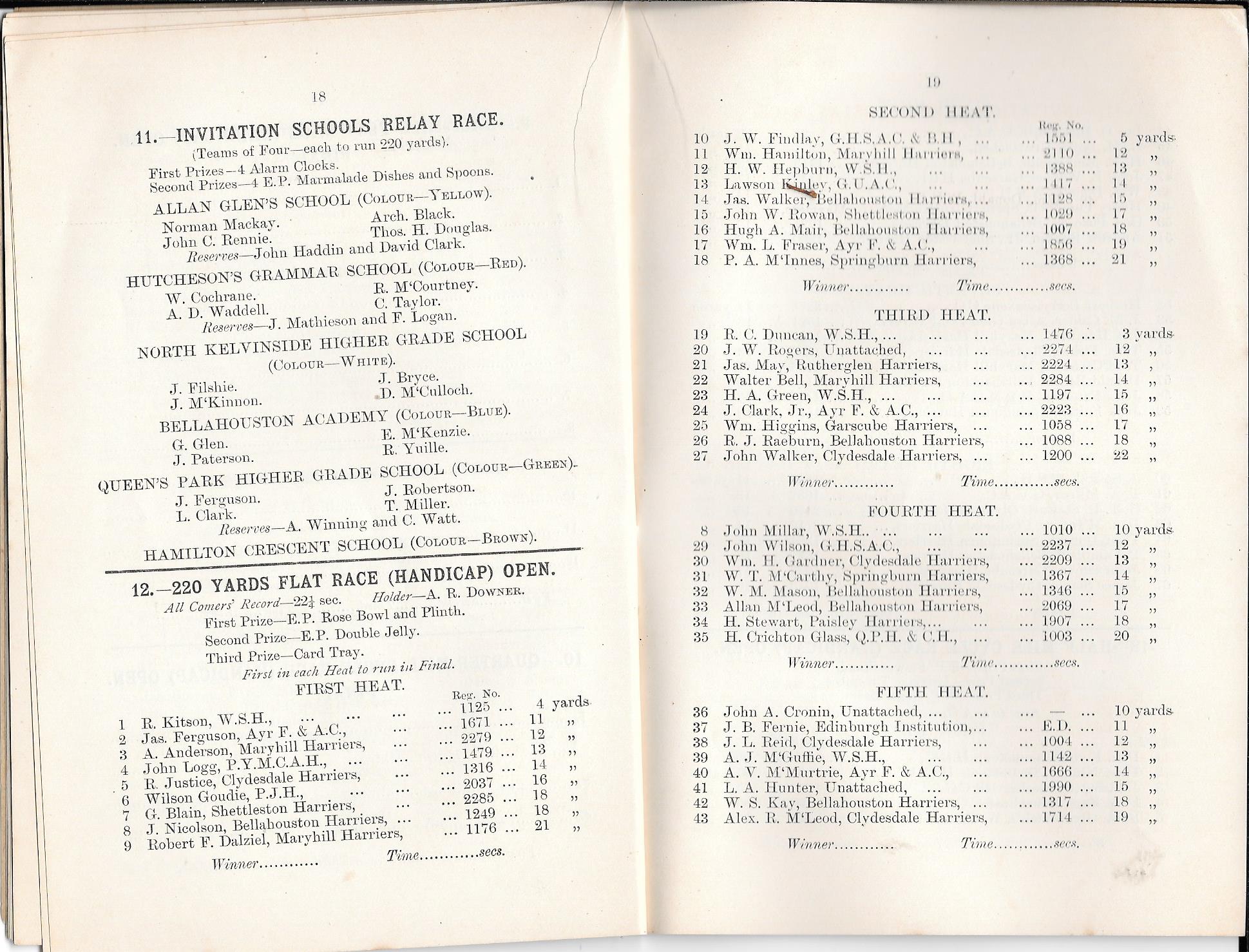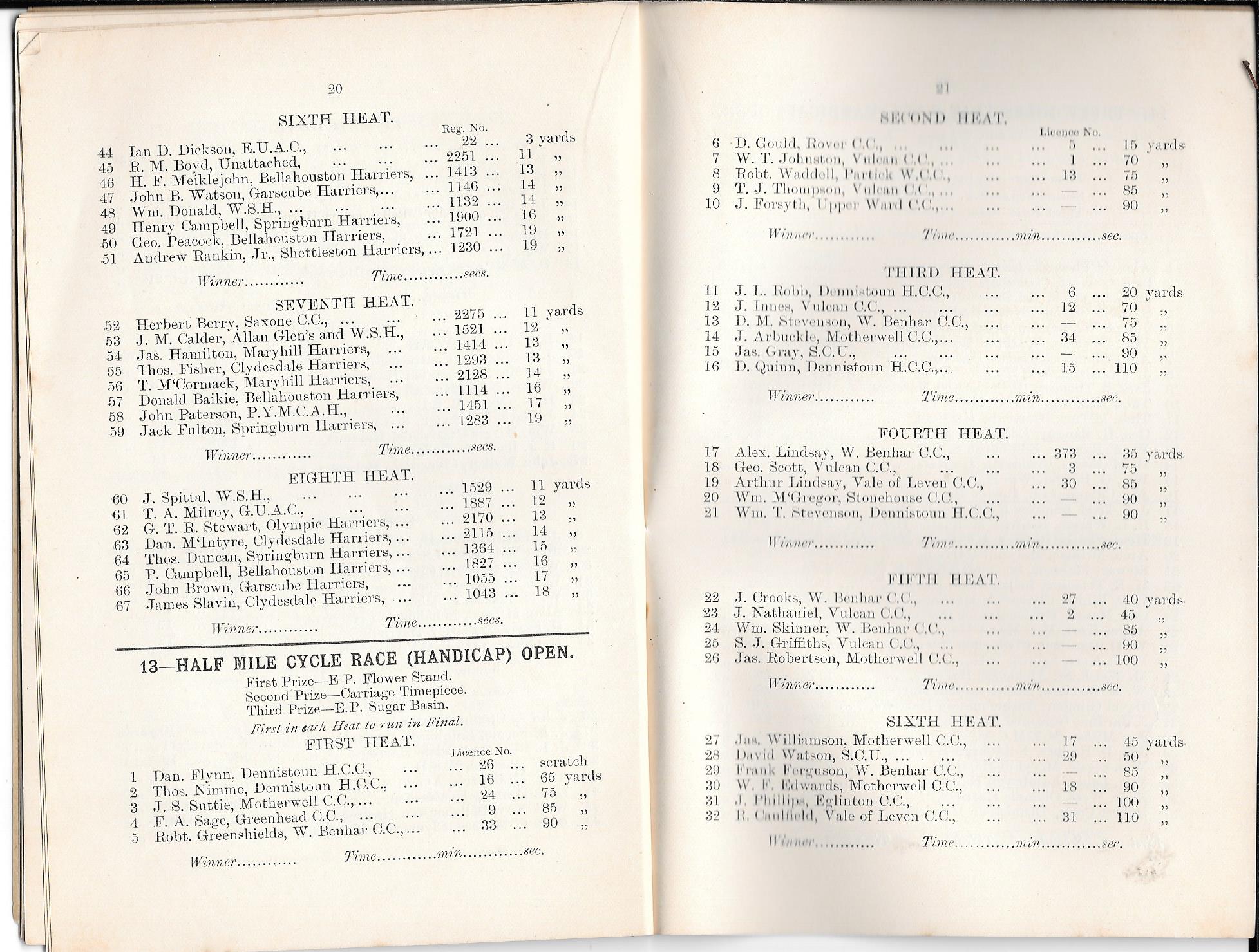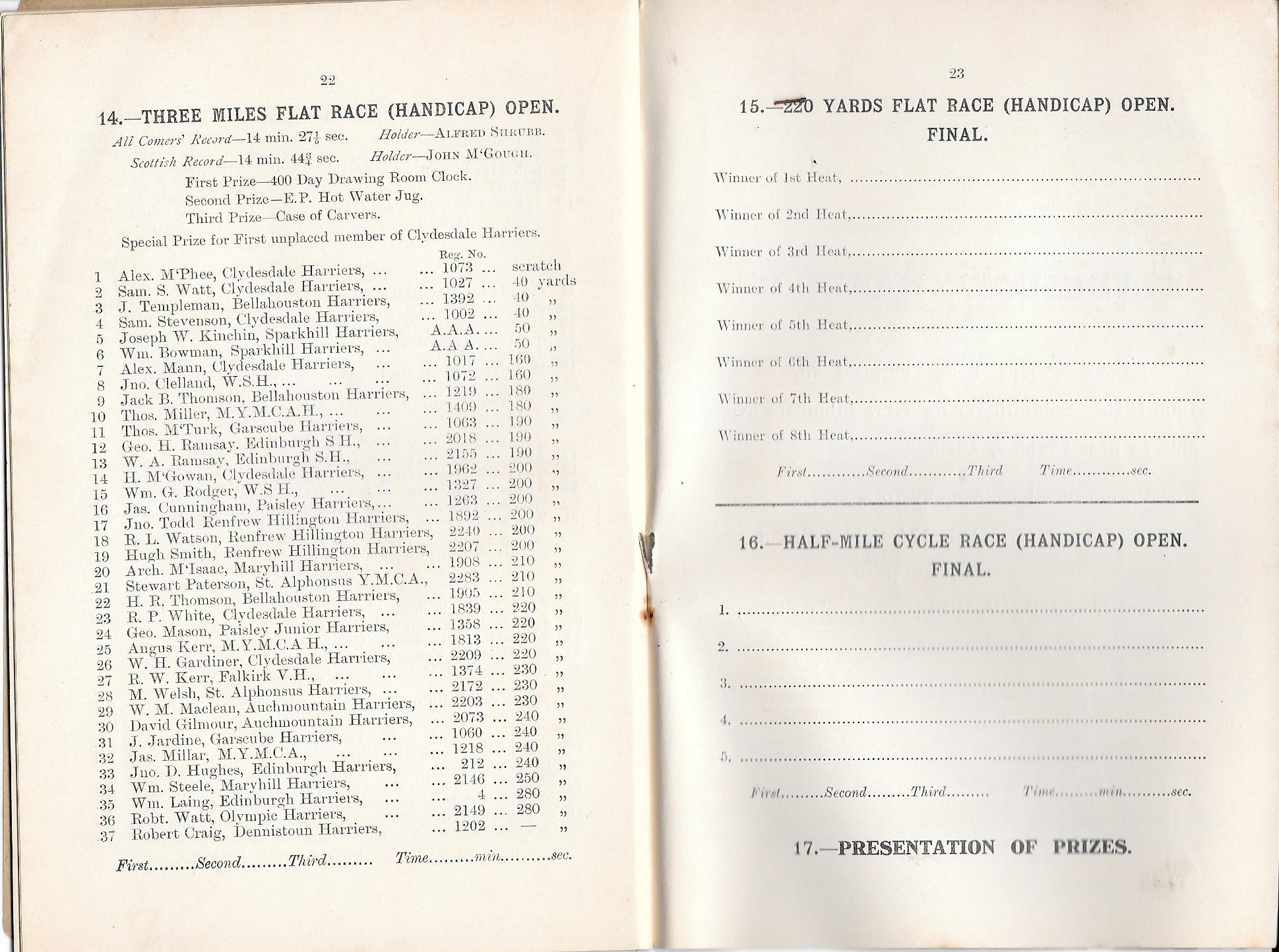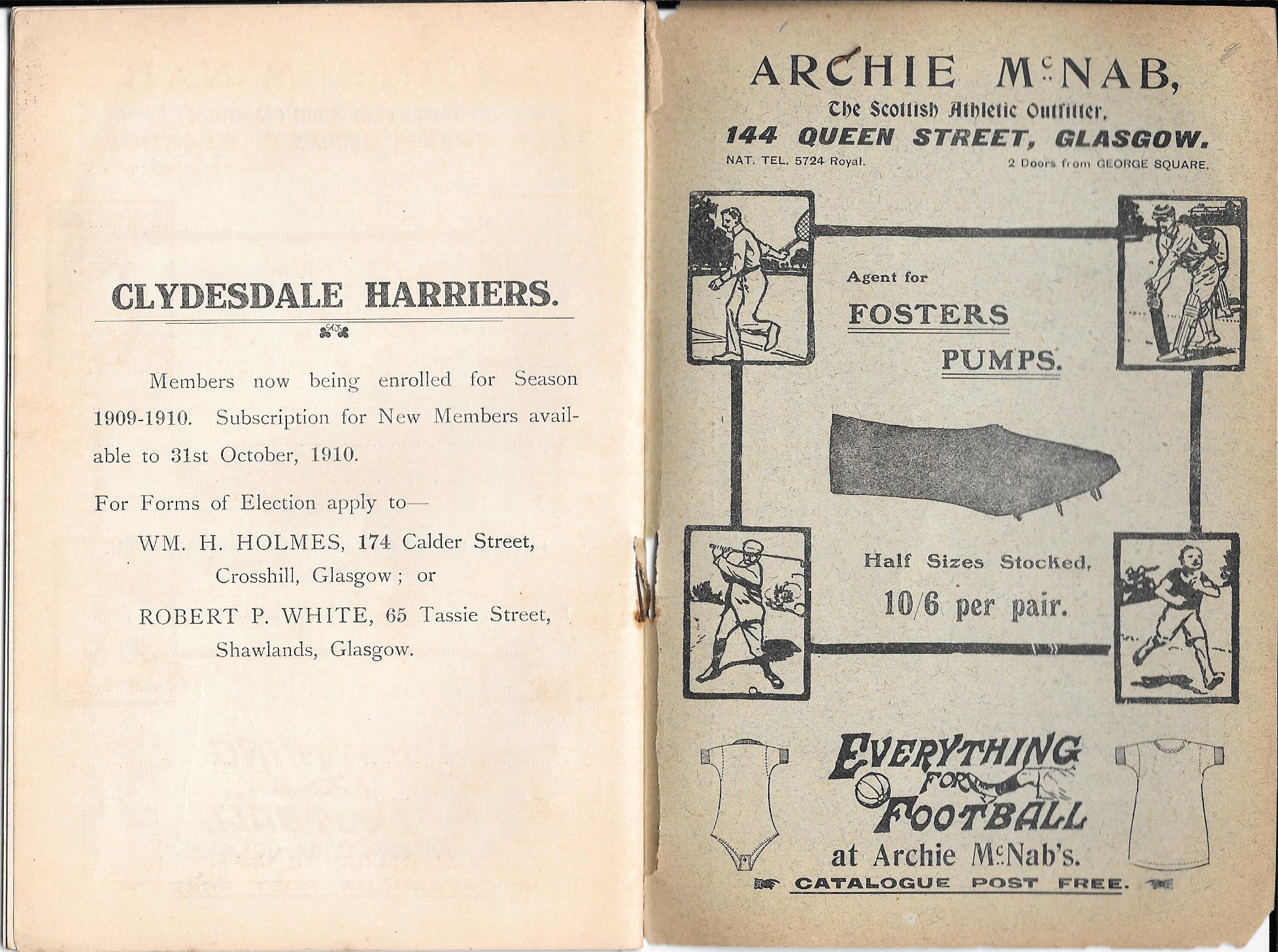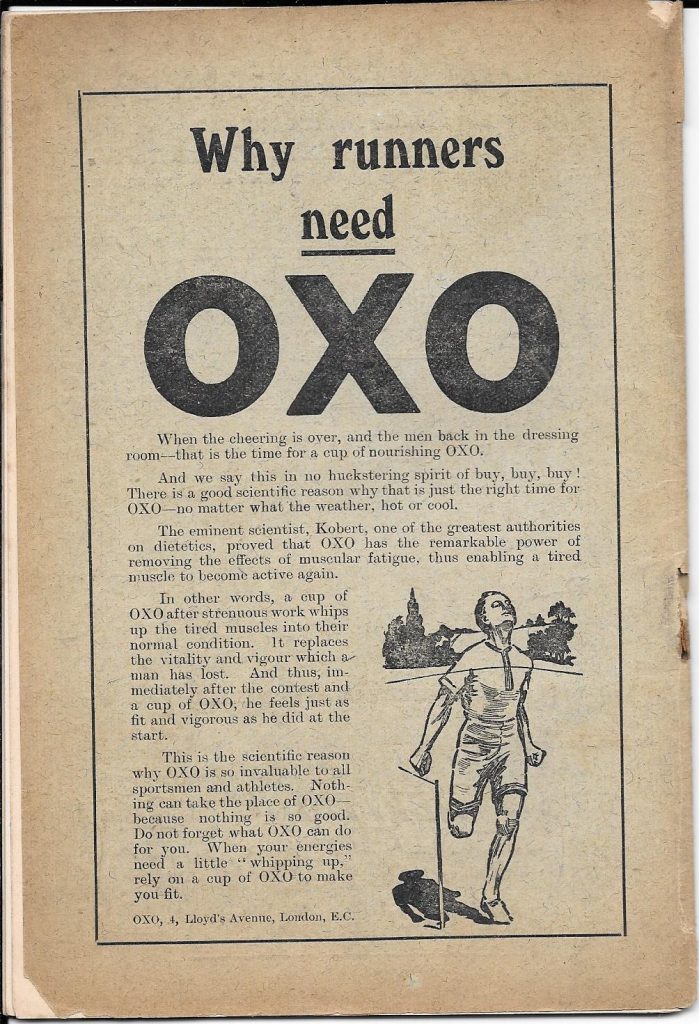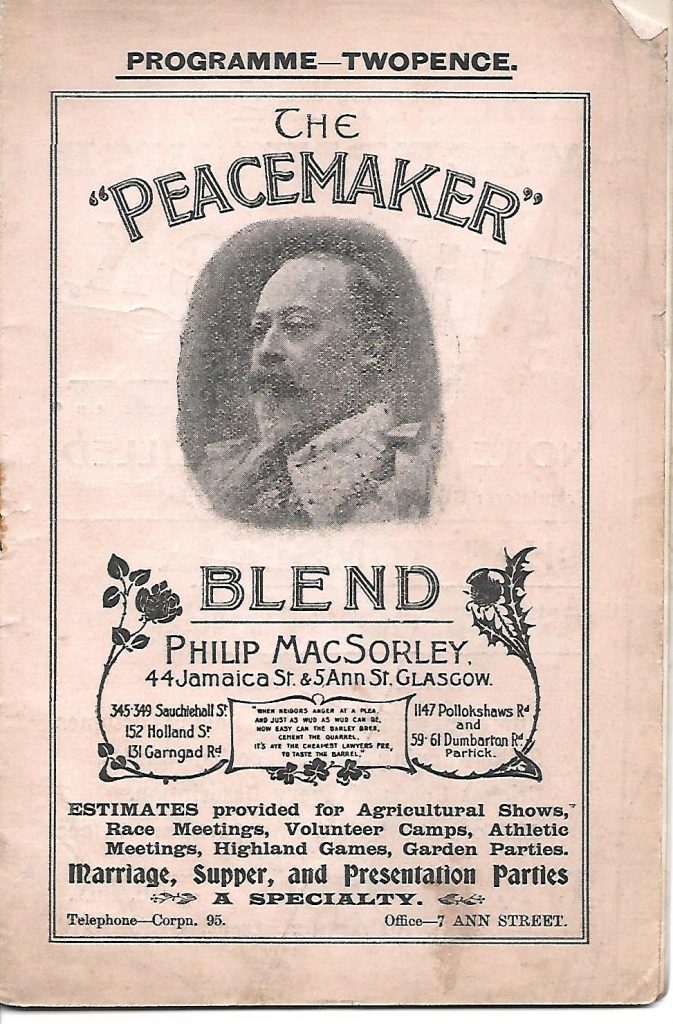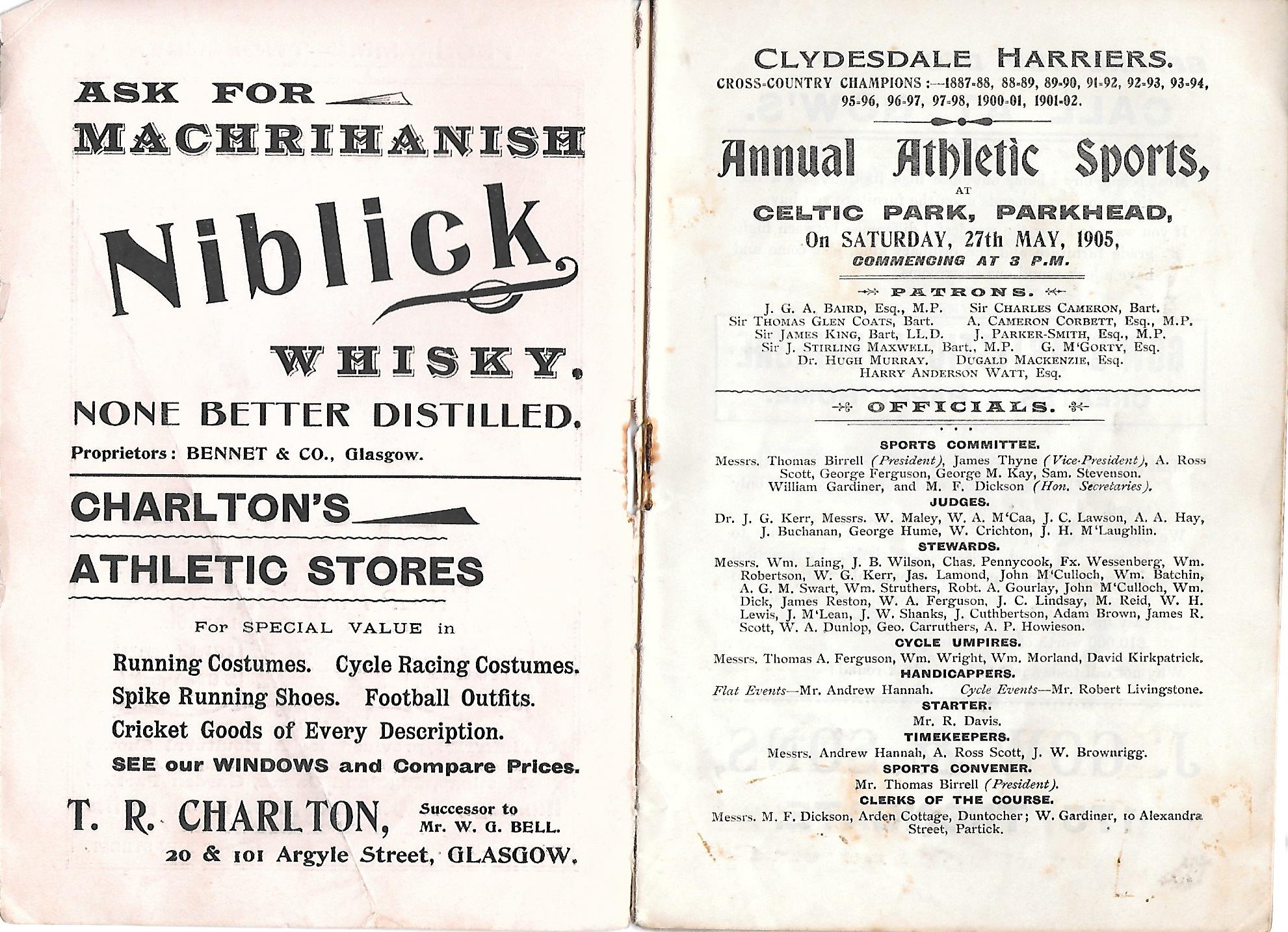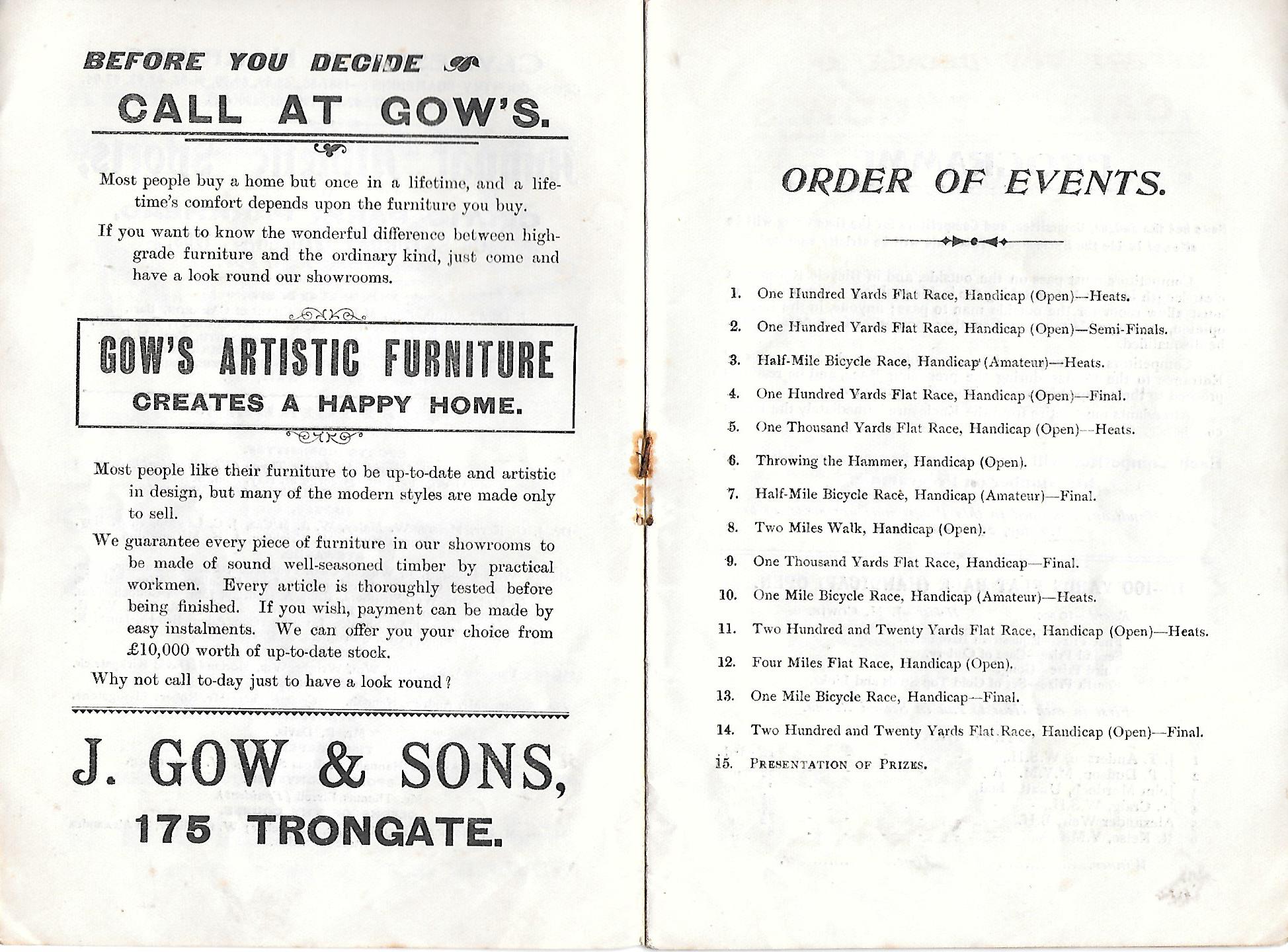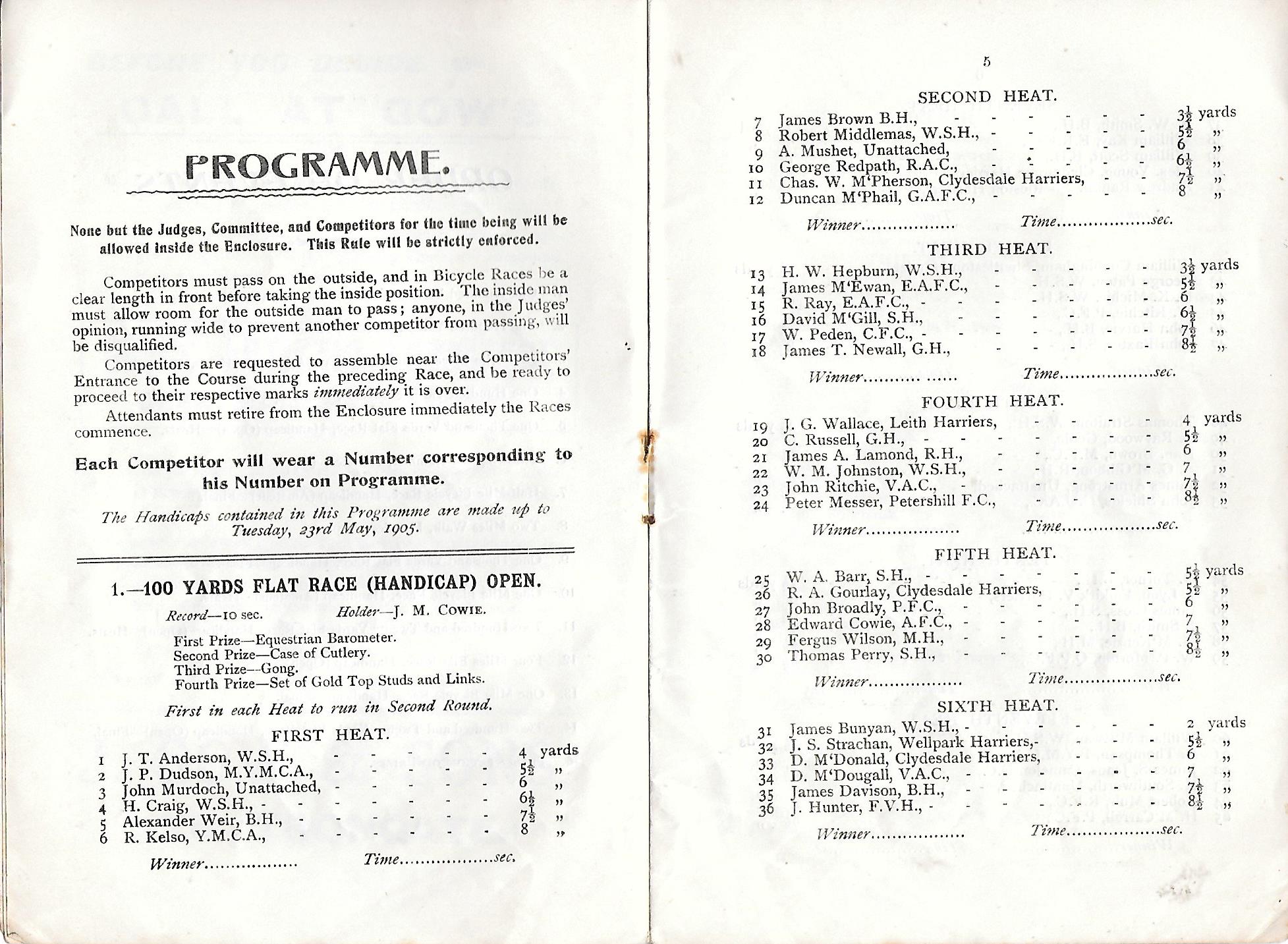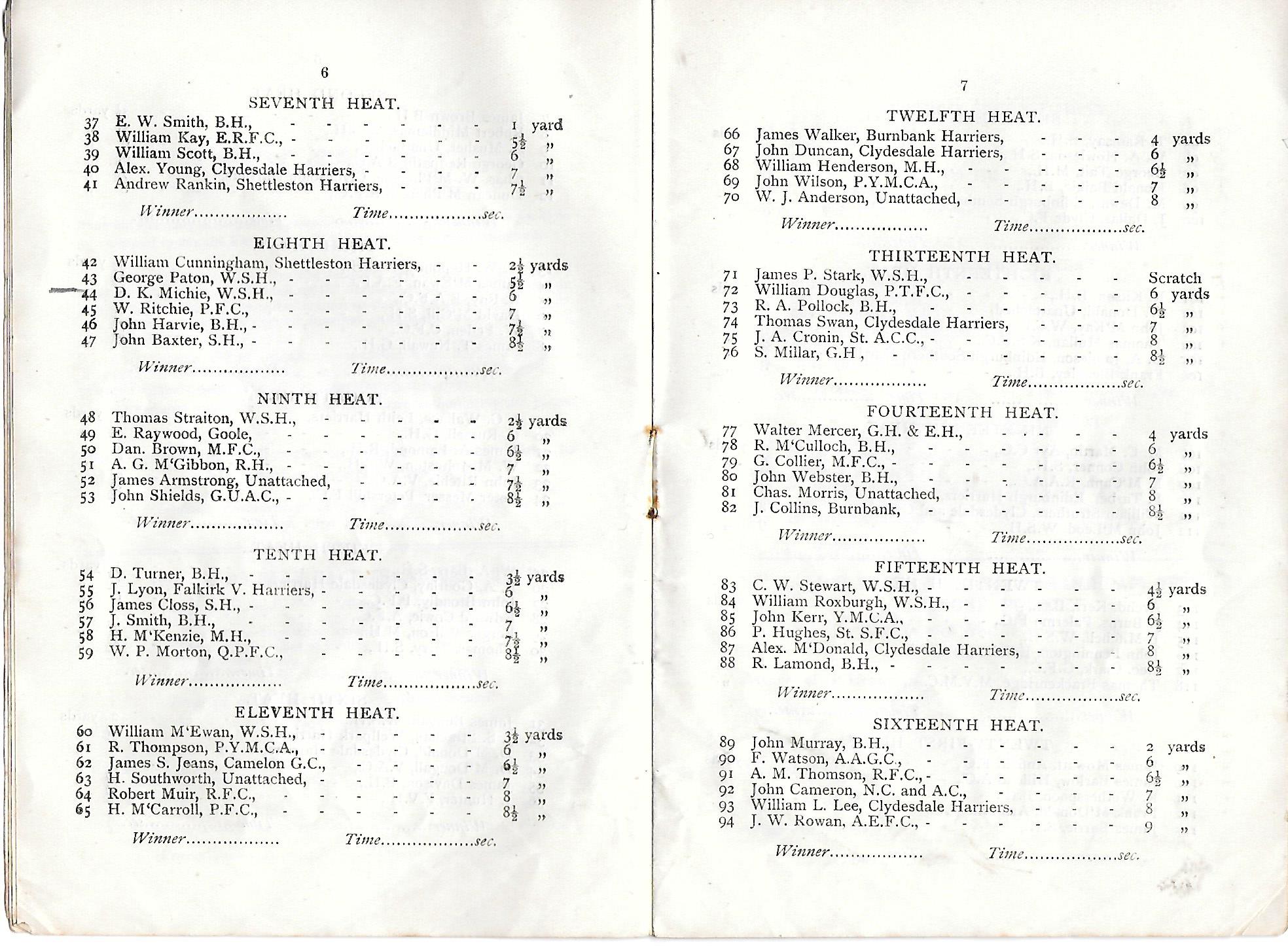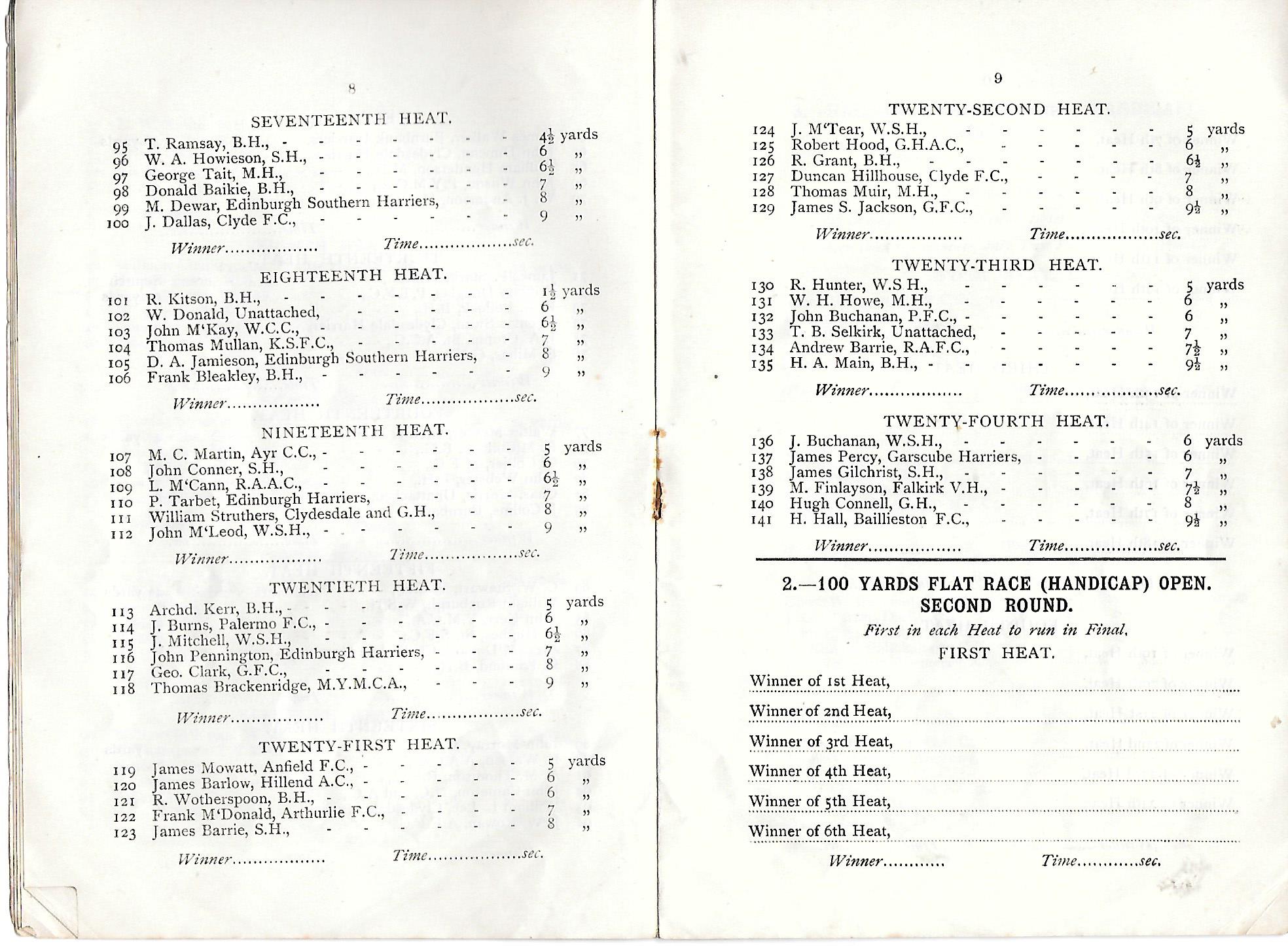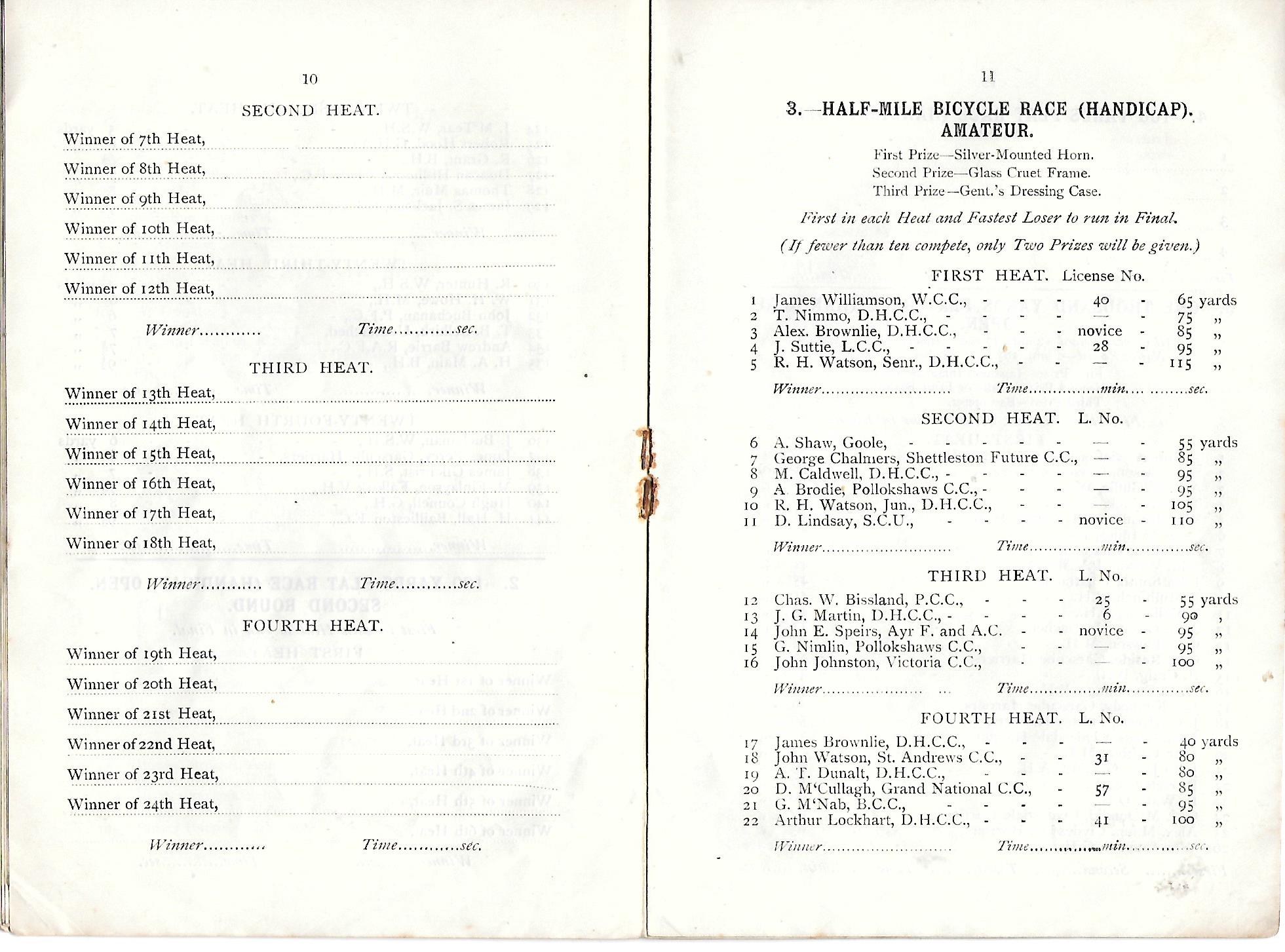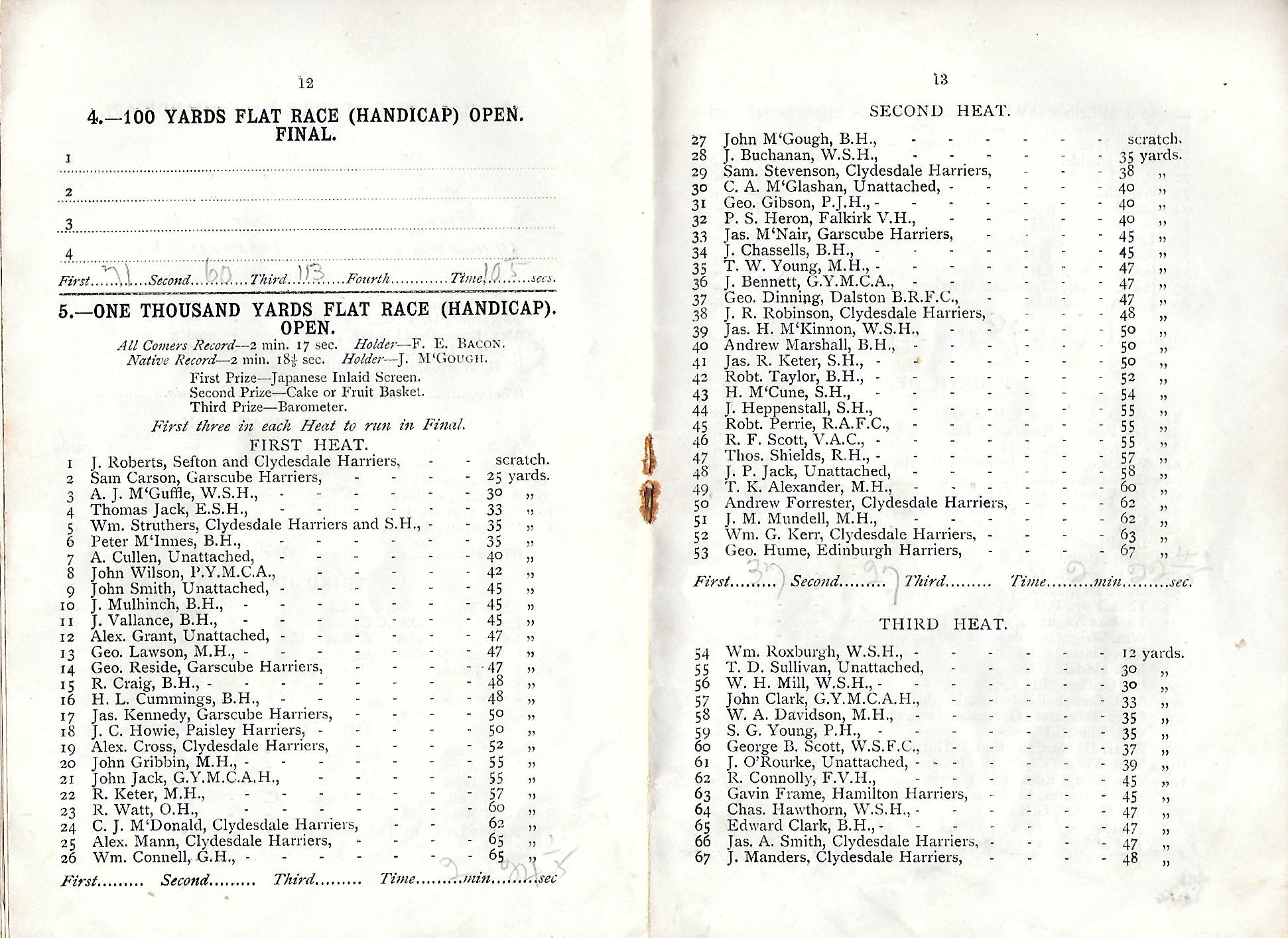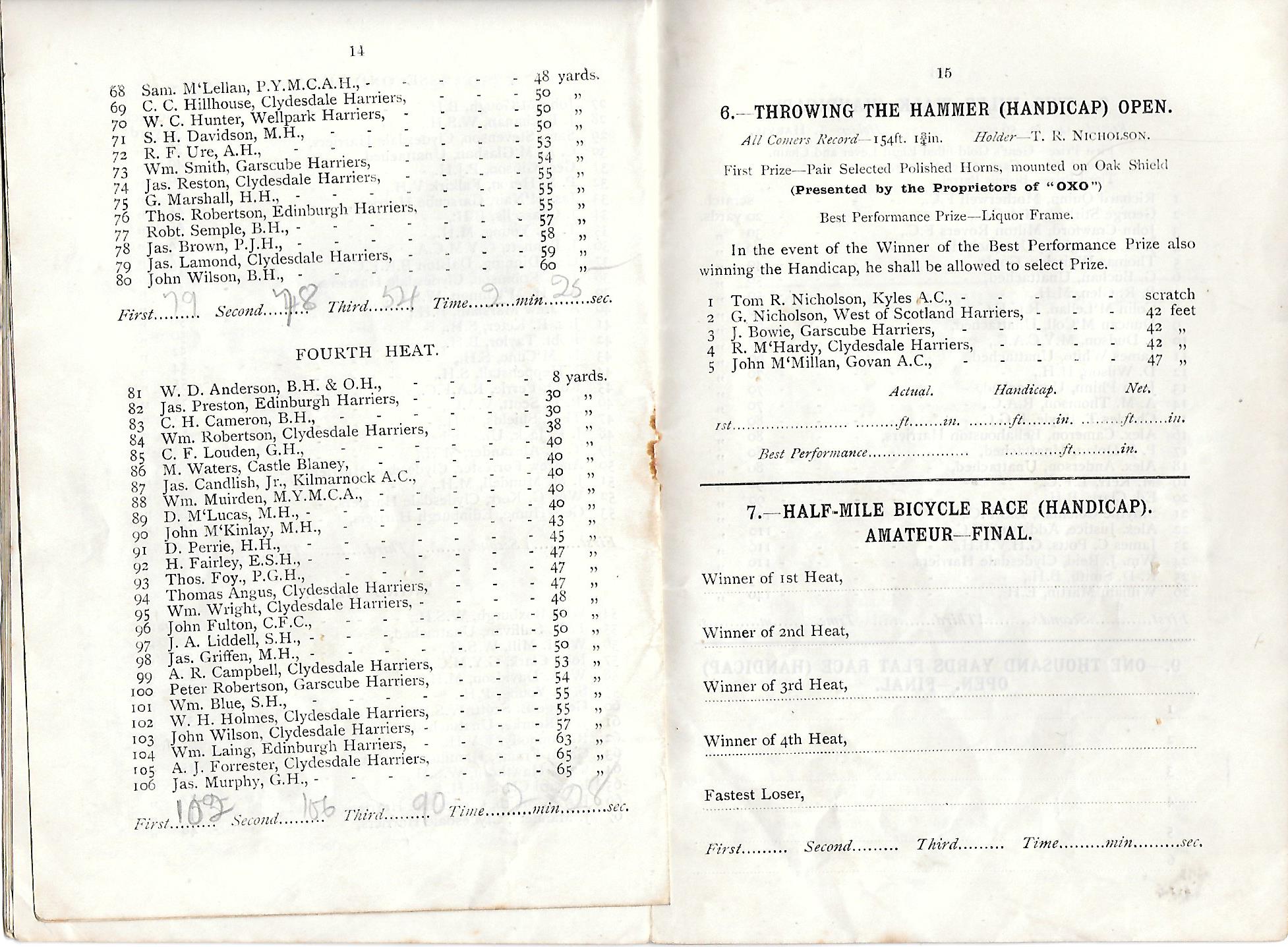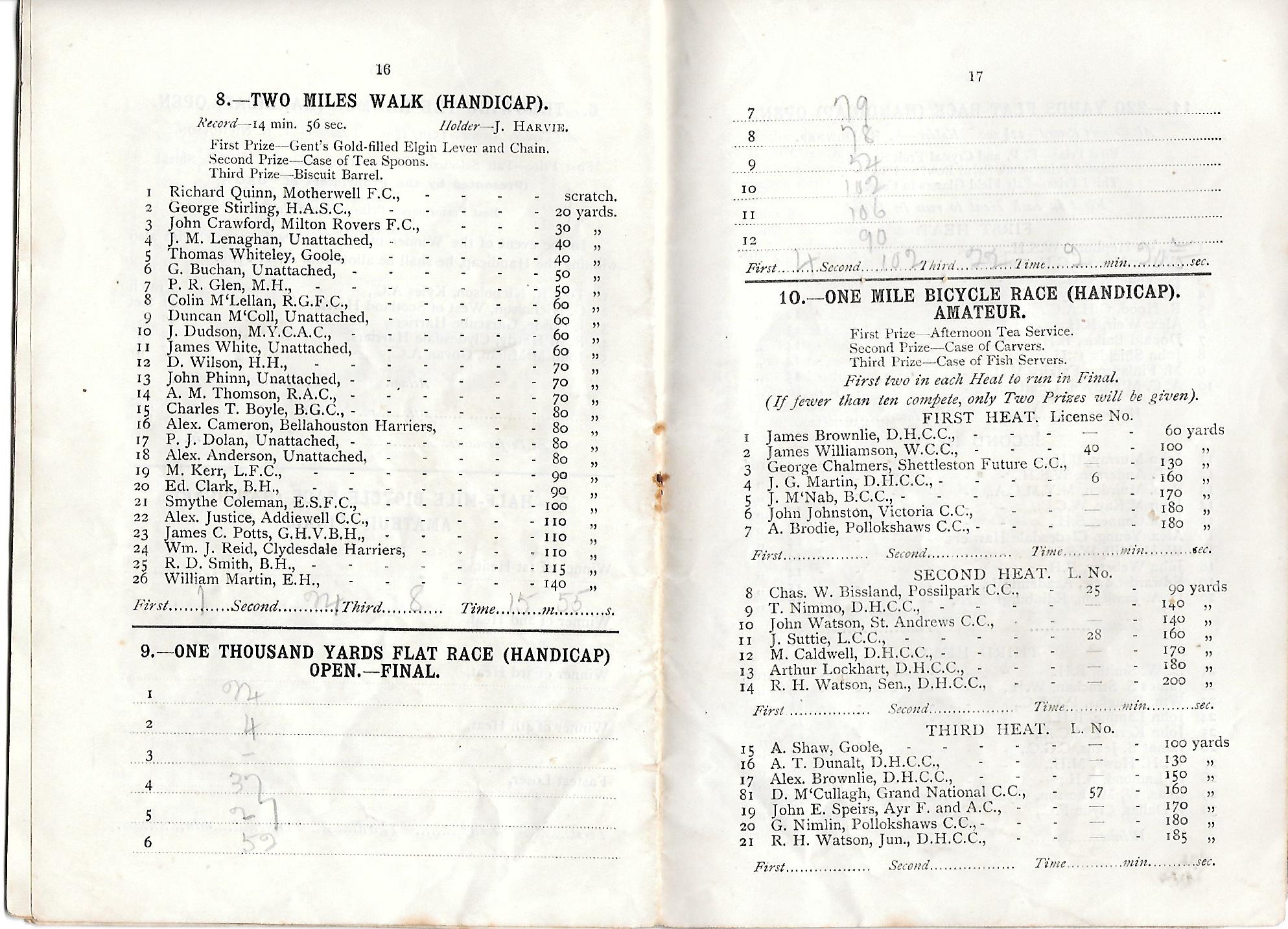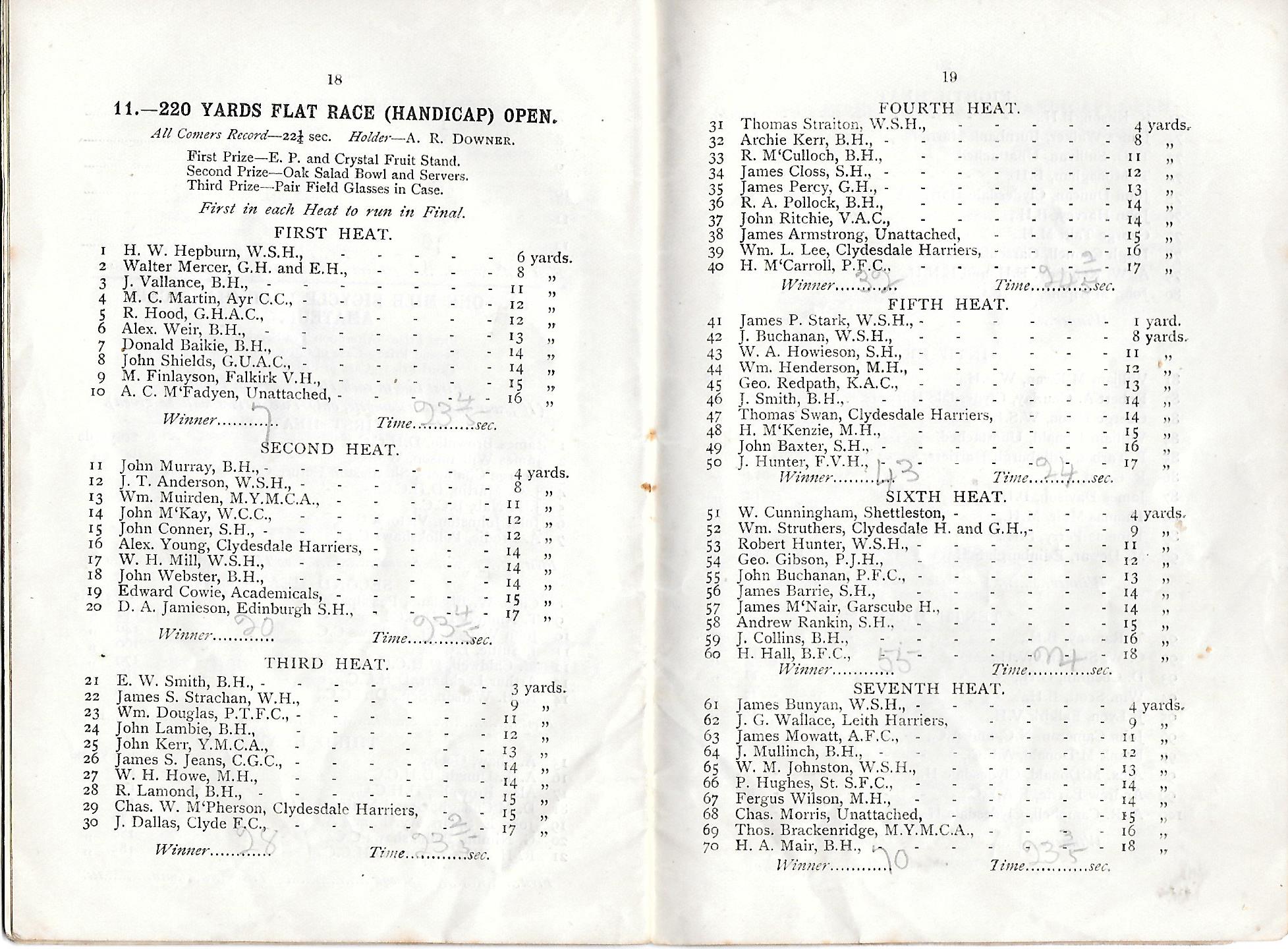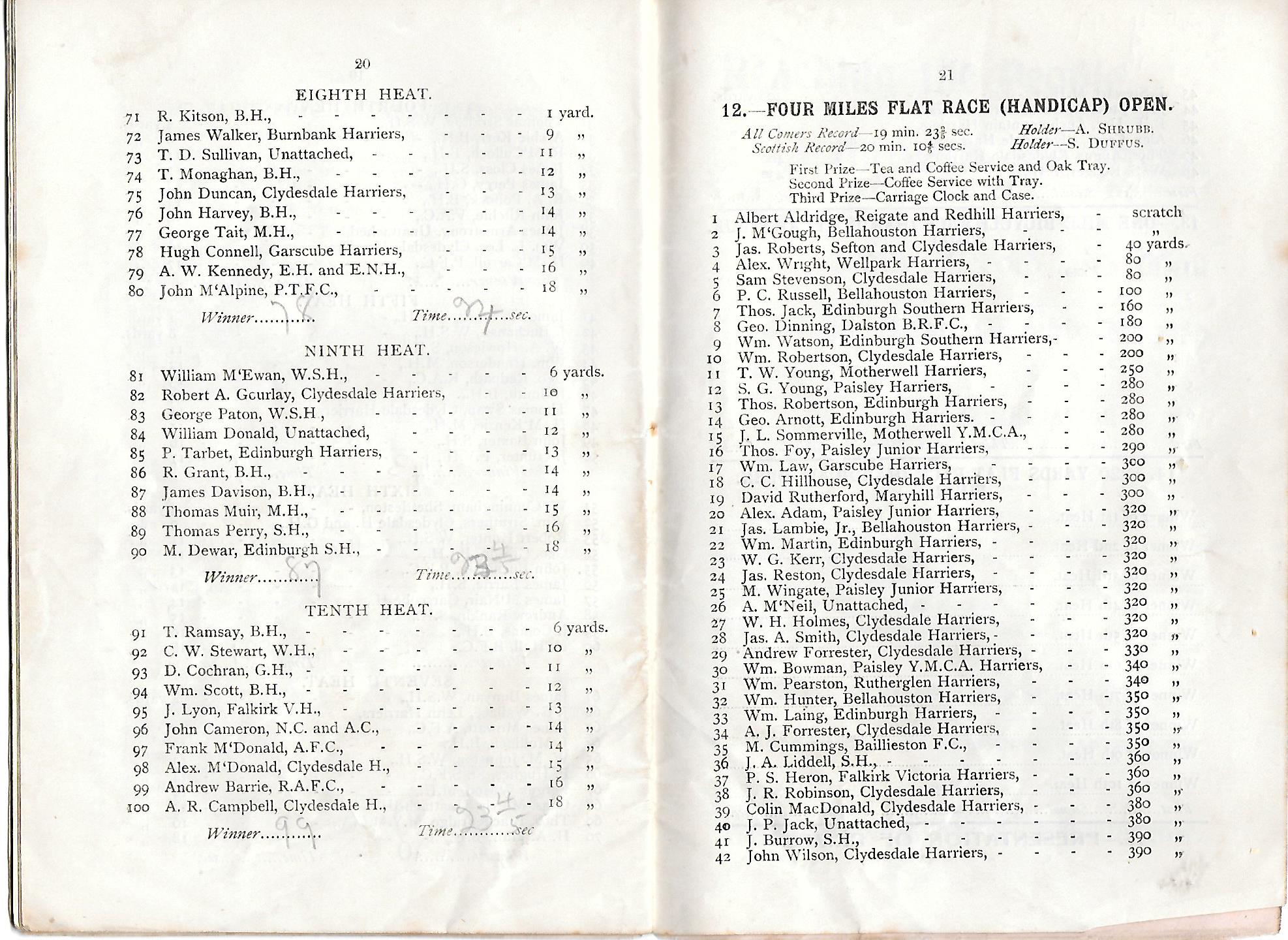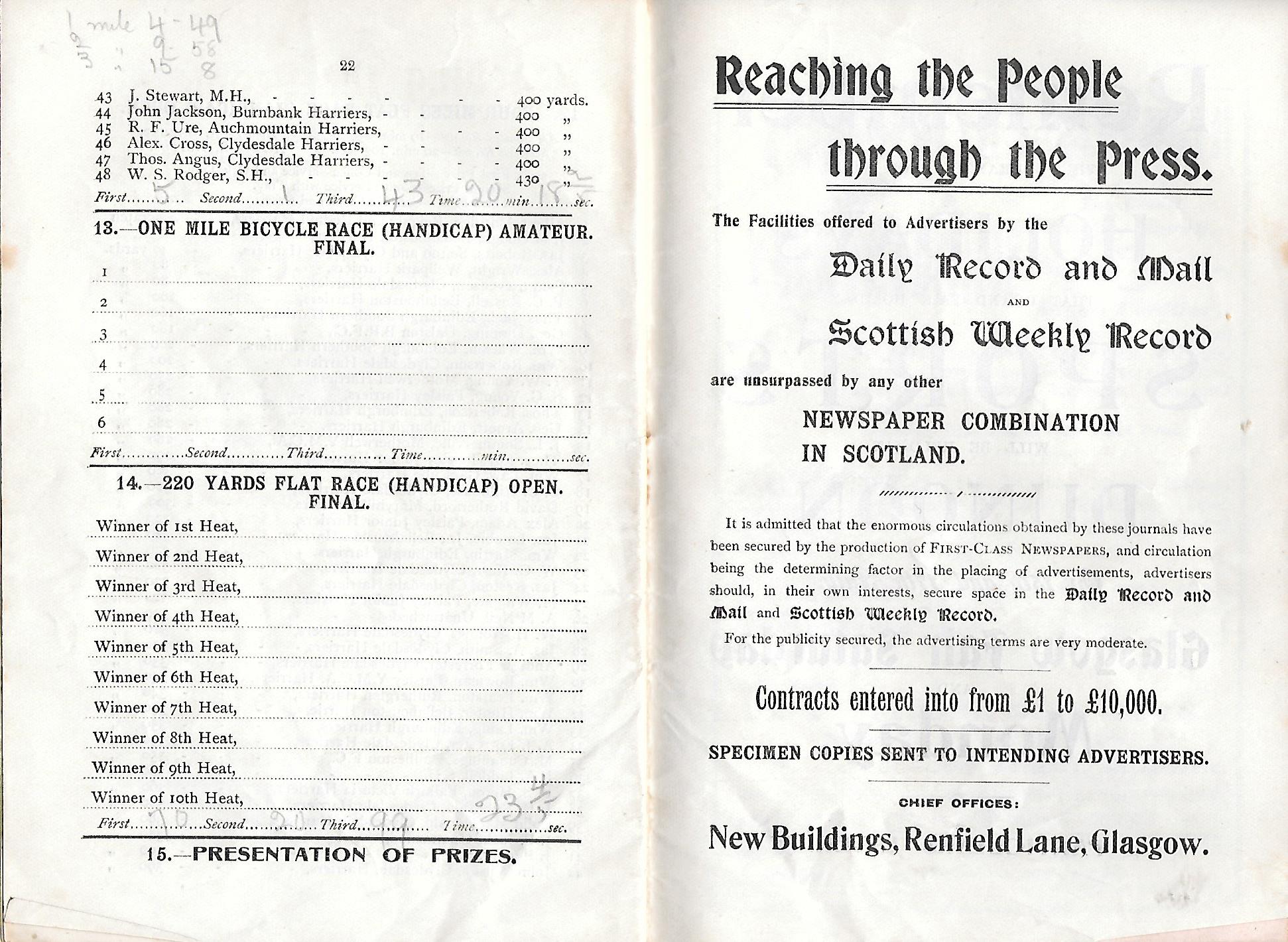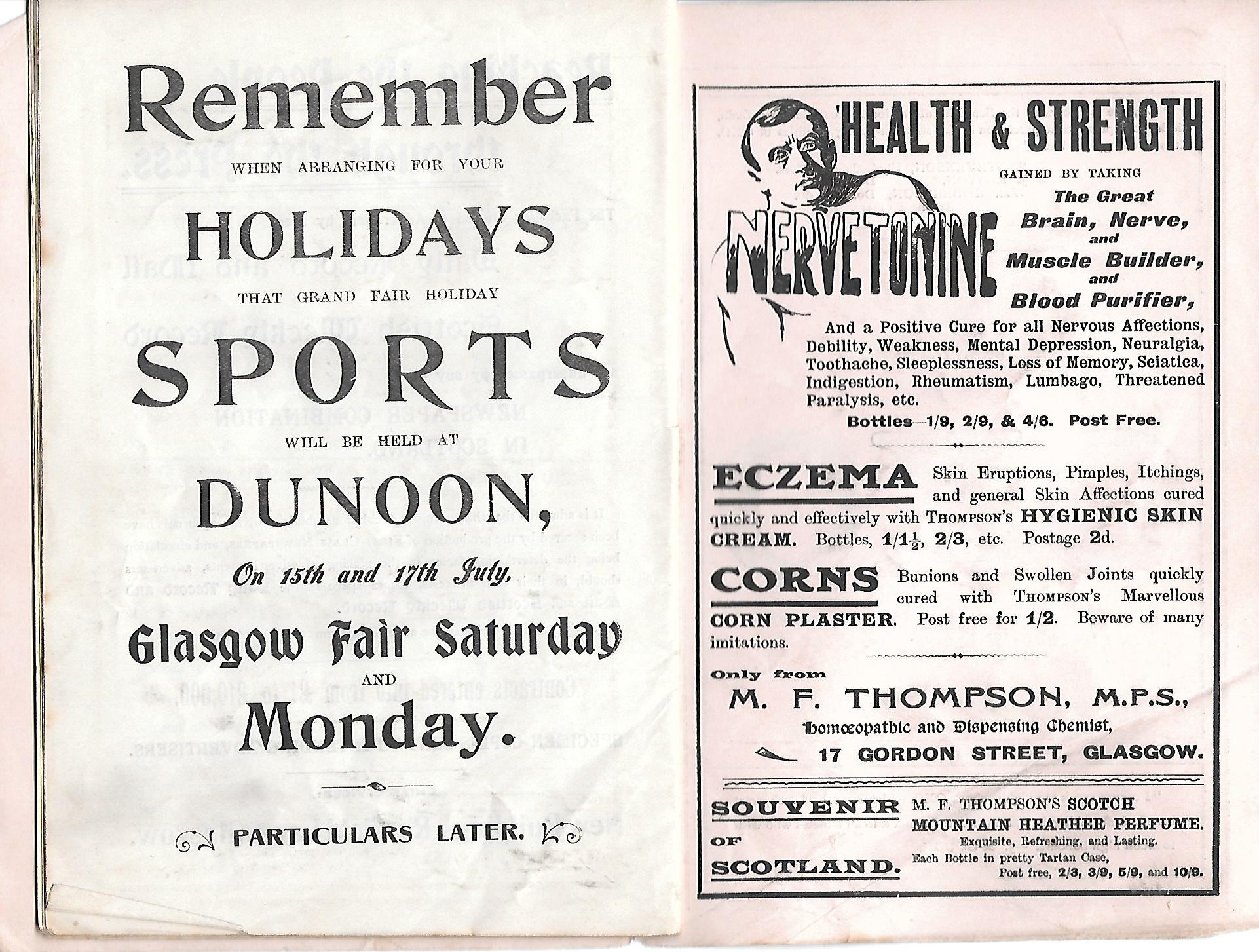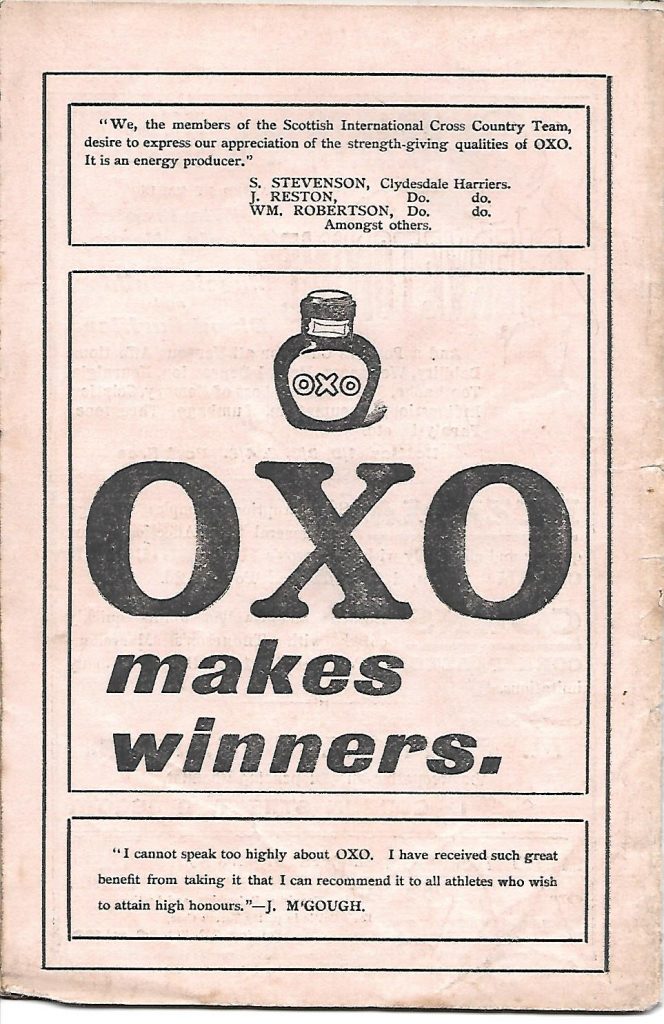Before Ian Donald joined the club in 1964, Clydesdale Harriers had last won medals in the Scottish Cross Country Championships in 1955 when they were third. That generation of runners had almost all departed: some like John Hume and Jackie Hislop emigrated, some like Bobby Clark left the area altogether and others like John Wright had been injured and were out of top class running. Solid team performances had been put in by good runners like Johnny B Maclachlan, Neil Buchanan, young Bobby Shields (who would go on to great things as a hill runner) and Pat Younger. Club spirit was still high but nothing major had been won in the ten years before Ian joined the club in 1964. From the time when he won his first team gold medals as a Youth for Shettleston in 1955, he had been used to being in winning teams. The record before us was impressive. In the Edinburgh to Glasgow Relay, Shettleston Harriers had been 2nd, 3rd, 1st, 1st, 1st, 5th, 4th, 6th over the period and were lamenting not winning medals, while Clydesdale were 5th, 5th , 11th, 15th, 15th, 18th, 13th, 18th and rejoicing in ‘making the race’ and hoping for the most meritorious medals. The story in the National Cross Country Championships was similar with Shettleston winning four in a row from 1959 – 1963. To some extent ambition had gone, a lot of the confidence had gone. But Ian had a pedigree that could not be denied and it could not help influence the club members.
Ian joined the club in December 1964 after training with us from April. He had won many gold medals as part of Shettleston Senior Men’s teams over the years in the
- National Cross Country Championships (gold in 1959, 1960, 1961, 1962);
- Edinburgh to Glasgow Relay Race (1960 and 1961);
- District Championships – two gold, two silver and two bronze between 1959 and 1964;
- County Championships – one gold and three silver between ’60 and ’63;
- He had competed at British level in the London – Brighton race four times (’59, ’60, ’61, ’62)
He was also the Shettleston Club Champion in seasons 1962/63 and ‘63/’64 so he was a quality athlete probably at the peak of his career.
He had moved to live in Old Kilpatrick when he started work at Maclehose the Printers in the West End of Glasgow. His presence started building confidence in club members without him realising that he was doing it. The fact that a runner of his calibre would leave a successful team and join up was in itself a boost but there were other factors about Ian. First, he trained with the club at least twice a week, more often three times and on occasion more than that. Just by running with an acknowledged top runner, club members felt better. As in every club, when a new member comes along the club ‘top guns’ have a go at him. To their surprise they found that they could run with him for further than they might have thought they could and at times even outrun him in training. This all helped. Second, he very seldom spoke of his previous club but when he started to say that training was as hard as it was at Shettleston and that as a club we should be doing better, we believed him. The fact that Shettleston didn’t want to lose him was further recommendation if more were needed. When his change of club form arrived at the SCCU Committee, the Shettleston representative was reduced to arguing that he hadn’t moved from one town to another because Barrachnie was not a town and Old Kilpatrick was not a town either! It was a petty argument but virulently argued, albeit in vain.
After he joined the club he ran in every cross country race that he could and in all club championships. In fact his very first race was the day after he got clearance from the SAAA. This was the Dunbartonshire Championships at Dumbarton where Ian (second behind Lachie Stewart) with Johnny B Maclachlan, Ian Leggett and Bobby Shields was a member of the winning team. He went on to win the club championship, the Hannah Cup for the fastest time in the handicap race and the Dan MacDonald Cup for the highest points total in Championship races over the winter. The impact was immediate and massive. In the summer of 1965 he was second in the County Three Miles Championships, second in the West District Six Miles Championships and ended the summer with fourth place in the Ben Nevis Race – young Bobby Shields was seven places back. In between he raced on the roads and on the track as well as over the hills. Like most of the top men Ian was never a big time runner who did his own thing and raced when he felt like it. Every winter he raced in everything from the McAndrew Relays at the start of October right through to the National Championships and beyond. In cross country races, a lot was learned just going over the trail with him before a cross country race. He was the best ‘reader’ of a trail that I ever met. At the start of 1966 he won the race at Stewarton then was eleventh in the National Cross Country Championships – the highest by a Clydesdale since 1955. At the AGM in 1967 Jim Shields “congratulated the club on a fairly successful season emphasising the leadership of Ian Donald”. (Extract from the club Minute Book)
At this time, the club had organised various outings to the Glen Orchy Ski Hut, to Ben Lomond at New Year, and so on and Ian and Helen supported these whole heartedly. The club also had an annual outing to Ben Lomond on New Year’s Day led by David Bowman and Ian and Helen supported these too. Club presentations – they had to come because he had won so much! They were also part of a group with David and Evelyn Bowman, John and Janice Wright, Ian and Cathie Leggett and Brian and Betty McAusland at every Scottish Marathon Club Presentation. Helen had been a Scottish International 1500 metres athlete in her own right when with Bellahouston Harriers and for a time helped with the coaching of the girls in the club. They were both very popular.
Ian and Helen on Ben Nevis in 1963
In summer he turned out in club teams on the road and track but preferred hill running and racing. Bobby Shields had already absorbed the hill running culture before Ian arrived and he was ambitious in that direction. A very gifted hill runner whose wins were all his own, he would be the first to say that he learned a lot from Ian and it was with his help that he won the Ben Nevis race in 1967. Bobby had been eleventh in the Ben race in 1965, third in 1966 with Ian one place ahead and won it in 1967. He went on to be in the first ten thirteen times. Ian had first run the Ben Nevis race in 1959 where he finished seventeenth in 2:03:03 in his first season as a hill runner. A year later Ian won Goatfell in Arran, set a record when winning the Mamore Hill race at Kinlochleven and ran again in the Ben Nevis race where he was twenty ninth in 2:7:48. Although he won hill races from Goatfell to Newtonmore he never won the Ben Nevis in any of his attempts although he was second in 1966 with Bobby Shields third. He was acknowledged as one of the best in the business.
A typical summer would include a whole range of events – in 1967 for instance he won the club cross country championships at the start of the year, had fastest time in the Hannah Cup, led the team home in the National Championships, finished second in the Balloch to Clydebank in 63:36, was second again at Gourock in the 14 miles in 1:14:47, finished second in the County Track 3 Miles to Colin Martin, ran 52:04 for the ten miles track on progressively deteriorating cinders in the SAAA Championships, ran the 14.5 miles Dunblane Road Race in 1:22:30, tackled the Ben Nevis race (73rd in 2:05 against his pb of 1:47 35 a year earlier), then into the cross country season. He had the fastest club time in the McAndrew Relays and assisted the team to second place in the County relays with second fastest time behind Lachie Stewart and the results of the Edinburgh to Glasgow and Midlands events are already described in other places. One unusual feature of 1967 was the fact that he ran in a special invitation one hour race at Cowal Highland Games where he was placed third with a total distance of 11 miles 600 yards – ie averaging well inside five and a half minutes per mile on a dreadful cinder track. (Incidentally, the race had a proliferation of sponsors one of whom awarded the winner (Lachie Stewart) a case of cigarettes in addition to his race prize!) Helen said recently in a letter that he just loved racing and was never happier when taking part in a competition.
His record in club races is first class. Club Champion in 1965, 1966, 1967, 1968 and 1969, winner of the Hannah Cup for fastest time in the Six Mile Cross Country Handicap in 1965, 1966, 1967 and 1969, Sinclair Trophy for Five Miles Road Championship in 1966 and 1967, Dan McDonald Trophy for the winter Points Contest in 1965, 1966 and 1967 and the Semple Merit Award for an outstanding performance during the winter season in 1967. In the Hannah Cup on one occasion he was handicapped so severely that he was still waiting to start as scratch man when Jim Sweeney who had started first passed on his way into the second of three two mile laps! Jim boasted for years of the time he passed Ian Donald “as if he was standing still.” When it came to the prestigious Edinburgh to Glasgow Relay, Ian ran in twelve races on stages one, two, four, five, six and eight. Whatever the club needed him to do he did..
What did we gain from Ian? He broadened our horizons and restored the ambition. Before Ian came, one of the longest serving club members at the time who should have known better said that we should aim for the County Championships because that was the only thing we could win – Ian changed that. In the time from 1969 to 1980 the club won more medals in the West District Cross Country Championships than any other club – that included three first places in an event that we had never won. A lot of that is down to Ian’s influence. He also introduced an element of hardness into the attitudes and on training runs which had started to become quite soft. For instance I remember on a training run with Ian, Phil Dolan and Allan Faulds, Allan started to drop back a bit on the return through Drumchapel. I rather naively asked if we should wait for him. Ian’s growled reply was to the effect that “Well, he wouldn’t wait for us.” So we all went a bit harder even although we were suffering a bit ourselves as well. It did not matter that Allan had probably been training at lunch time.
Ian’s influence on the young Phil Dolan when he advised him to apply for a training permit for Westerlands in Glasgow where he could train with many of the best in the country should also be remembered. Phil points to this a key factor in his athletics development. His influence on Bobby Shields has already been noted. The basic truth is that no one in the club failed to be impressed with his quiet determination.
He was not interested only in athletics – he was a really good hillwalker and climber and was quickly adopted into the club’s hill walking group and the social life that revolved around guys like Pat Younger and Frank Kielty. He is pictured on the left at the top of Ben Nevis. Perhaps more surprisingly he and his wife Helen were keen gardeners and cultivators of Alpine Plants in particular. A member of the Scottish Rock Garden Club he won their prestigious Wilson Medal for Alpines several times and gardeners from all over Scotland would come to see his plants at Old Kilpatrick and were welcomed by Ian and Helen.
Ian was a friend of Walter Ross of Garscube Harriers who almost single handedly founded the Scottish Veteran Harriers Club and was also publisher of the ‘Scots Athlete’ monthly magazine. Walter gave Ian a signed and bound copy of the magazine for 1946-47 with the inscription: “To my friend, Ian C Donald in grateful appreciation of your enthusiasm for athletics and wishing you personal success which must come on account of your devotion, Yours sincerely, Walter J Ross, Glasgow, 19th January 1962”
Ian gave me this volume as a gift that I still treasure. Incidentally it was the same Walter Ross who made the presentation to John B Hume in Vancouver in 1988. Ian was a real gentleman with never a harsh word about anyone, with friends everywhere. It was not only on the race course that he never gave in though: there is the story of Ian being approached in Queen Street Station in Glasgow by a well dressed individual who had a plausible story about losing his wallet and needing 2/6 for the train home. Ian gave him the money and then saw him leave the station and cross George Square. He then followed the chap into the Ingram pub where he saw him buying a drink. He went right up to him and asked for the money back – and got it! You didn’t mess around with Ian but the story does also indicate his preparedness to help anyone who needed it. Most of us would have refused and, if we did not, we wouldn’t have been brave enough to go and ask for the cash back.
When it was known that he had leukaemia, we were all upset. For a while, since the early 1970’s, we thought it was glandular fever that was his problem. When we discovered the truth we thought it was the end of his running. Not a bit of it. He ran for several more years even while enduring chemo therapy. For instance, in August 1976 he ran in the one off hill race ‘The Maidens of Mamore’ which covered Binnean Mor and Na Gruagaichean and was eighth in 2:03:44 just ahead of Aberdeen’s Mel Edwrads. Naturally the racing was restricted by his illness but I remember running a club cross country championships with Ian and exchanging third and fourth places all the way round. We were having a real ding dong battle. At the start of the third and last lap I asked him if he were intending to run in the Scottish Vets Championship in a couple of weeks time. Was he struggling? Not a bit – he simply asked where and when it was being held and he might go. Not a pause in his breathing or his rhythm. Then it dawned on me – he had a very serious illness and I was training 65+ miles a week and furthermore I was struggling.
He was a real inspiration to the whole club and to some of us on a more personal level.
